Expect Order delays 8-17 Aug due to holidays. Thanks for your patience.

- St Christophers
- Mens Necklaces
- Men's Bracelets
- Mens St Christopher Necklaces
- Gold Jewellery
- Unisex & Small Men's Necklaces
- Men's Rings
- Spares & Essentials
- Womens St Christopher Necklaces
- Solid Gold Jewellery
- Unisex & Women's Bracelets
- Silver Charms
- Unisex Travel Necklaces
- Travel Bracelets
- Keyrings & Backpack Charms
Men's Jewellery
- Men's St Christopher Necklaces


Travel Viking Rune Personalised Silver Necklace

Large Travel Safe Compass Personalised St Christopher Cord Necklace

Vintage Style 20mm Personalised Silver St Christopher Necklace

St Christopher Dog Tag Personalised Silver Necklace
Free worldwide delivery + gift wrap on all orders
Women's Jewellery
- Women's St Christopher Necklaces
- Womens Bracelets
- Essentials & Spares

Travel Safe Outline Compass Small St Christopher Silver Necklace
Personalised St Christopher Silver Necklace

St Christopher Ellipse Border Personalised Silver Necklace

Anchor and Passport Personalised Silver Necklace
This section doesn’t currently include any content. Add content to this section using the sidebar.
Add description and links to your promotion
Your headline
Image caption appears here
Your product's name
Add your deal, information or promotional text

The sacred marks of the runic alphabet are one of the earliest forms of writing. Historically they have been used as protective symbols carved into wood or stone that bring luck and protection to those who carried them. In this post, learn about the history of Viking runes and the meaning of 6 runes that are powerful symbols to carry with you when travelling. These are the 6 runic symbols that we engrave on our jewellery to bring the energy luck, protection, blessings and happiness to your journey.

Viking Travel Rune Silver Band Ring
What are Runes?
Runes are letters in the ancient Runic alphabet, also known as "futhark" and were developed in Scandinavia. The earliest runic inscriptions date back to 160AD. The Runic alphabet was the first system of writing that was ever developed! This alphabet was used to write various Germanic languages before the adoption of the Latin alphabet. Viking runes are, however, not just a means of communication through language. The word ‘rune’ means secret or mystery. The Latin alphabet replaced the Runic alphabet over 1000 years ago but its use has persisted for other specialised purposes such as divination and protection. In countries like Sweden, you can still find large ancient stone circles made out of Runic symbols. Runes are generally made up of vertical lines with branches or ‘twigs’ jutting out diagonally, upwards, downwards or in a curve. They can be written from left to right and right to left. Not all the original names of each rune are known and the names we do know have been reconstructed from Common Germanic and Old English.

The history of Viking Runes
The history of the rune is potent. They are some of the most significant symbols of our time.The origin of the runic alphabet is shrouded in mystery. The mythological origin of Runes has always been associated with the god of magic and wisdom, Odin. Odin was always in search of absolute knowledge but this knowledge could not be attained by the simplistic human senses. The 24 magical runes were revealed to Odin as his untimely death was drawing near. As the cults of Odin rose to power, runes remained under his magical domain. The earliest confirmed runic inscription dates back to 160AD in Denmark. Scholars estimate the inscriptions result from at least 100 years of experience in writing in runes. Runes were prominently written and read from 160AD onwards. During the Viking Age, large amounts of inscribed runestones were erected throughout Scandinavia. Runes are found in countries with a history of Germanic-speaking people. This extended from Iceland to Scandinavia, England and Central Europe.

Viking Travel Rune Skinny Silver Band Ring
The meaning of Viking runic symbols
Runes were primarily created to function as letters to make up a language. But they were much more than just letters. Each rune symbol is a symbol of some cosmological power. To manually write or engrave a runic symbol was to invoke and direct the force it stood for. Each of the 24 runes has a name that is based on the first sound of each symbol. The name and look of each rune point to its philosophical and magical significance. Runes are a visual representation of spoken magic. The way each rune is pronounced and spoken has significance as well, like casting a spell. The words that runes make up contain meaning and intention in the sounds created when spoken. Runes are also believed to be meaningful symbols that can be read and understood by invisible powers who influence our physical world. This allows runes to be used for magical and mystical purposes. Runes were used to contact the dead and connect to different dimensions, for protection, divination, good luck and safety. Runes can be carved into wood, bone, shells, paper and stone. They can also be engraved onto metals such as silver and gold and worn as jewellery. By manually carving runes, a stronger connection is created between the rune and the person who carved it. All jewellery with Viking rune symbols made by Off the Map Jewellery has been manually engraved by hand.

Travel Rune Leather or Vegan Cord Necklace
Travelling with Viking rune symbols
Runes make the perfect travel charm. Travelling with runes will bring positive energy with you on your journey. There are many special runic symbols that we have interpreted to relate to travel and so we have used these symbols on our jewellery. Travelling with runes can provide you with protection and good luck on your journey. Runes carved into silver necklace pendants, bracelets and rings are the perfect travel charm to bring these ancient protective symbols into the modern age of travel.

Travel Rune Climbing Carabiner Silver Key Ring
Raido - Travel
Raido is the most significant rune for travel as that is exactly what it represents. Raido represents a journey. This can be a physical journey or a spiritual journey of awakening. Raido also symbolises evolution and putting things into perspective! These are two things that will almost certainly happen when travelling. This rune is all about movement, spontaneity, decision making and progress as we embark on our journey.

Dagaz - Enlightenment
Dagaz is a very special rune that is about enlightenment or awakening. This can represent moving from childhood to adulthood as one finds their feet in life and becomes independent. Dagaz symbolises change and having the power to create your own change for your higher purpose. Dagaz represents hope, illumination, positive change and optimism. This meaning makes the Dagaz symbol special as a graduation gift or a gift for someone moving out of home or overseas to start a new chapter in life.

Aligz - Protection
Aligz symbolises protection and defence instincts, making this a particularly powerful rune for leaping into the unknown and travelling to new places. In these circumstances, we can often feel as though we need some protection to keep ourselves safe. This symbol also represents intuition. Aligz is a powerful way to enhance your intuition so that you can better keep yourself protected and safe from dangerous situations. Call in your guardians to protect you with Aligz.

Berkano - New Beginnings
Berkano symbolises new beginnings, creation and fertility. This could be the birth of new life, projects, businesses, or relationships. It could also represent your rebirth. This is significant to travel as often when we set off on a journey around the world, especially if we are moving somewhere new to start fresh, we are embarking on a new beginning, leaving the old behind and maybe even going through an entire rebirth. We all know how significantly exploring the world can change your perspective on life! Berkano symbolises mental and physical growth, birth, renewal and creativity. It is a feminine symbol and also has healing qualities. This rune is perfect for someone starting a new chapter overseas or for someone who is embarking on a long-term adventure such as a gap year.

Fehu - Wealth Of The Land
Fehu is one of the most positive runic symbols representing wealth and prosperity. This is the perfect symbol to carry with you when you travel to protect you from financial misfortune as you carry around the energy of abundance. This is also about good luck and success, something that we can all benefit from when out on the road!

Ehwaz - Travel For Pleasure
Ehwaz is a beautiful runic symbol that is represented by love and pleasure. It symbolises moving forward with steady progress and change for the better. It symbolises transportation and movement, both of which are essential to a successful trip. Ehwaz also indicates teamwork, trust, friendship and loyalty. This is a wonderful rune symbol to travel with if you are travelling in partnership with others such as a romantic partner or group of friends. It will help raise the vibration of your travelling group and bring you closer together as you create unshakable bonds. If you are a solo traveller, this may have you make strong connections with new people that you may meet!
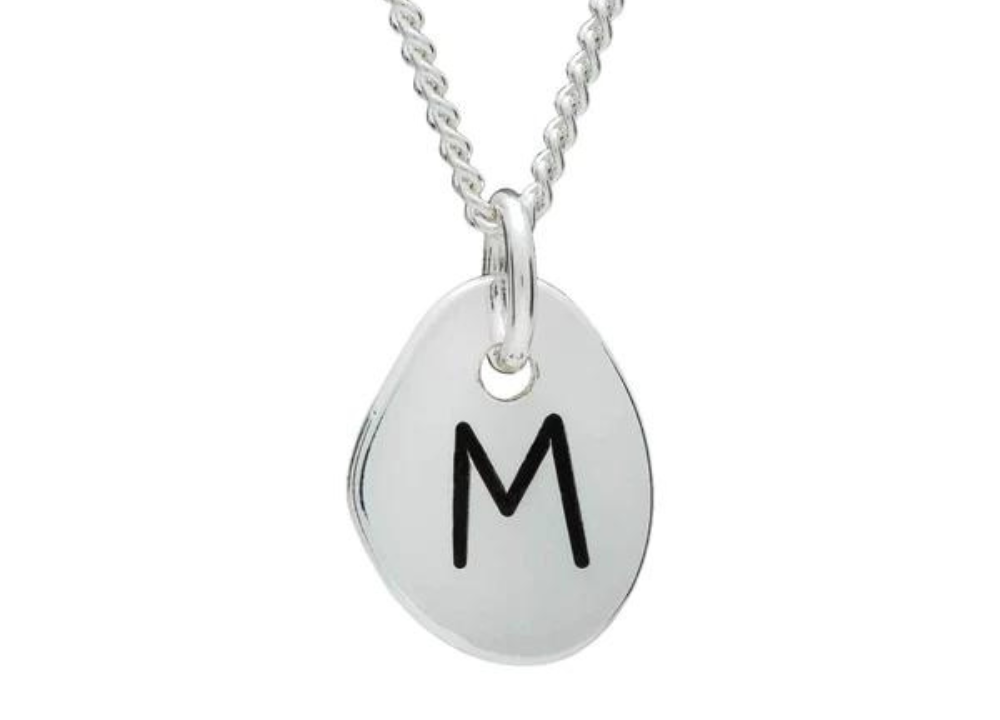
Choosing the right rune for you
When deciding which rune you would like to select to have on your necklace or keyring for yourself or as a gift, take a deep breath and close your eyes. Tune into the runic symbol and meaning that you feel most resonates with you and what you need on your journey - literally around the world or just through life! If you would like to carry the meaning of all the runes with you, then select the circular Viking Rune Necklace or the silver band rings which contain inscriptions of all 6 runes.
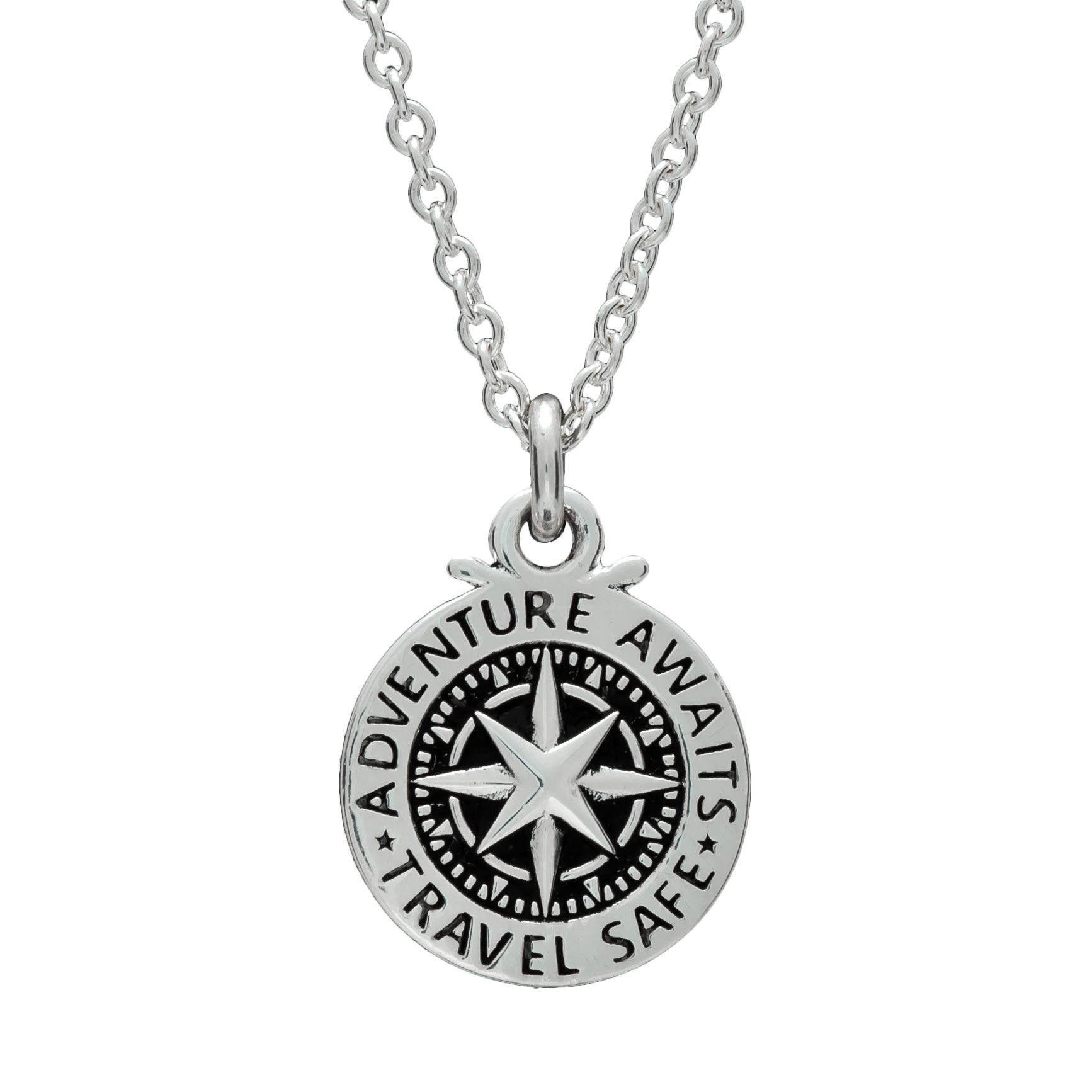
Travel Safe Compass St Christopher Small Silver Necklace

Storm Guardian Silver St Christopher Necklace

Celtic Mandala Personalised Silver Necklace
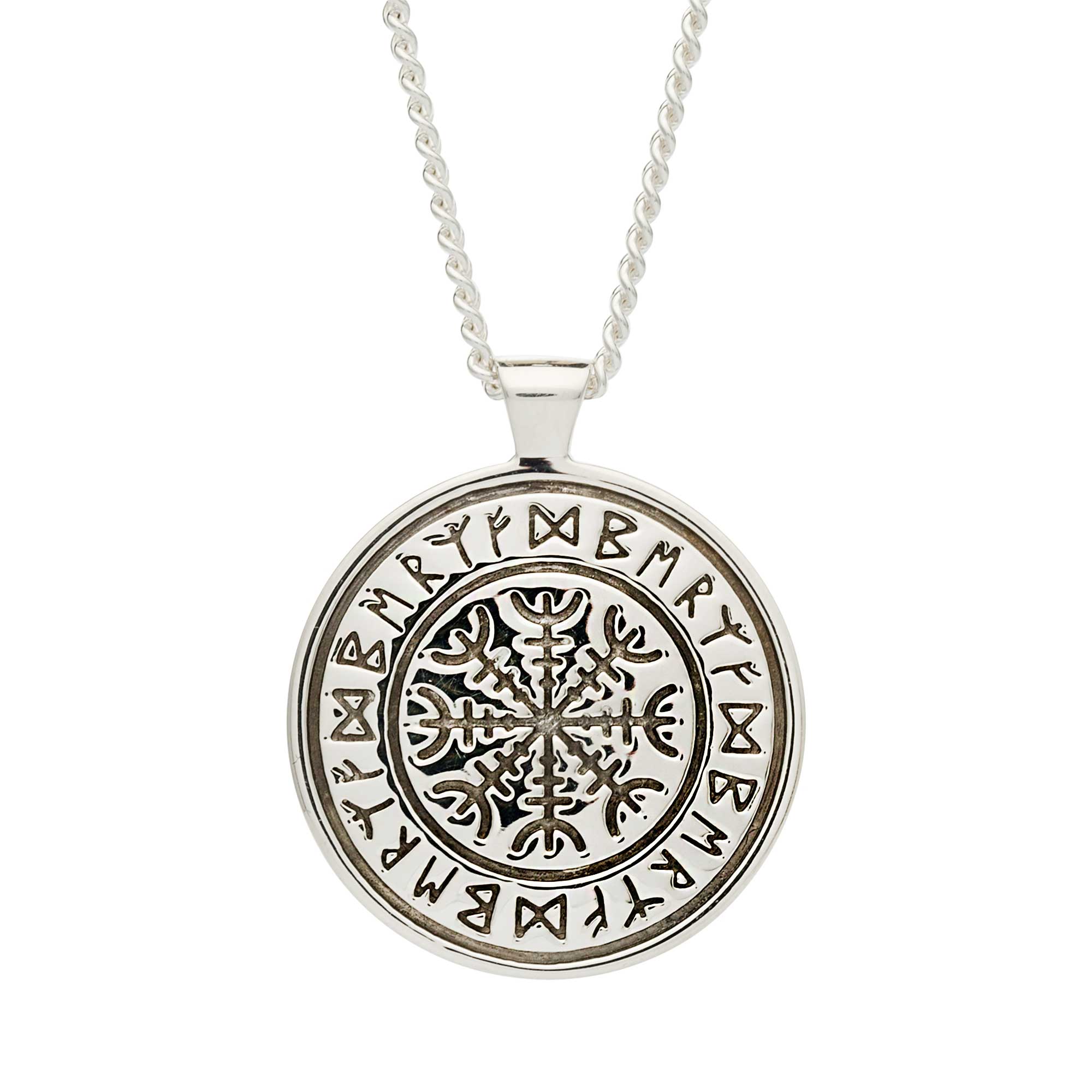
Aztec Ollin Travel Mandala Personalised Silver Necklace

St. Christopher Ellipse Border Necklace (Cast Sterling Silver)

St Christopher Large Dodecagon Necklace (Cast Sterling Silver)

Solid 9ct Gold St Christopher Pendant

St Christopher Mosaic Border Personalised Silver Necklace (Cast Sterling Silver)

Octagon Vegvisir Viking Rune Personalised Silver Necklace
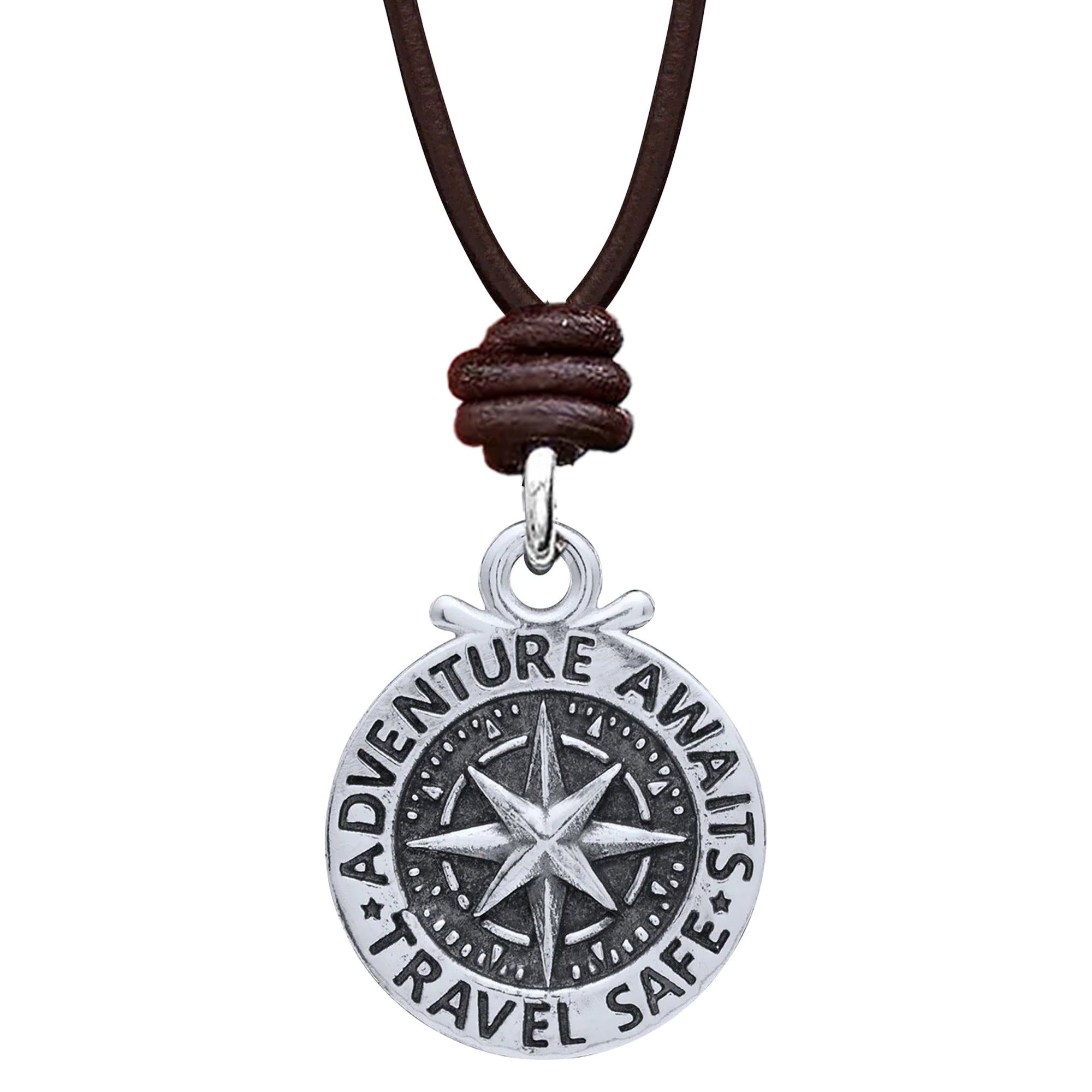
St Christopher Large Dodecagon Personalised Silver Necklace
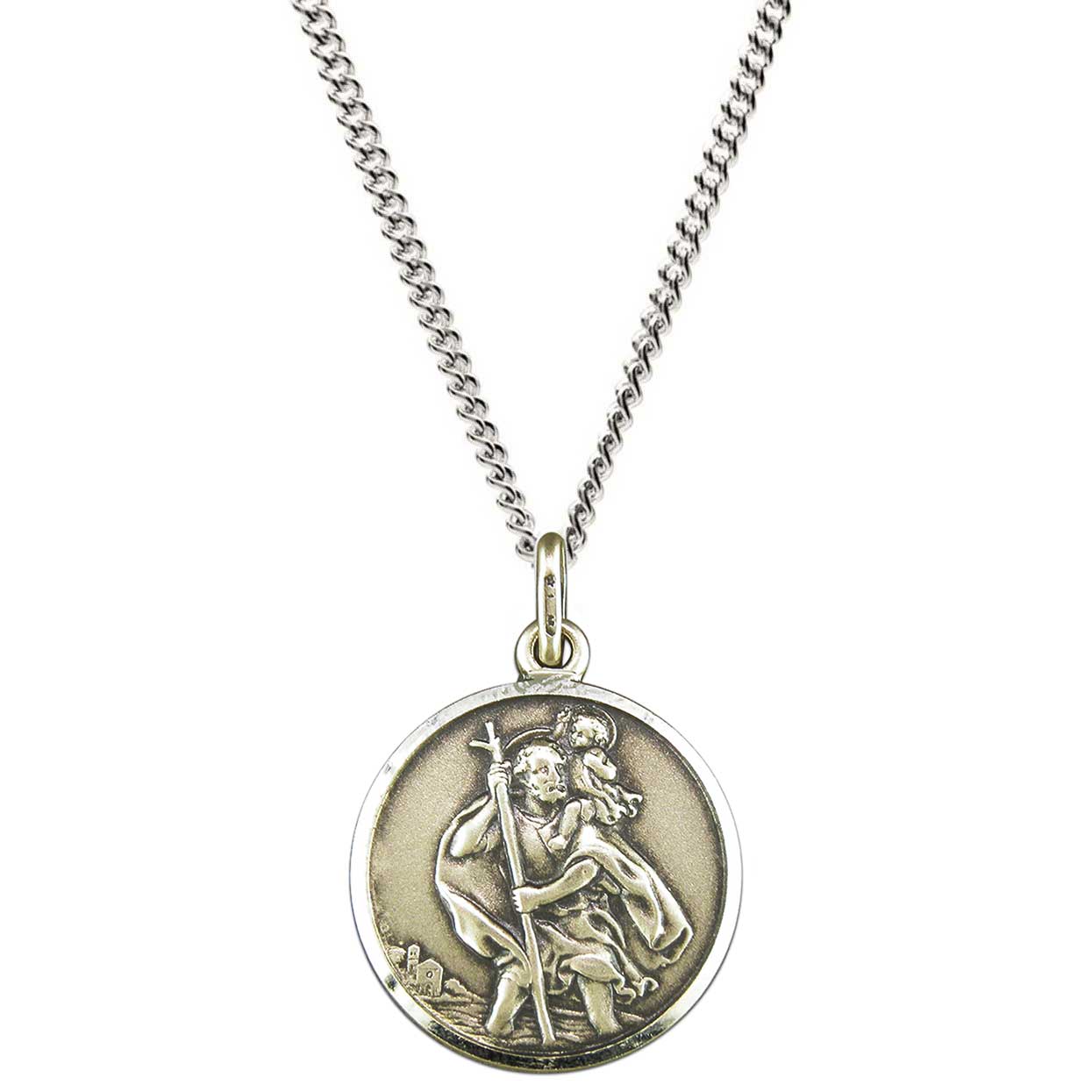
Travel Safe Outline Compass Large St Christopher Silver Necklace

St Christopher Mosaic Border Personalised Silver Necklace
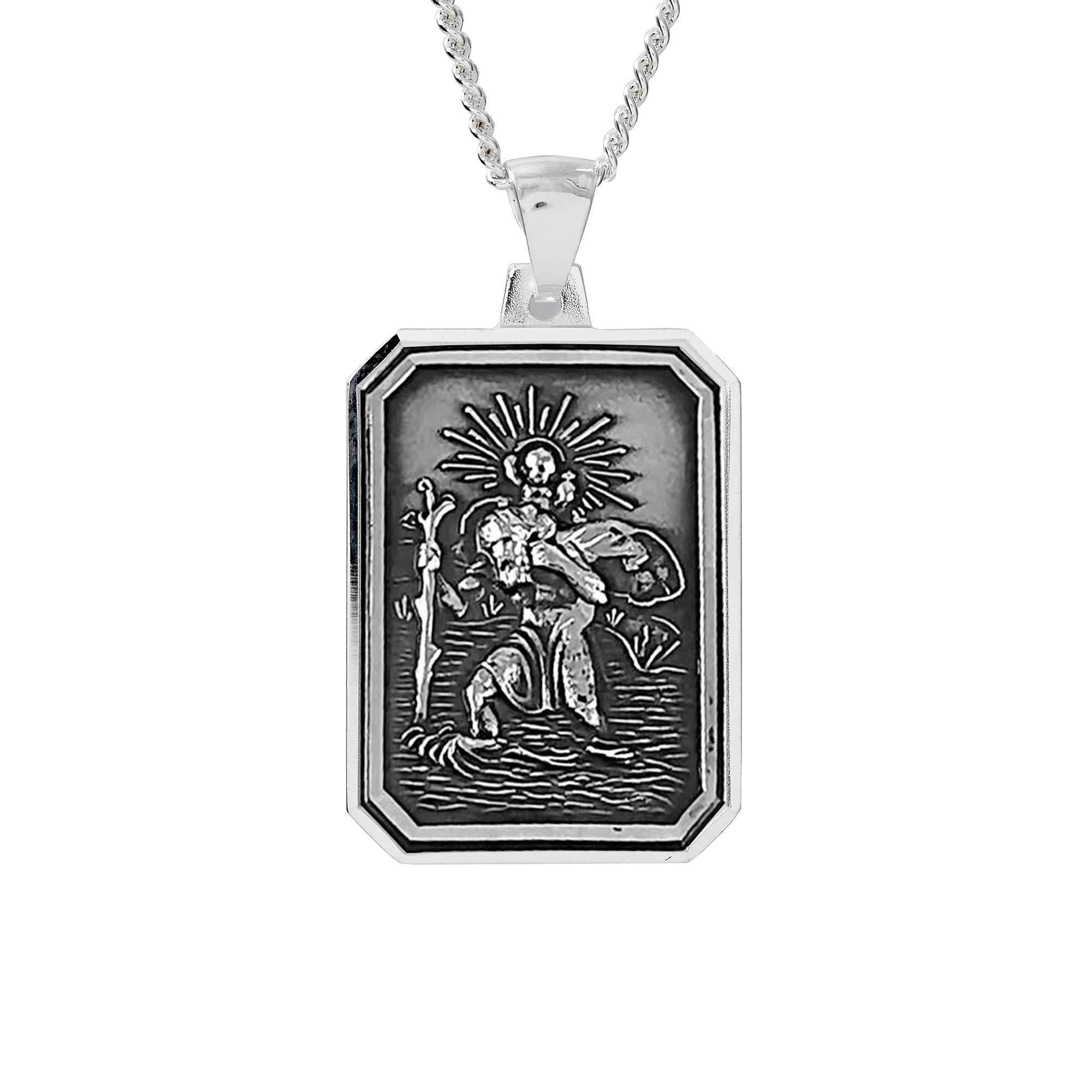
Let customers speak for us
So pleased with this gift. Stevie was very helpful in answering all my questions to ensure I was thorough satisfied with this gift. It came beautifully presented and arrived very quickly.
Just bought the Travel Safe Outline Compass as a christening gift and I must say it is beautiful! It’s small (sizing guide is accurate), but so stunning, clean cuts and detailed engraving. Came beautifully gift wrapped too (a free option at time of purchase), and speedily. Thank you Stevie for creating this amazing piece of jewellery!
Had a sudden last minute change of gift for my son’s graduation. Ordered on the Sunday and received the engraved necklace on the Tuesday, in time for the graduation. Absolutely brilliant service - and he loved it.
My husband opened his gift this morning for his 50th. Wow! What a beautiful necklace. Stevie had put a heavier chain on which I am so grateful for thank you. He loves it. Would 100% recommend to anyone.
Brilliant service and a lovely 21st birthday St Christopher i had it engraved and gift wrapped. All presented beautifully. Very pleased
- Privacy & disclosure policy
- Portfolio & Press
- NORWAY ITINERARIES
Nordic Symbols and Meanings: 12 Must-Know Viking Symbols + Runes
Psst! Some links in my posts may be affiliate links, which means that I get paid a fee if you chose to purchase something through it. This doesn't cost you anything, but makes a huge difference for me! Thanks for your support!
As a Norwegian, I’ve grown up hearing countless tales about our Viking ancestors, their fascinating Nordic symbols and meanings. We learned about the Vikings and Norse mythology in school, as an important part of our own history and heritage.
But the Norsemen are not only fascinating to us, but for the rest of the world too! And so are their symbols.
This is not just because they make for killer tattoo ideas (though, they really do!), but also because the symbols and runes used by the Vikings were an integral part of their culture.
These Nordic symbols and runes were essentially the Vikings’ emojis, used for everything from protection against mischievous trolls to attracting good luck.
The Vikings are amongst the things Norway is most famous for , and I often get asked by visitors about their significance in Norway today. If you are planning a trip to Norway , knowledge about the Vikings and their signs and symbols isn’t really important, but it’s always fun to dive deep into a country’s heritage before you travel!
In this article, I’ll dive into the most famous Viking symbols and the meaning behind them. I will also share a little bit about the difference between runes, and other symbols used by the vikings.
In short, this post is for anyone who is curious about Nordic/Norse symbols and meanings, perhaps because you want to learn more about Viking history, you’re considering getting a symbol as a tattoo, or you’re just a history buff (like me)!
So buckle up, and let’s set sail on this exciting voyage into the mysterious world of Norse symbols and runes!
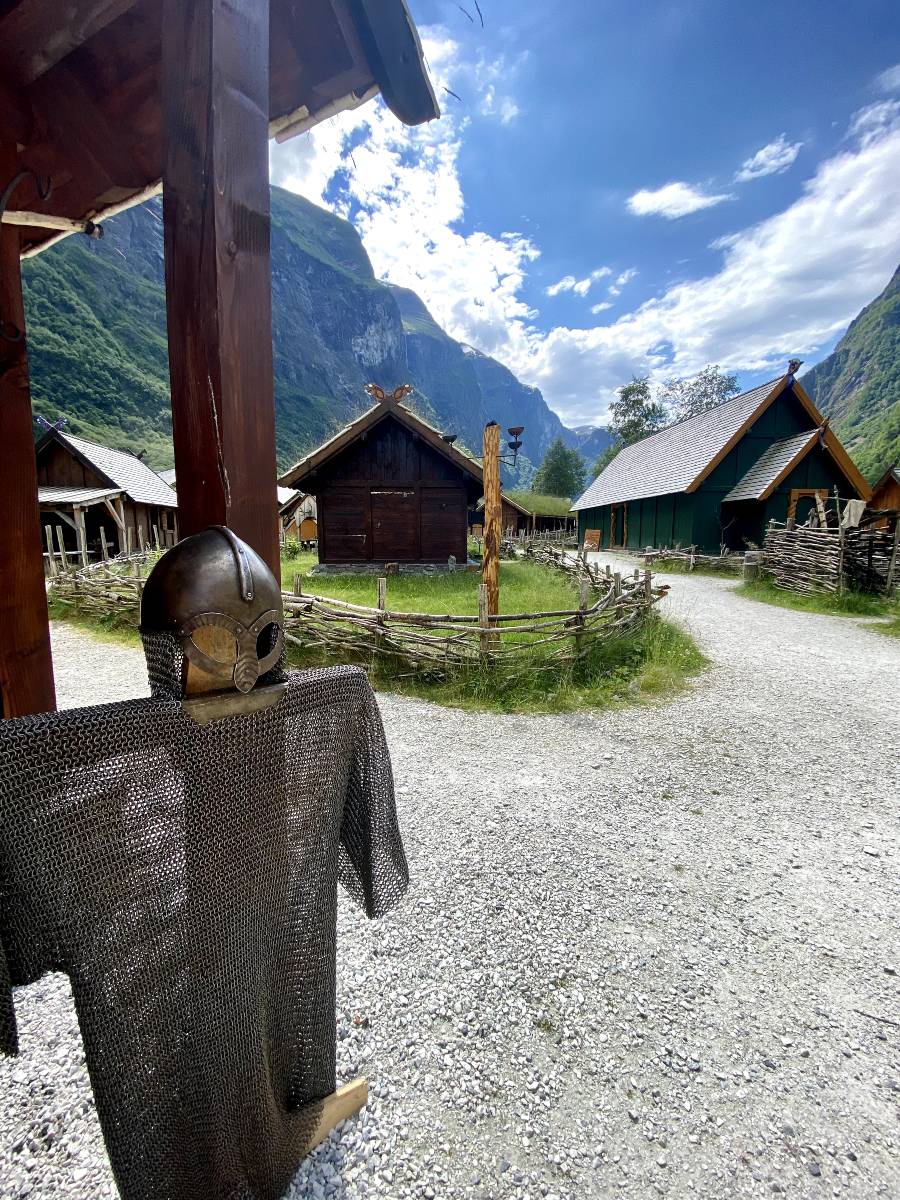
Is Norse and Viking the same?
It’s quite a common mistake to think that Norse and Vikings are the same, but in reality, they’re as different as mead and ale!
Let’s clear this up: the term ‘Norse’ actually refers to the language spoken by the folks in the Nordics during the Viking Age (and before). It’s like the ancient cousin of modern Scandinavian languages.
Within the language, there are some Nordic symbols that were used to make sense of it all, called Runes, and some symbols that had a greater meaning. But more on that below.
Currently, it is Icelandic that is the closest equivalent to the Norse language. However, Norwegian (and especially the western Norwegian dialects like the one I speak) come in as a close second.
Side note : Some people also refer to the people of the Nordic during Medieval times as Norse. So, it covers not only the language, but also a culture found across the Scandinavian and Nordic countries.
For example, Norse mythology was believed and practiced as the main religion across Sweden, Norway, Finland, Denmark and Iceland during the Viking age.
Now then, what about the Vikings?
Who were the Vikings?
The Vikings were obviously not a language, but did you know it was a profession .
These were the seafaring Norse folks who got a kick out of exploring, trading, and sometimes – let’s be honest – a bit of raiding.
Most people believe that Viking was the name of the entire people alive in Scandinavia during the Viking age, but in fact, most of them were farmers. Only some (the brave, explorer-types) were actually Vikings.
So, can you be a Viking without being Norse? Nope. But if you spoke Norse, did that make you a Viking? Not necessarily. It’s like owning a ship doesn’t necessarily make you a sailor, right?
I hope this makes sense!
To dive more into the Vikings and who they were, check out my guide to the most famous Vikings in history next!
Runes, Symbols and More
Now that we’ve cleared up the difference between Norse and Vikings, let’s talk about runes and symbols of the time.
Both were used by the Vikings, but had different purposes. Runes were an alphabet used for writing , while the other Nordic symbols had a more visual meaning.
Below, I have split this guide into Norse Symbols and their meanings, and then covered Runes separately.
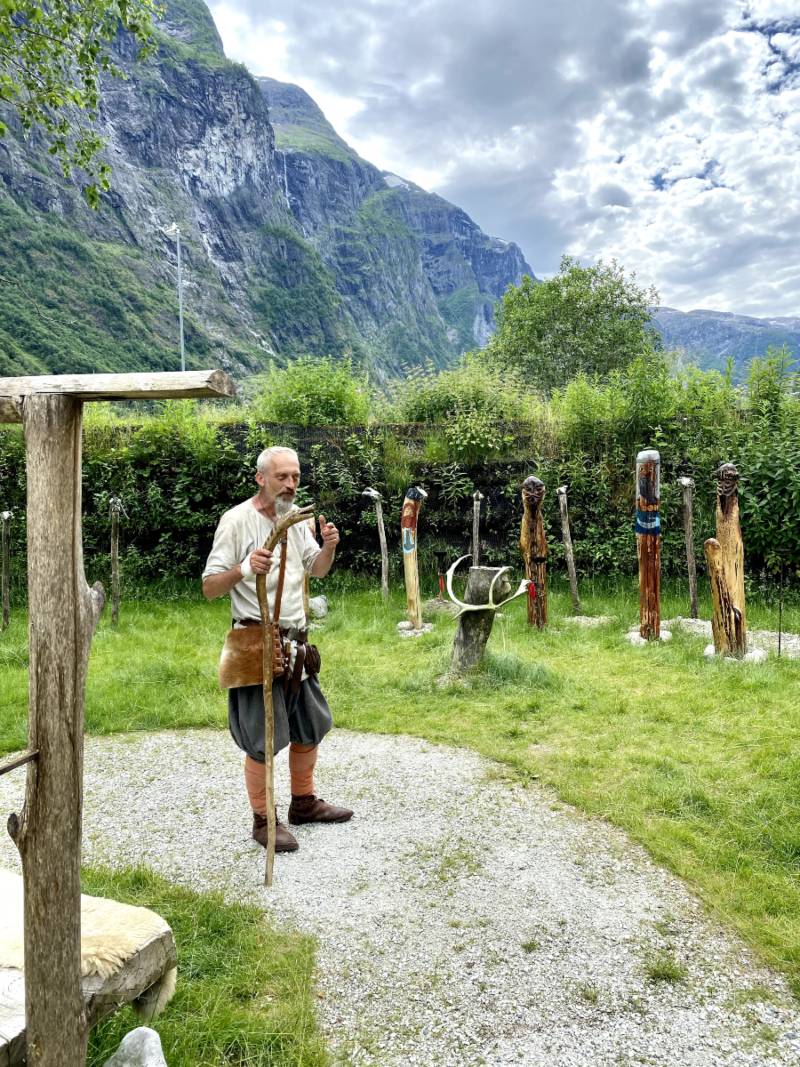
What are runes?
Runes aren’t just pretty etchings on stones or ancient Viking graffiti (or tattoos on guys who think they are Vikings).
They were the real deal – the ABCs of the Norse world. Runes are letters in alphabet sets known as runic alphabets. They were the literal letters of the time.
You have probably seen runes before, either as symbols on someone’s necklace, or even on a Scandinavian-inspired TV show.
Each rune had its own distinct meaning and was used to communicate something specific. They were etched onto various materials like stone, wood, and metal to serve numerous purposes.
From commemorating feats of bravery to leaving directions for fellow travelers, runes were the Norse folks’ go-to method for written communication.
In addition to being the letters of the time, the runes also had their own symbolic meaning separately. Some of the runes were the Norse symbol for protection, luck and balance, for example.
Basically, when a Rune stood on its own, it could mean more than just being a sound to tell you how to pronounce a word (like a letter).
The difference between runes and Viking symbols
So, what separates a rune from other Nordic symbols?
Well, it’s like comparing apples to oranges… (or should we say, runes to symbols?)!
Runes, being the alphabetic system of the Norse, were primarily used to represent sounds and form words.
On the other hand, the other Viking symbols, while being just as cool as runes, were more like visual metaphors.
They were used for their symbolic value, representing a wide array of ideas, from courage to fate to gods. Think of it this way: if the Norse world was a comic book, runes would be the dialogue and other symbols would be the super cool artwork!
I know it is a little confusing, since I just said that runes could also have a symbolic meaning. However, this was only when they stood on their own.
12 Must-Know Nordic Symbols and meanings
Below I have outlined the 12 most famous Nordic symbols and their meanings. Note that these are not runes , but symbols used during the Viking age to symbolise certain feats and wishes.
I have covered runes and their meanings further down in this article.
Most of these are symbols that were actually worn by people during the Viking age, such as Thor’s hammer. We know this, because necklaces with the hammer have been dug up near graves from the Middle ages across Scandinavia.
A few are also symbols from Norse mythology that have been given meaning through their stories, without necessarily being something the Vikings (or Norsemen) carried around physically. For example, the Fenrir wolf.
#1 Thor’s Hammer (Mjølner/Mjolnir)
Ever heard of Mjolnir? I’m sure you have, as it’s probably the most famous of all the Viking symbols that is still being used today.
Mjolnir was the mighty hammer wielded by none other than Thor, the Norse god of thunder. He would ride around the skies on his chariot pulled by goats (yes), setting of thunder and lightning using his hammer.
Mjolnir was a symbol of protection and power , capable of leveling mountains with a single blow.
When the Vikings weren’t busy navigating the high seas or raiding (they weren’t just about that, you know), they would wear amulets in the shape of Mjolnir for good luck and protection.
So, think twice the next time you casually pick up a hammer. You might just be holding a symbol of ancient strength and power!
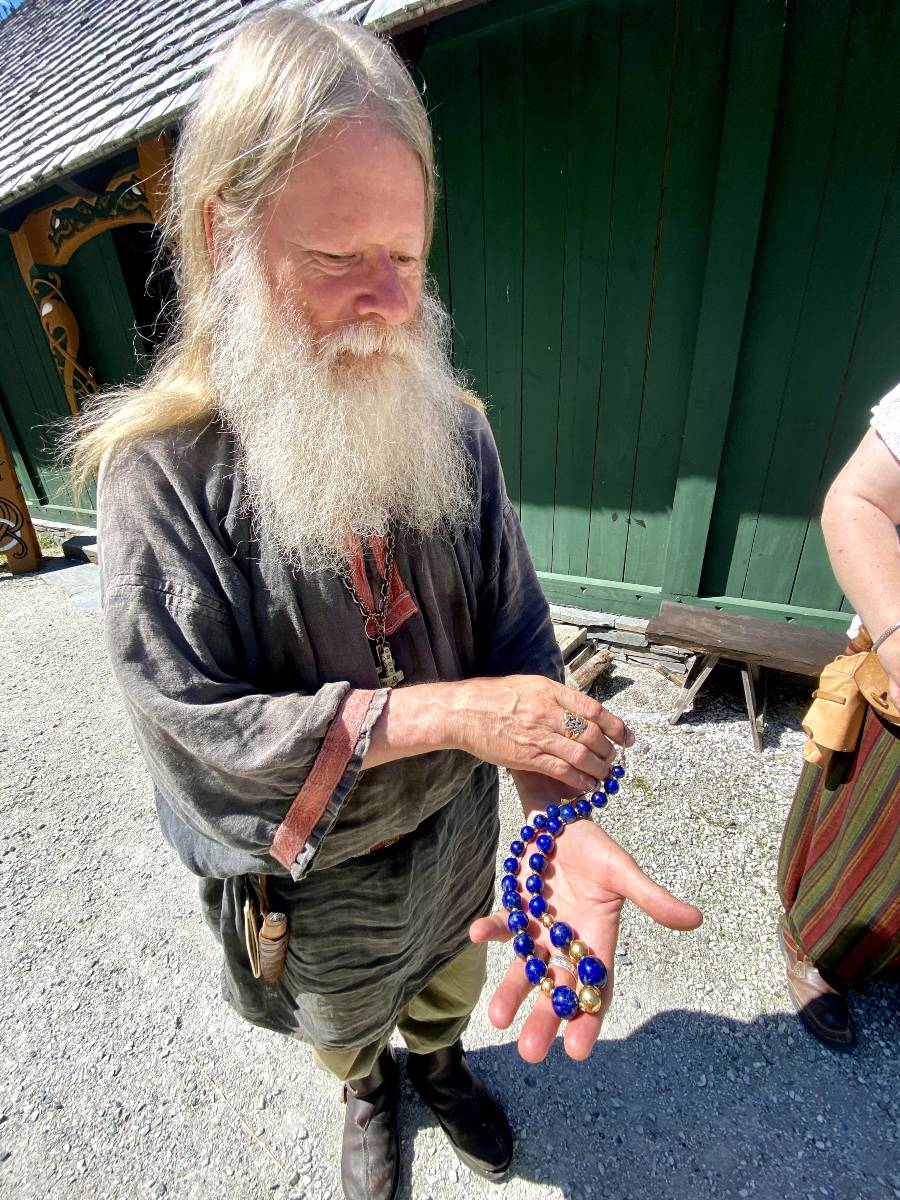
#2 Valknut (Odin’s Knot)
Okay, so let’s move onto a more geometric symbol called the Valknut – Val translates to choice , and knut translates to knot . Yet, instead of calling it a “choice not”, it has been dubbed Odin’s Knot in English.
This symbol is a set of three interlocking triangles, kind of like a Viking version of a Venn diagram. It was found on items onboard the famous Oseberg ship, so we know the old Norse folks thought it was pretty important.
The Valknut is often called Odin’s Knot because it’s associated with the Allfather himself, Odin, the god of war, wisdom, and poetry.
Whilst the experts aren’t in complete agreement about its meaning, the symbol is believed to represent the transition between life and death.
#3 Yggdrasil (the Tree of life)
Next up on our Viking symbol tour is the big one, the epicenter, the “root” of it all – the Yggdrasil, otherwise endearingly known as the Tree of Life.
Now, imagine a tree so huge that it makes your favorite oak tree look like a bonsai. Yggdrasil, this cosmic ash tree, has its branches reaching out to touch the heavens and the roots digging deep down into the underworld.
Yggdrasil is the ultimate symbol of interconnectedness, linking the realms of the Norse goddesses and gods, men, and the dead.
If you ever feel a bit lost, just remember – we’re all just hanging out somewhere on Yggdrasil’s branches, navigating through this vast cosmos together. Pretty cool, huh?
Therefore, it’s pretty obvious that the symbol of Yggdrasil (whether you want it as a tattoo or a necklace), is a reminder that you are part of something greater.
#4 Vegvisir (the Viking compass)
I love how these Norse words and expressions are so similar to words we use in Norway today. “Vegvisir” sounds a lot like the word “Vegvisar” (or “veiviser” if you are from eastern Norway), which means “ pathfinder ” in Norwegian.
This Viking compass symbol was said to protect travelers from getting lost in unfamiliar territories. Shaped like an eight-pointed star, with different rune-like symbols on each point, Vegvisir was believed to guide the bearer through rough waters and bring them safely home.
Nowadays, you might not find a compass like this on your GPS, but rest assured that wherever you go, Vegvisir has got your back!
#5 Hugin and Munin (Odin’s ravens)
Hugin and Munin, the winged companions of Odin, are more than just a couple of ravens with cool names.
In Old Norse, Hugin translates to ‘thought’ and Munin to ‘memory’.
These ravens weren’t just Odin’s pets; they were his eyes and ears in the world. Every day, they’d fly across the realms, observing everything, and at dusk, they’d return to whisper all they’d seen and heard into Odin’s ears.
Imagine having an X (formerly Twitter) feed directly wired into your brain, except every tweet is a meaningful update about the state of the universe.
So, the symbol of Hugin and Munin is a powerful reminder to us all, to use our thoughts and memories wisely as we navigate life’s challenges. Norse symbols always have a way of bringing profound life lessons to the front, don’t they?
#6 The Fenrir Wolf (Fenrisulven)
The Fenrir Wolf, or Fenrisulven as we affectionately call it in Norway, is another gripping symbol from the Norse mythology.
This monstrous wolf is actually the child of Loki, and let’s just say, the apple didn’t fall far from the tree! Fenrir was prophesied to cause mayhem during Ragnarok, the end of the world. So, the gods decided to play it safe and keep him chained up.
Today, Fenrir serves as a potent symbol of destructive forces that are difficult to control, but also of the courage to face our deepest fears.
So next time you come across this symbol, remember, it’s not just about the fear of the wolf; it’s about the courage in facing it.
#7 The Helm of Awe (Oegishjalmr, Norse symbol for protection)
The Helm of Awe, or Oegishjalmr as it’s known in the old tongue, is a real head-turner in the world of Viking symbols. It’s the Norse equivalent of a security blanket.
This symbol, often depicted as an eight-armed figure radiating from a central point, was believed to provide protection and the power to strike fear in one’s enemies.
The Helm of Awe is more than just a tool for intimidation; it’s a reminder of our inner strength and resilience, and the lengths we’ll go to protect what’s important to us.
So, when life feels like a Viking raid, remember the Helm of Awe – you’re stronger than you think!
#8 Skuld’s Net (Net of Wyrd)
Skuld’s Net is also known as the Net of Wyrd.
This intriguing piece of Viking symbolism is like the ancient Norse version of the world wide web. Instead of cat videos and memes, it represents the interconnectedness of past, present, and future.
Picture it as a complex web, where each intersection is an event in time, linked to every other event – a reminder that our actions today ripple through time, impacting our tomorrows.
So, why was it important to our seafaring predecessors?
Well, the Vikings believed that destiny was a powerful force but not unalterable. The Net of Wyrd symbolized their understanding of shaping their own fate.
So next time you’re faced with a tough decision, remember the Net of Wyrd. It’s not just about accepting our fate; it’s about weaving it.
#9 Gungnir (Odin’s mighty spear)
Gungnir, the notorious spear of the All-father Odin, is another fascinating symbol in the Viking lexicon.
As the stories go, this was no ordinary spear. Crafted by the dwarves – the master smiths of Norse mythology – Gungnir never missed its target and always drew blood when thrown.
But what’s the deeper significance and the meaning here? To the Vikings, Gungnir symbolized the unerring pursuit of knowledge, the relentless quest for wisdom, much like Odin himself who was known for his wisdom.
So, the next time you’re in a tight spot, remember Gungnir. Take aim, trust your intuition, and let fly! After all, who doesn’t want to channel a bit of Odin’s unstoppable spirit in their everyday life?
#10 Hraethigaldur and Ottastafur
Moving onto yet another intriguing piece of Viking symbolism, let’s dive into Hraethigaldur and Ottastafur.
Not as famous as our friend Gungnir, but equally fascinating, these two are Norse stave symbols often intertwined with magic and protection.
Hraethigaldur , or the “Rune of Rabbits,” is believed to help one become elusive and quick, just like a bunny hopping away from danger.
On the other hand, Ottastafur is your go-to symbol for causing fear and panic among enemies.
So, whether you’re channeling your inner Bugs Bunny or want to ward off that particularly pesky co-worker, these symbols got your back.
#11 The Midgard Serpent (Jörmungandr, the Norse Ouroboros)
Heard of the Midgard Serpent? No, it’s not the latest character in a Marvel comic, but a powerful creature from Norse mythology.
All though, to be fair, I would love for Midgardsormen to show up in the next Thor movie.
Born from the union of the trickster god Loki and the giantess Angrboda, the Midgard Serpent was so enormous that he could encircle the entire world, Midgard, and grasp his own tail in his mouth.
But what does Midgardsormen (Norwegian) / Jörmungandr (Old Norse) symbolize, you ask?
Well, it’s all about the eternal cycle of life, death, and rebirth – quite deep for a giant mythical snake, right?
This massive serpent biting its own tail represents the concept of the Ouroboros, a symbol of eternal cyclic renewal.
#12 Vatnahlífir (norse symbol for protection from water)
Vatnahlífir was a stave often tattooed on a Viking’s underarm as they sailed across difficult oceans and rivers. It was the Norse symbol to protect you from drowning, and was believed to be very important to the Vikings.
The Vikings also believed that the Vatnahlifir helped guide you through rough waters. So, when they were rowing across the seas in their longships (pictured below), they usually had some version of the Vatnahlifir on their person.
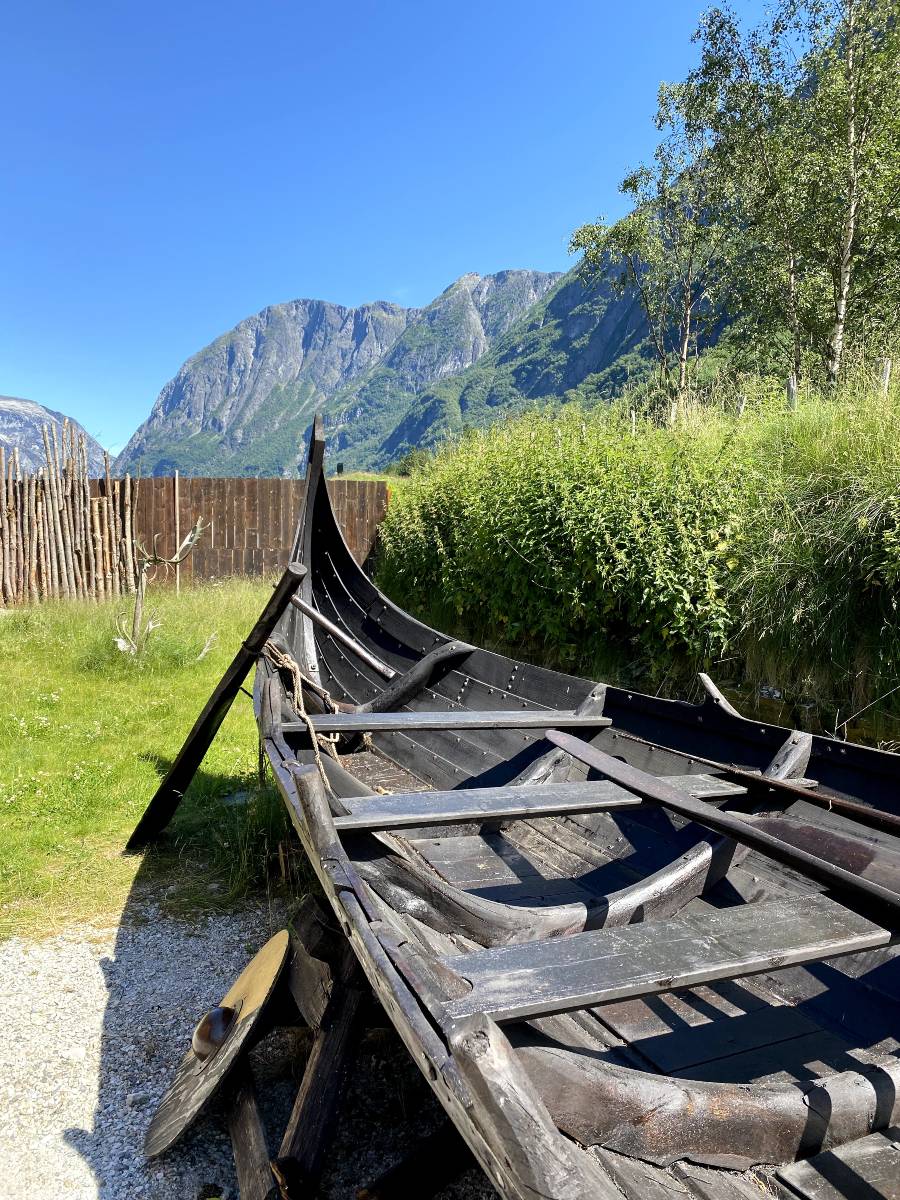
Now that we’ve covered the 12 most famous Nordic symbols and their meaning, it’s time to move on to the other form of symbol from the Vikings: runes!
The Runes (Viking symbols) and their meaning
Let’s quickly recap what runes are.
These were the Viking’s version of an alphabet , called the Futhark , and they’re chock-full of mystery and magic.
Each rune was not only a letter in their written language but also held a special meaning as a standalone symbol (talk about multitasking).
They were used in everything from everyday writing to divination and were a significant part of Norse culture.
The oldest form of the Scandinavian runic alphabeth is the Elder Futhark. There are 24 signs, or letters, in this alphabet.
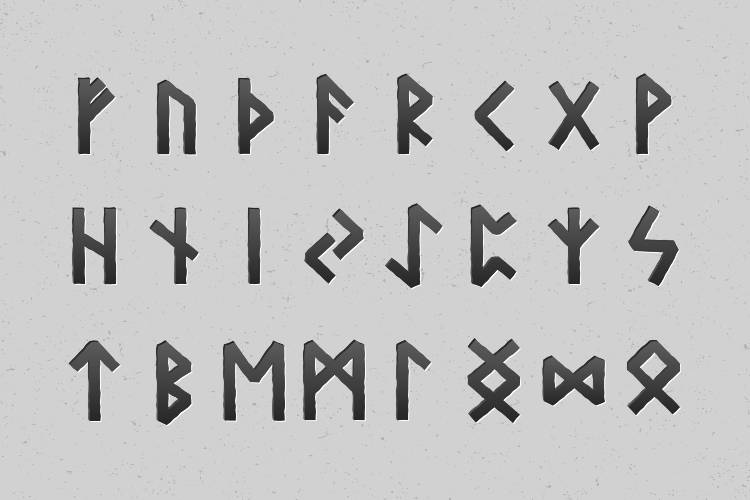
The Runic Alphabet
Below I have listed each of the runes, and their individual meaning.
- Algiz: The rune of protection and defense
- Ansuz: Considered the rune of Odin himself, and communication
- Berkana: The rune of birth, femininity and fertility
- Dagaz: The rune of dawn, awakening, awareness and hope
- Ehwaz: The rune of transportation and movement (and as a result, progress)
- Eihwaz: The rune of reliability, dependability and balance
- Fehu: The rune of success, wealth and abundance
- Gebo : The rune of balance, generosity and gift (Elhwas is also the rune of balance)
- Hagalaz: The rune relating to the wrath of nature and being tested
- Inguz: The rune og growth, change and common sense
- Isa: The rune of clarity, watching and waiting (being introspective)
- Jera: T his rune represents the harvest, a time of peace and happiness, and a fruitful season
- Kennaz: The rune of vision, knowledge and creativity
- Laguz: The water rune, and the rune of flow, intuition and emotions
- Mannaz: The rune of humanity, friendship and collaboration, but also of individuality
- Nauthiz: The rune of need, restriction, conflict, willpower and endurance
- Othila: The rune of ancestry, heritage and inheritance
- Perthro: The rune of fate, mystery and secrets
- Raidho: The rune of travel, rhythm and spontaneity
- Sowilo: The rune of the sun, success and goals achieved
- Thurisaz: The rune of brute force/power, warrior, and the symbol of Thor (it looks the most like a modern T)
- Tiwaz: The rune of masculinity, leadership and justice
- Uruz: The rune of strength of will
- Wunjo: The rune of comfort, pleasure, joy and also success
Wondering how to pronounce the runic alphabet? Watch the video below!
Norwegian souvenirs with Nordic Symbols and runes
If you found this post because you want to find a Viking-themed necklace or gift for someone you know, you’ve come to the right place!
Now that we have covered some of the most famous Nordic symbols and runes, I want to share some of my favorite types of Viking-themed souvenirs and jewelry, where the ancient symbols of the Nordic warriors meet modern style!
From the helm of awe or terror, known as Oegishjalmr, a symbol of protection and might, to other significant Norse symbols, each piece tells a unique tale of Viking valor.
For the vikings, these symbols were more than just decorative motifs; they represented the beliefs, values, and way of life of the Norse people. For instance, Oegishjalmr was believed to instill fear in enemies while protecting its wearer from harm. Other popular symbols include Thor’s hammer, Mjolnir, symbolizing strength and power, and Yggdrasil, the tree of life.
Whether you are looking for a meaningful gift or want to add a touch of Viking heritage to your own style, there are plenty of options to choose from.
Another great Scandinavian gift is a knitted Nordic sweater !
Below I have hand-picked a range of gifts with Viking symbols on them, mostly necklaces and jewelry (it’s the most common). Amazon especially has a lot to choose from, from $300 gold pieces necklaces to more affordable ones.
Nordic Symbols and Meanings FAQ
Below you will find the most frequently asked questions about nordic symbols and their meaning. I have done my best to answer all. If you have a question that is missing, comment below so I can add it to the FAQ.
The most powerful Norse symbol is the Valknut. It is a symbol of power, strength and courage. It was believed to be a magical symbol capable of connecting with the gods and spirits of the Norse pantheon. The Valknut was associated with Odin, who was the most powerful god in Norse mythology.
Thor’s hammer, known as Mjölnir, is the most famous Viking symbol. It was used by the Norse God Thor to protect Asgard, the home of the gods, from their enemies. The hammer was said to be able to deliver lightning and thunder and could level mountains with one blow. In Norse culture, it is a symbol of protection, strength, and courage.
Norse runes were the alphabet of the Viking age, used to form words and sentences. The runes also had meaning on their own, and could represent protection, love, strength and more.
Runes were the nordic alphabet. Other Nordic symbols include Thor’s hammer, the Tree of Life (Yggdrasil) and Valknut (Odin’s know).
The rune Ehwaz is the most commonly known Viking symbol for loyalty.
Mount Ulriken, Bergen: Complete Hiking Guide, Map & Video!
The 10 best cafes in bergen, norway [by a local], you may also like, how to be a tourist in norway, 10 ridiculous questions tourists in norway have *actually*..., how to plan a trip to norway [a..., 5 fun things to do in oslo with..., top things to do in oslo, norway [a..., 15 free attractions in oslo [a local’s guide], the best museums in oslo, norway [a local’s..., the best hotels in oslo, norway [budget to..., 5 best fjord cruises from bergen, norway [a..., how to get from bergen airport to the..., leave a comment.
Save my name, email, and website in this browser for the next time I comment.
Free USA shipping on orders $35+
- Best Sellers
- Viking Jewelry
- Rune Jewelry
- Shamanic Jewelry
- One of a Kind
- Get 20% Off
- Production Time
- Courses on Paganism
- Learn About Runes
- Rune Flashcards
- History of Paganism
- Hexenwerk Magazine
- Recommended Reading
- Join the Club
- Club Member Dashboard
April 12, 2024 2:54 pm
20 Norse Bind Runes for the Modern Viking
In the tapestry of Norse mythology, bind runes stand out as potent symbols that have transcended their ancient origins to find a place in modern spiritual practices. Originally crafted during the Viking Age, these intricate symbols were more than mere letters; they were believed to hold magical powers that could influence the world around them.
Today, the allure of bind runes continues as they offer a unique blend of mysticism and practicality. Their revival in contemporary culture is not just a nod to our ancestors but an active integration of their wisdom into our daily lives. This article explores 20 specific bind runes, demonstrating their timeless relevance and how they can be woven into the fabric of modern existence for personal growth, protection, and prosperity.
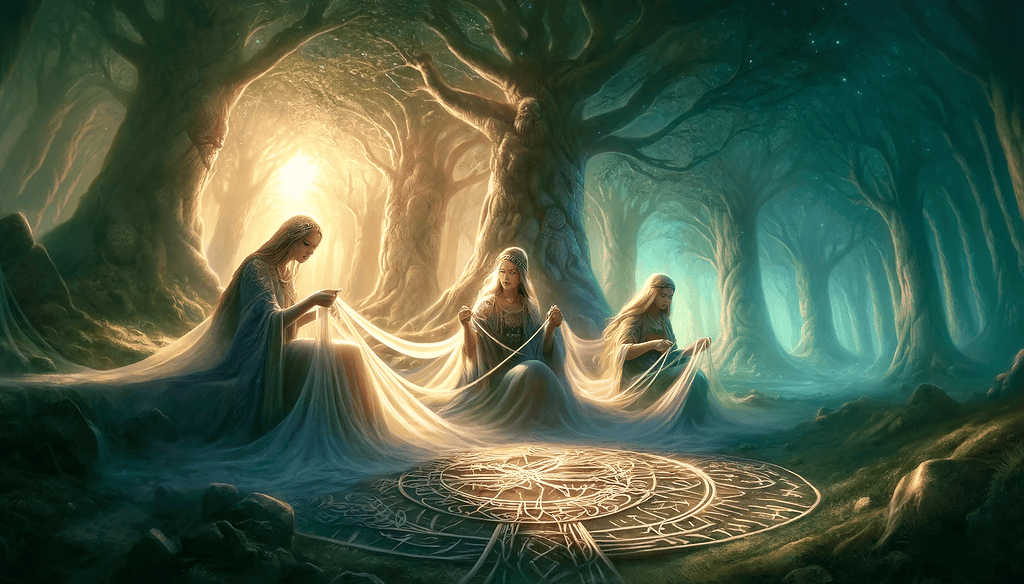
Table of Contents
Understanding bind runes, what are bind runes.
Bind runes are a fascinating aspect of runic writing, where individual runes from the Elder Futhark—the oldest form of the runic alphabets—are combined to form a single symbol. This practice was common among the Germanic peoples, including the Vikings, who used these symbols for various purposes, from marking property to invoking magical protections. Each bind rune is a composite, crafted to amplify the effects and meanings of the runes it encompasses, often created for specific intentions or to harness particular energies.
The Runic Alphabet and Its Meanings
The Elder Futhark, consisting of 24 runes , is a foundational element of Norse spiritual practice. Each rune holds its own unique meaning and magical property, ranging from fertility and prosperity to protection and wisdom. For example, the Fehu rune is associated with wealth and material success, while Algiz offers protection. When runes are combined into bind runes, they create a powerful symbol that can draw on multiple forces and aspects, depending on the runes selected and their arrangement. Understanding these individual meanings is crucial for anyone looking to harness the power of bind runes effectively.
The Modern Relevance of Ancient Symbols
In today’s spiritual landscape, ancient symbols like bind runes are experiencing a renaissance, reminiscent of the way tarot cards and astrological signs have been embraced by modern esoteric communities. Bind runes are more than historical artifacts; they are tools for personal and spiritual development, offering guidance and insights in a complex world.
They help modern practitioners connect with a heritage that speaks to universal experiences across time and space—protection, prosperity, and clarity—making these ancient symbols relevant for contemporary life challenges. As such, bind runes serve as a bridge between the past and the present, enabling a dialogue with the ancients through a shared language of symbols and intentions.
20 Norse Bind Runes for Daily Life
Each of the bind runes discussed in this section combines powerful symbols from the Elder Futhark , each carefully chosen to resonate with specific aspects of life, from personal defense to prosperity, harmony, and transformation. These runes were once the spiritual and practical tools of the Vikings; today, they serve as guides for personal growth and well-being, adapted to the complexities of modern life.
#1: Protection in the Warrior’s Shield
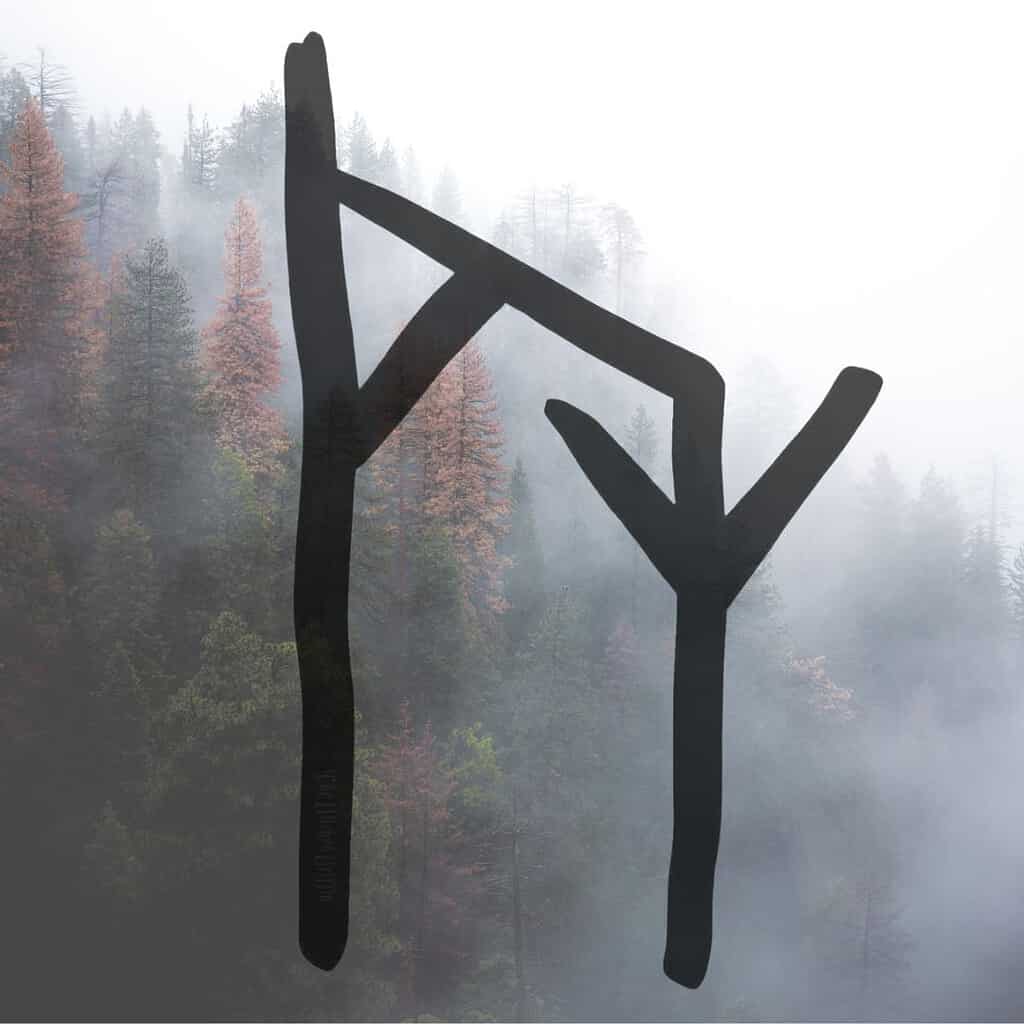
- Runes Used : Algiz, Thurisaz, Uruz
- Summary : This bind rune combines the protective and defensive properties of Algiz, the reactive force and conflict management of Thurisaz, and the strength and robust health associated with Uruz.
- Together, these runes form a powerful symbol for safeguarding oneself against physical and emotional challenges. It’s especially suited for those seeking a strong shield against life’s adversities, reinforcing both personal defense and resilience. This configuration is chosen to create a comprehensive protective aura that wards off negative influences while bolstering the user’s inner strength.
#2: Prosperity in the Merchant’s Ledger
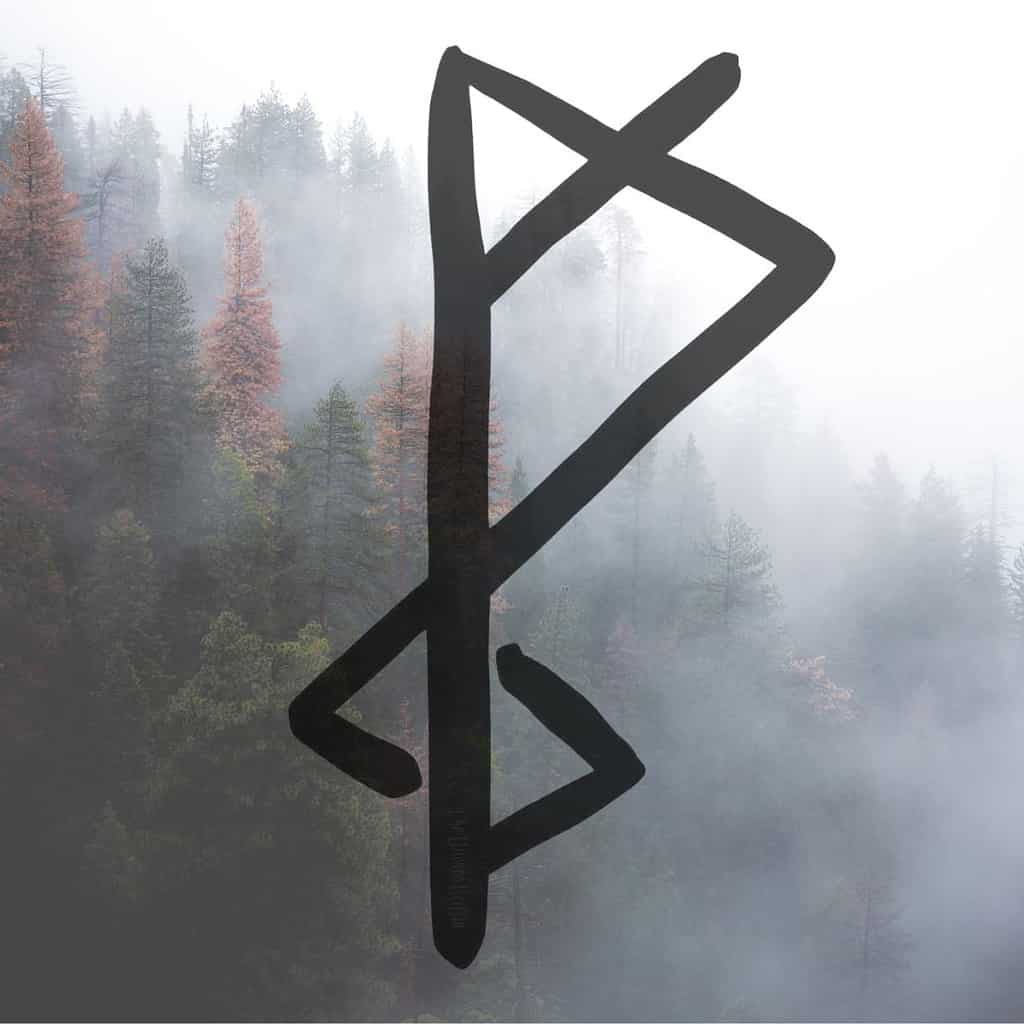
- Runes Used : Fehu, Jera, Wunjo
- Summary : This bind rune merges Fehu’s connotations of wealth and abundance, Jera’s associations with harvest and timely rewards, and Wunjo’s links to joy and success.
- It is specifically designed to enhance financial prosperity and bring about a sense of fulfillment and happiness in one’s economic endeavors. The selection of these runes aims to create a powerful synergy that not only attracts material wealth but also ensures that its accumulation is rewarding and joyous, making it an ideal symbol for entrepreneurs and anyone focused on financial growth.
#3: Harmony in the Homestead Hearth
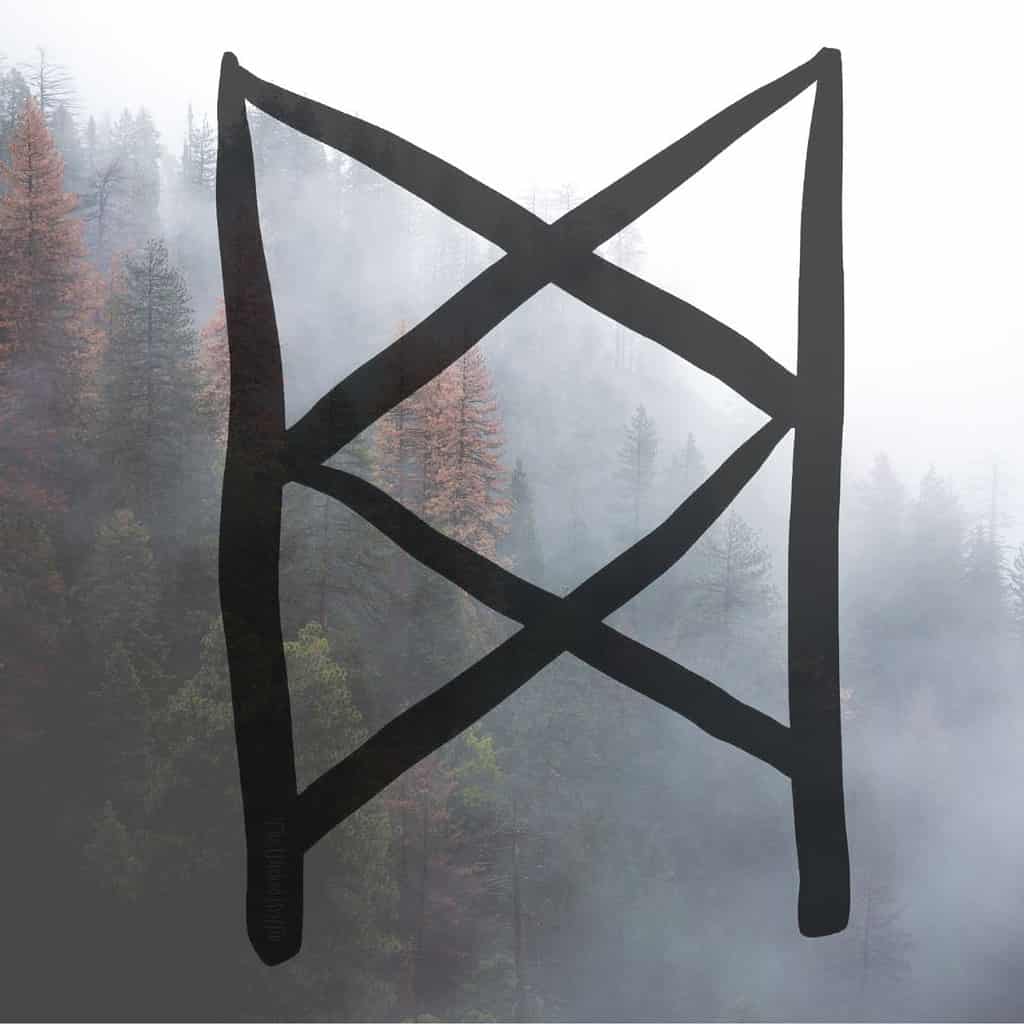
- Runes Used : Gebo, Mannaz, Wunjo
- Summary : This bind rune incorporates Gebo’s attributes of gift-giving and partnerships, Mannaz’s focus on humanity and community, and Wunjo’s connections to joy and comfort.
- Designed to foster peaceful and harmonious relationships, this symbol is perfect for enhancing familial ties and promoting a warm, welcoming atmosphere at home. The combination of these runes supports a balanced and joyful communal life, encouraging cooperation and mutual respect among all members of a household or community, thus creating a nurturing environment that feels like a true sanctuary.
#4: Victory on the Battlefield
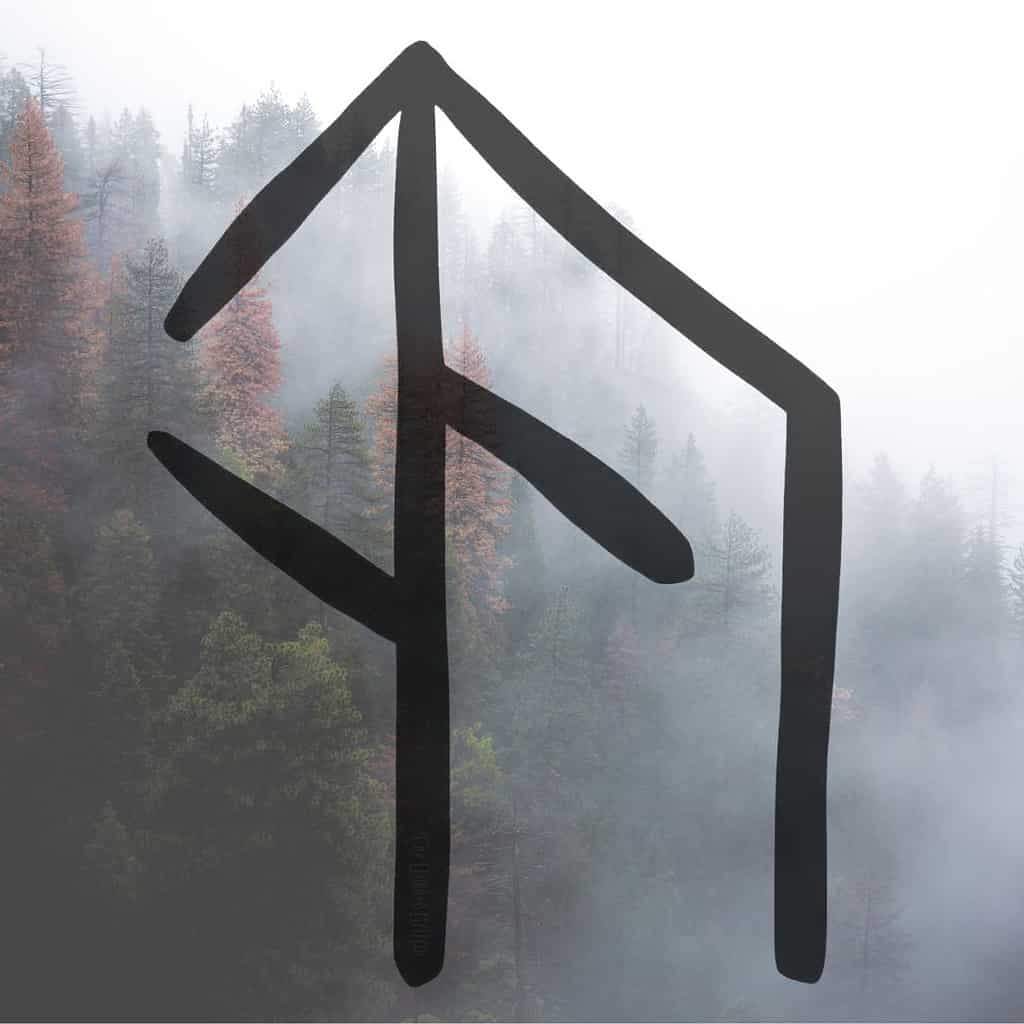
- Runes Used : Tiwaz, Uruz, Sowilo
- Summary : This bind rune blends Tiwaz, symbolizing victory and justice, with Uruz, representing strength and vitality, and Sowilo, associated with success and the power of the sun.
- It’s crafted to empower individuals in their personal and professional battles, ensuring triumph through fairness and strength. Ideal for those facing competitive challenges or striving to overcome significant obstacles, this rune configuration strengthens resolve, boosts energy, and leads to successful outcomes by aligning the bearer’s efforts with the natural forces of victory and enlightenment.
#5: Guidance on the Voyager’s Compass
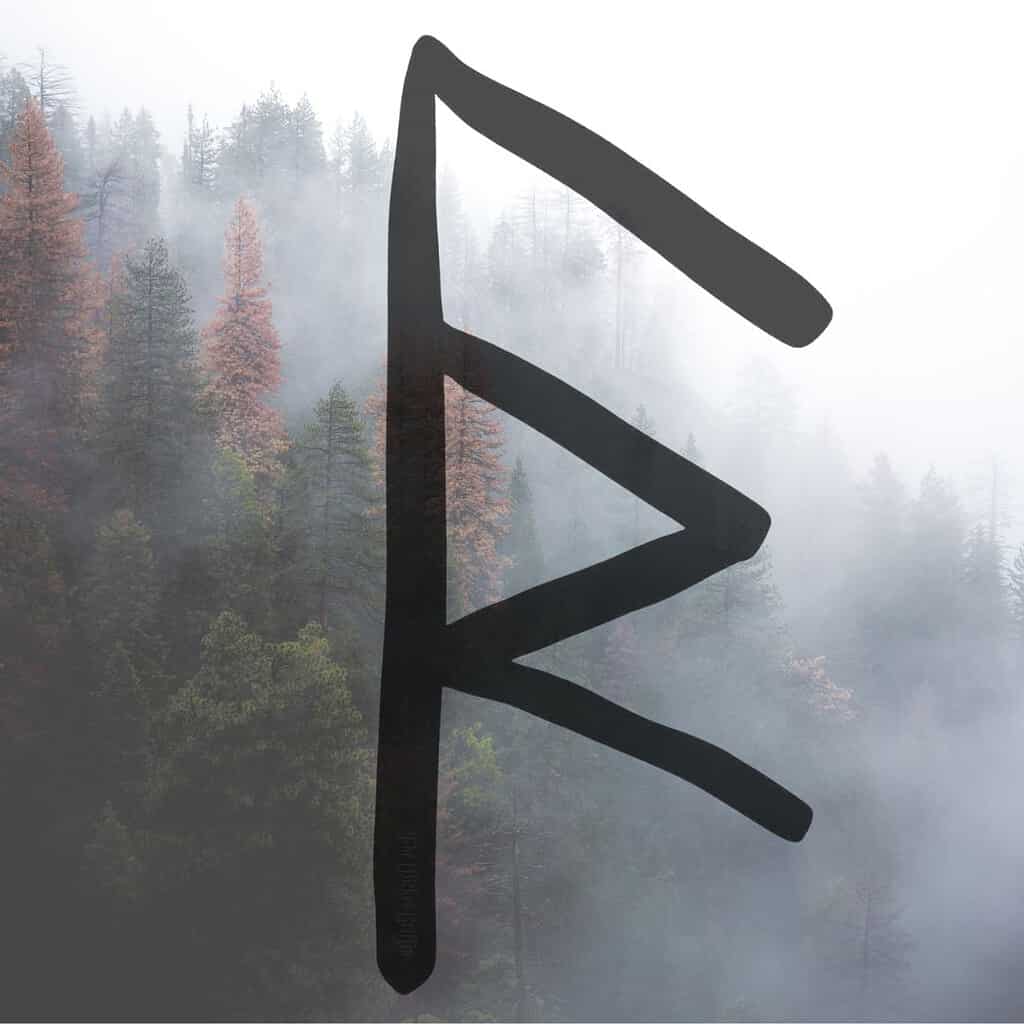
- Runes Used : Raidho, Kenaz, Ansuz
- Summary : Combining Raidho, which symbolizes travel and the right path, with Kenaz, representing vision and revelation, and Ansuz, associated with communication and divine guidance, this bind rune is tailored for navigators of both physical and spiritual journeys.
- It offers clarity and insight to those exploring new horizons or seeking guidance in life’s decisions. This arrangement helps ensure that one’s path is illuminated with wisdom and supported by clear communication, making it an essential symbol for adventurers, travelers, and seekers of truth.
#6: Wisdom in the Seer’s Stones
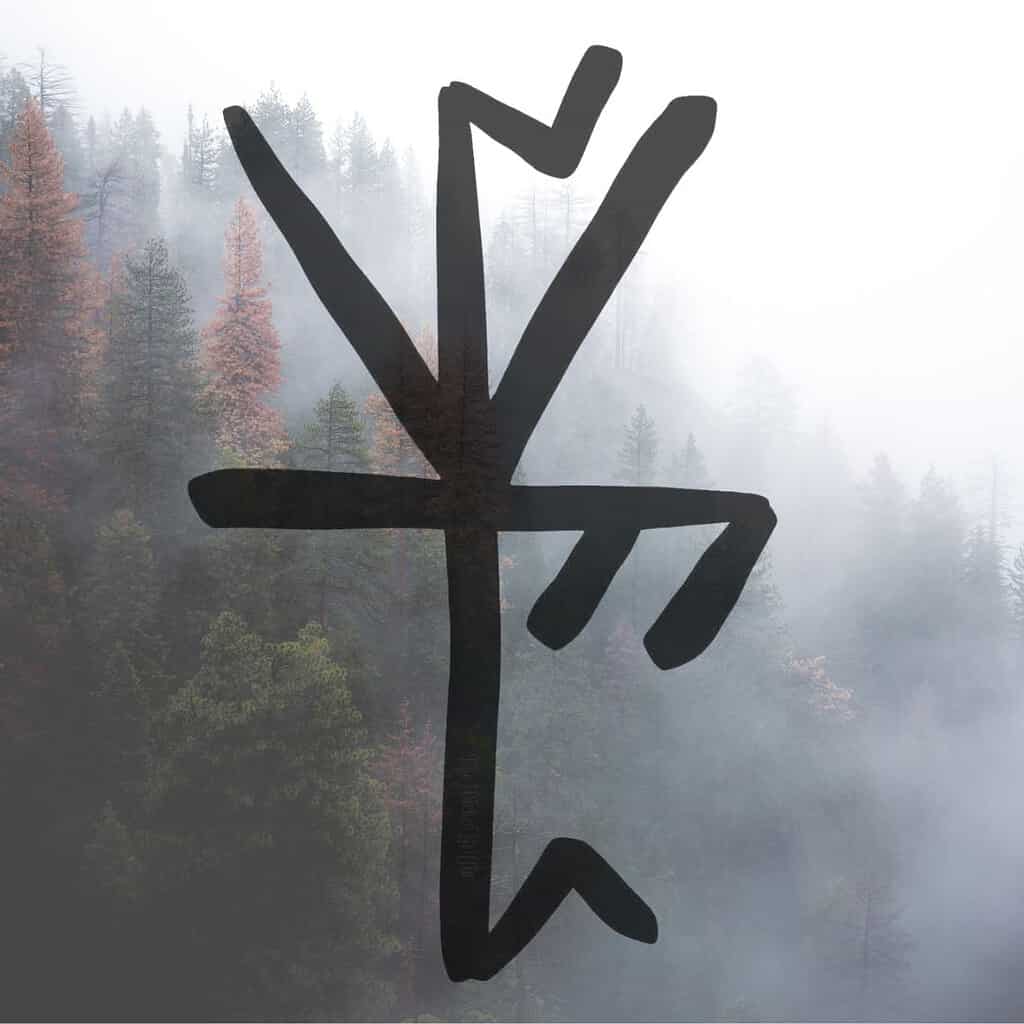
- Runes Used : Ansuz, Perthro, Algiz
- Summary : This bind rune weaves together Ansuz, the rune of communication and wisdom, with Perthro, representing mystery and fate, and Algiz, symbolizing protection and support.
- It’s crafted to enhance intuitive and intellectual capacities, making it ideal for those seeking deeper understanding and foresight. The combination of these runes offers a shield against deceit and confusion, enabling clearer insights and safer exploration of the unknown.
- This makes it particularly valuable for scholars, spiritual seekers, and decision-makers, providing them with the wisdom to interpret and the protection to engage with life’s hidden aspects safely.
#7: Love in the Family Loom
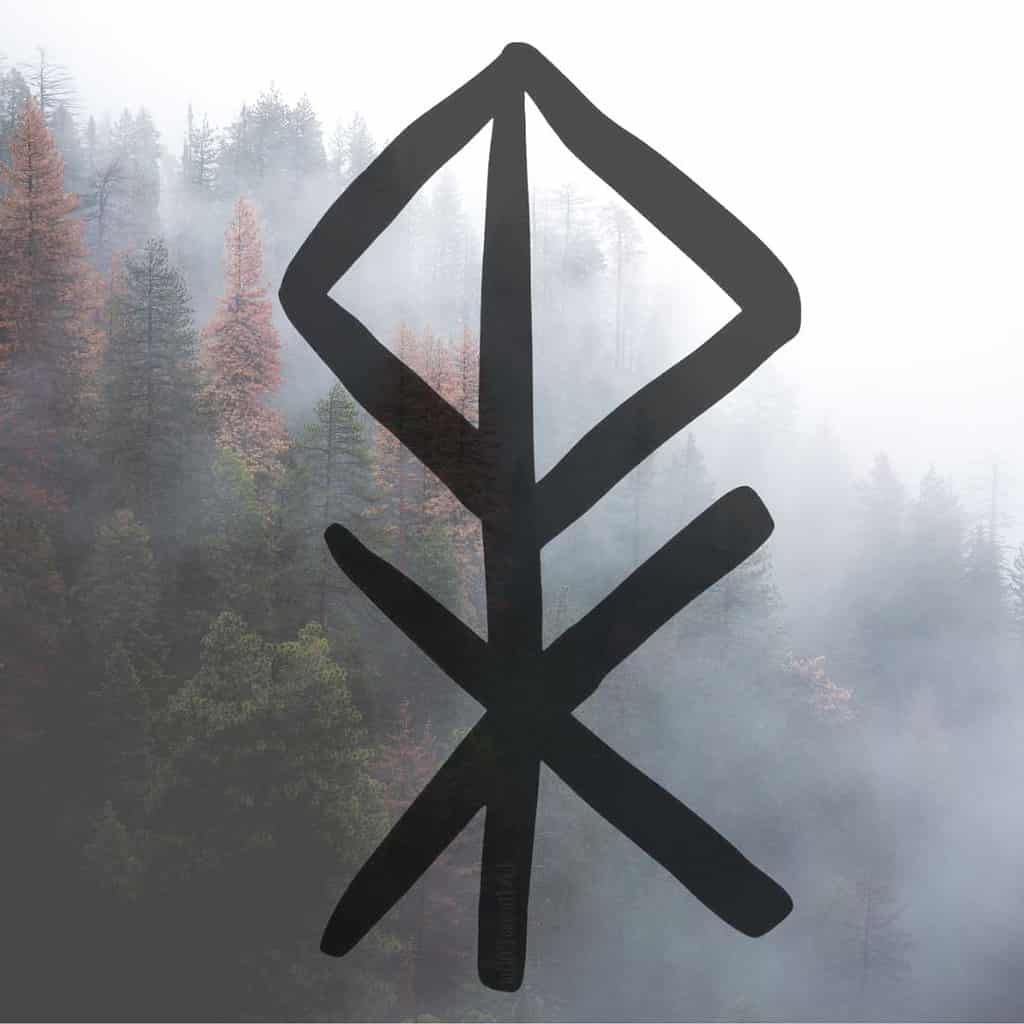
- Runes Used : Gebo, Wunjo, Inguz
- Summary : This bind rune fuses Gebo, associated with gifts and partnerships, Wunjo, symbolizing joy and happiness, and Inguz, linked to fertility and new beginnings. It is particularly effective in enhancing the loving bonds and emotional warmth within a family, promoting happiness and new growth in personal relationships.
- This configuration not only deepens connections but also fosters an environment ripe for positive changes and joyful interactions.
#8: Strength in the Smith’s Hammer
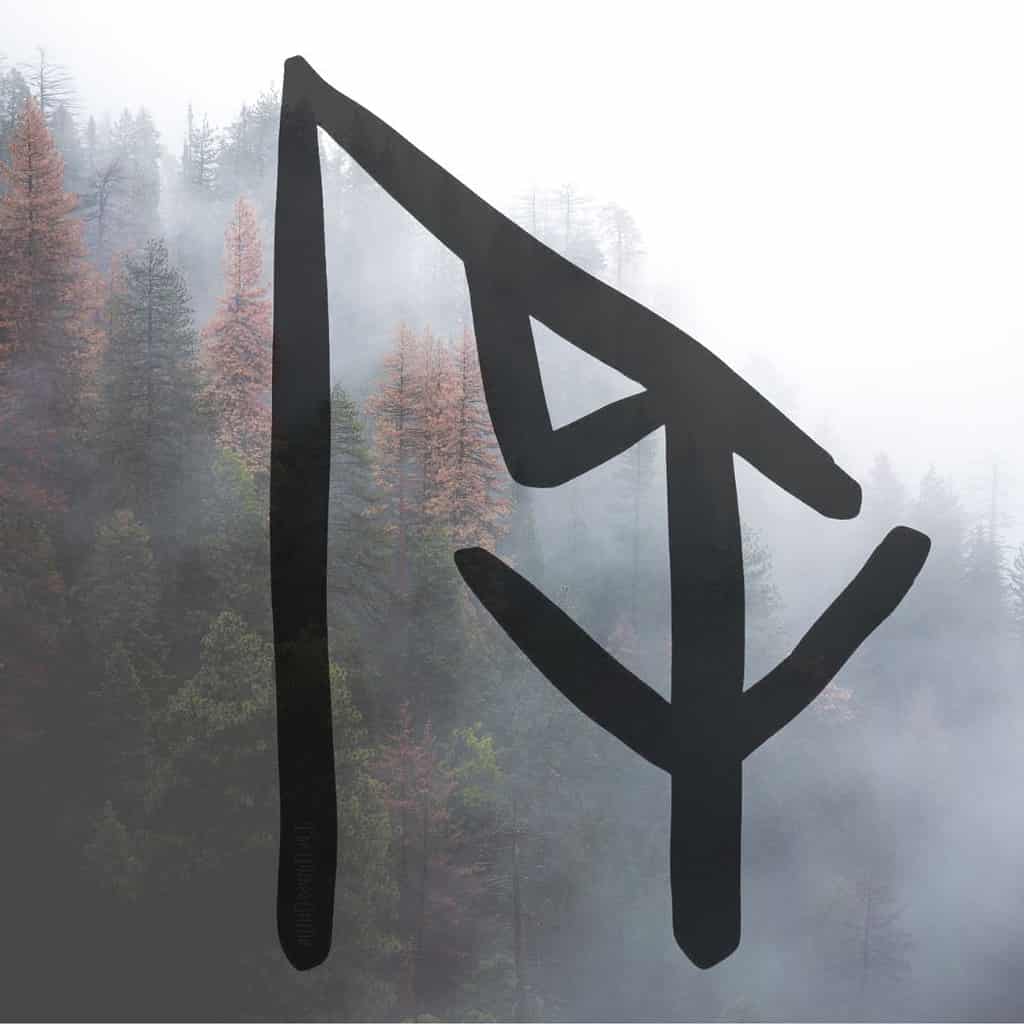
- Runes Used : Uruz, Thurisaz, Kenaz
- Summary : This powerful blend of Uruz for strength and endurance, Thurisaz for defense and reactive force, and Kenaz for knowledge and craftsmanship, symbolizes the resilience and robustness required in both physical and creative endeavors.
- Ideal for those who face tough challenges or need to sustain long periods of effort, this rune enhances both physical vigor and the intellectual prowess needed for crafting solutions.
#9: Friendship in the Mead Hall
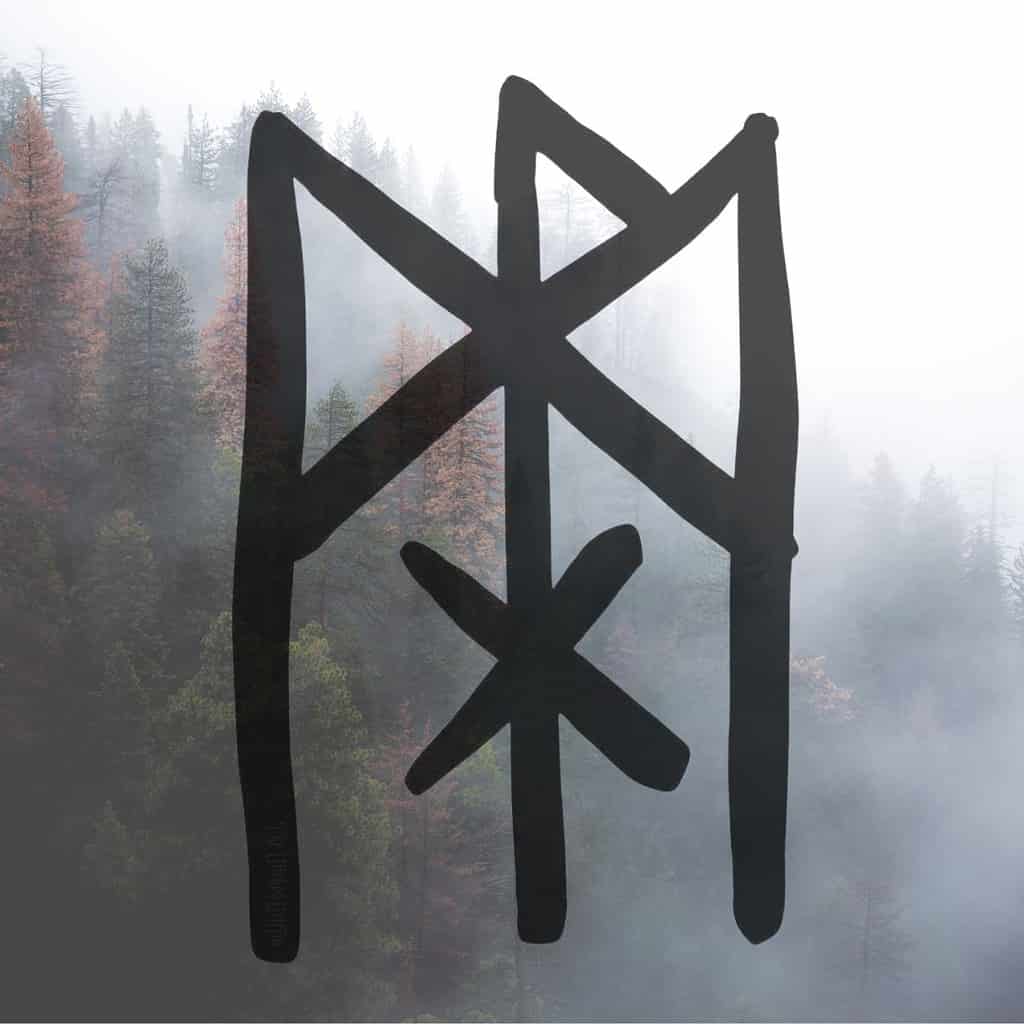
- Summary : Combining Gebo for generosity, Mannaz for community and human connections, and Wunjo for joy and pleasure, this bind rune fosters deep and meaningful friendships. It’s particularly suited for enhancing social bonds and creating an atmosphere of joy and goodwill in group settings, making it perfect for communal gatherings and team-building.
#10: Memory in the Poet’s Quill
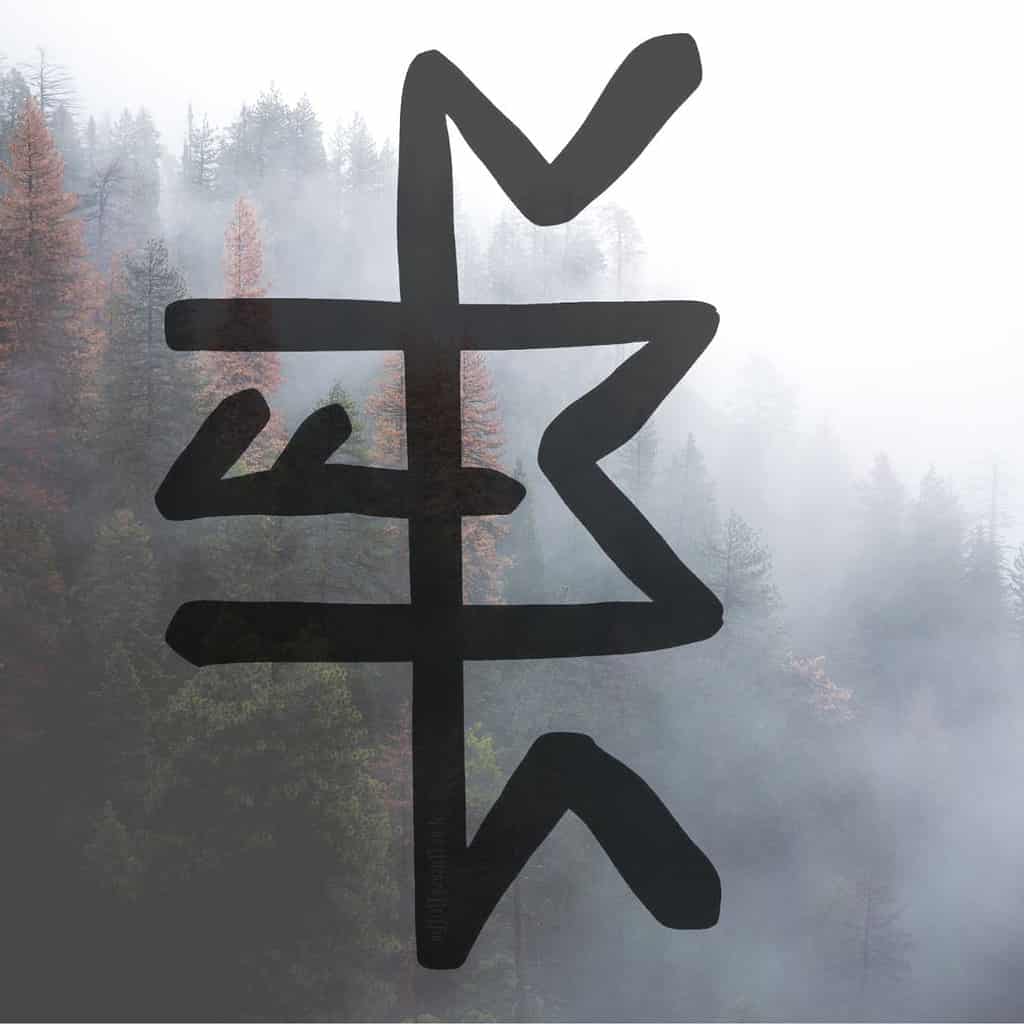
- Runes Used : Ansuz, Perthro, Ehwaz
- Summary : This bind rune links Ansuz, the rune of communication and inspiration, with Perthro, representing fate and secrets, and Ehwaz, symbolizing movement and progress.
- It aids in the retention and recall of knowledge and the inspiration needed to communicate ideas effectively, making it a boon for writers, historians, and all who treasure the power of memory and storytelling.
#11: Justice in the Chieftain’s Gavel
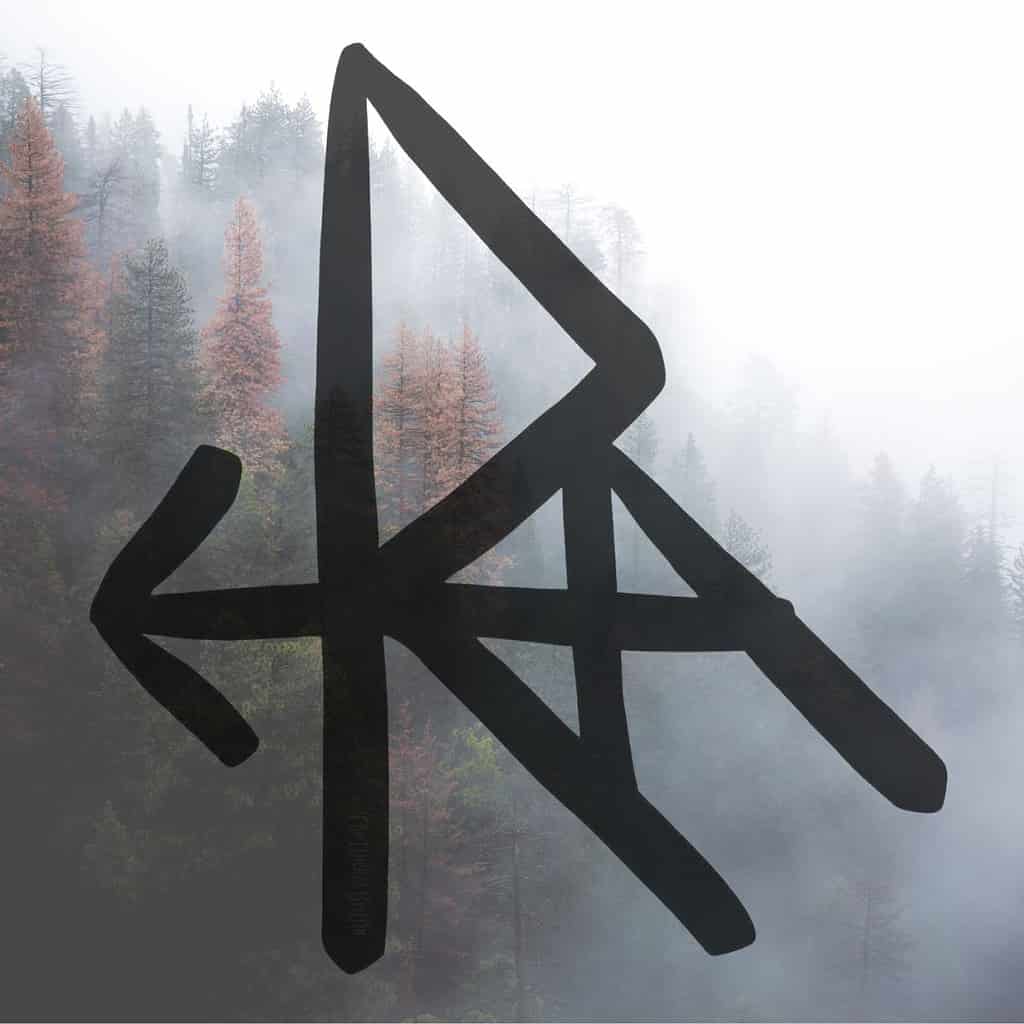
- Runes Used : Tiwaz, Mannaz, Raidho
- Summary : Tiwaz for justice and honor, Mannaz for social order, and Raidho for the right path combine in this rune to uphold fairness and integrity in dealings.
- This is ideal for leaders and legal professionals, ensuring that justice is served and that they lead others with ethical guidance and moral certainty.
#12: Healing in the Healer’s Herbs
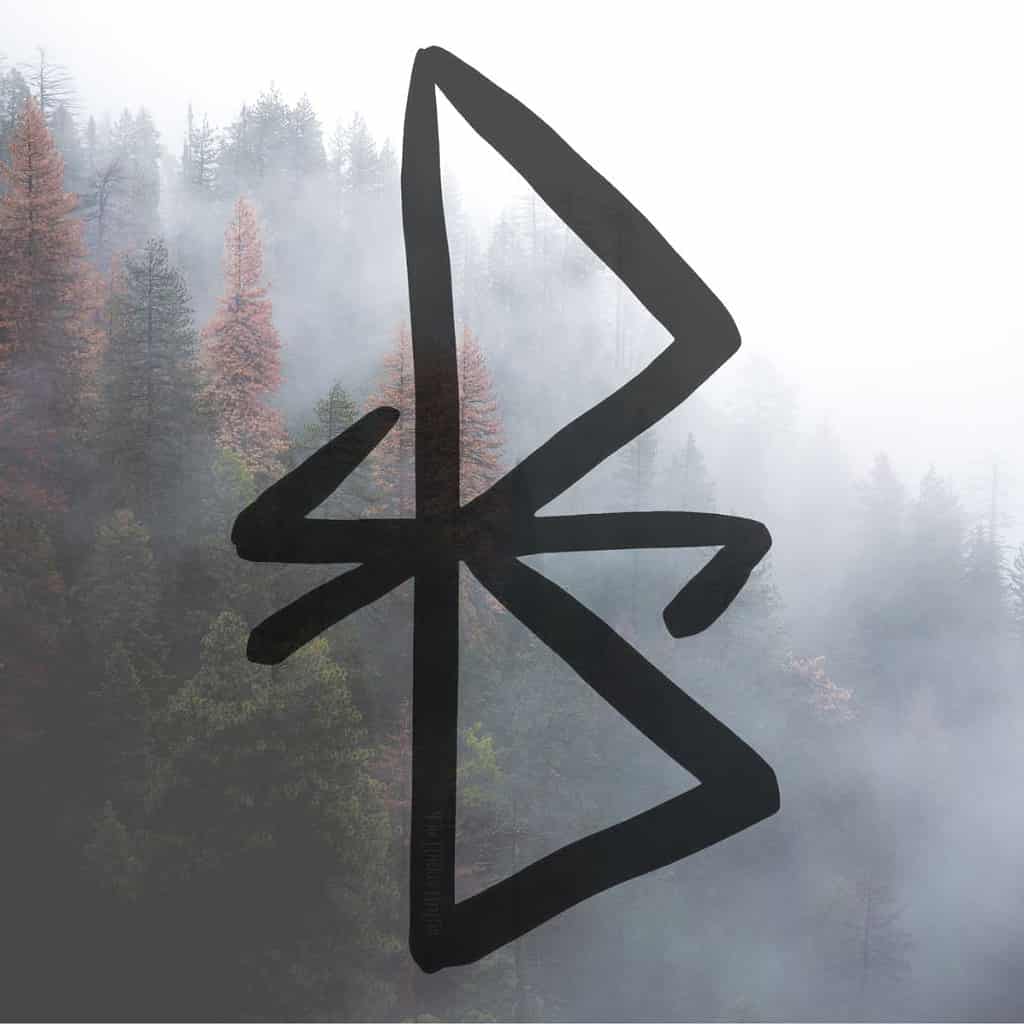
- Runes Used : Laguz, Berkano, Sowilo
- Summary : Laguz, embodying water and healing properties, Berkano for growth and renewal, and Sowilo representing the sun and solace, come together to enhance healing capabilities.
- This rune is perfect for those in the healing professions or seeking personal health improvements, promoting physical and emotional healing.
#13: Magic in the Runemaster’s Scroll
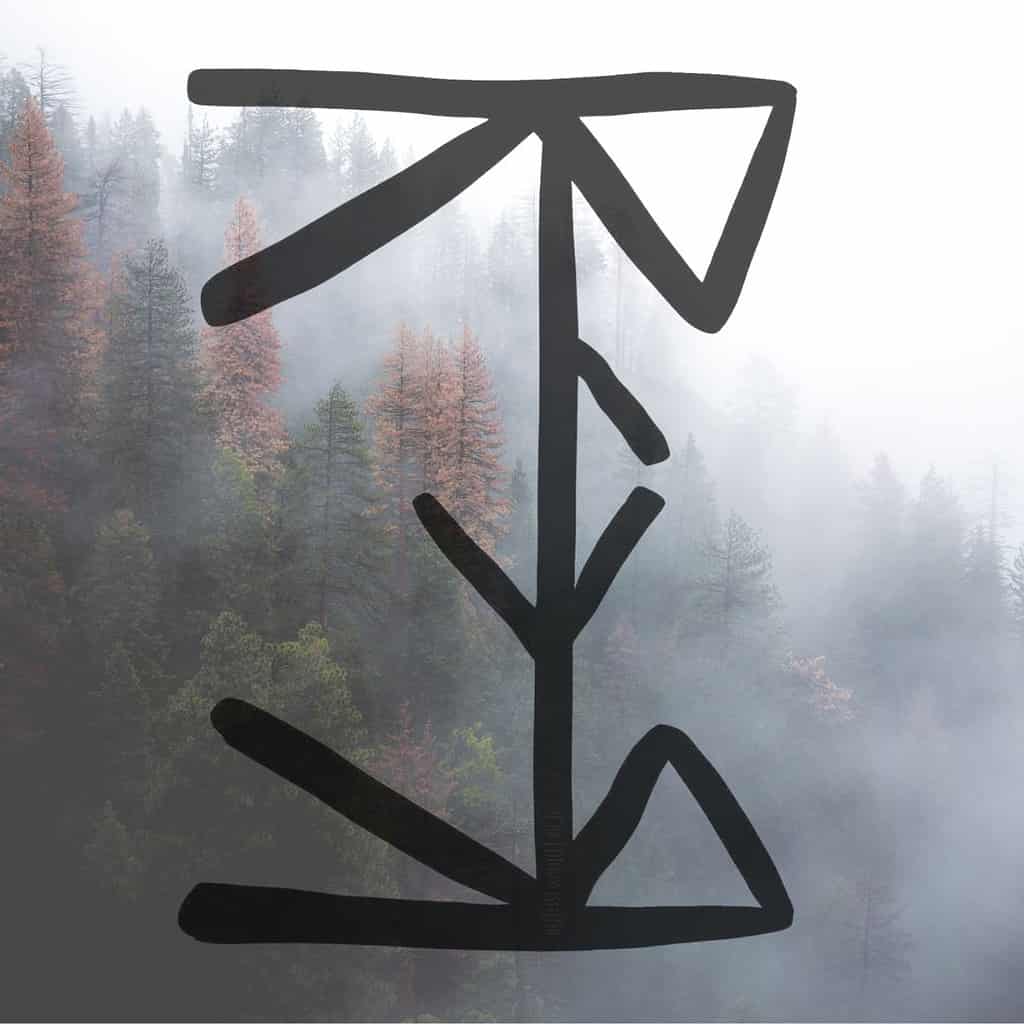
- Runes Used : Ansuz, Perthro, Raidho, Algiz
- Summary : This combination captures the essence of communication and divine inspiration (Ansuz), the mysteries of fate (Perthro), the journey of life (Raidho), and protection (Algiz). It’s crafted for those who delve into the mystical and the arcane, providing protection while they explore and manipulate the hidden forces of the universe.
#14: Fertility in the Farmer’s Fields
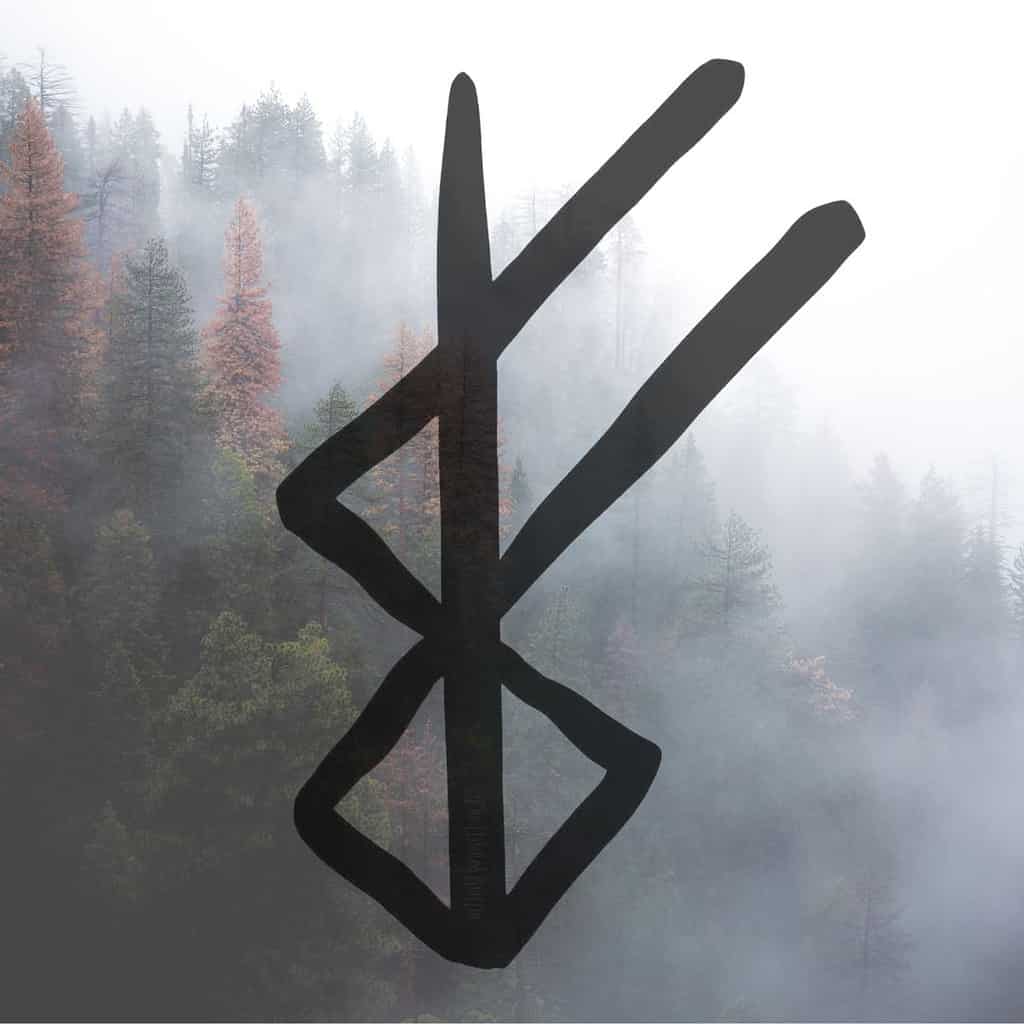
- Runes Used : Inguz, Berkano, Fehu
- Summary : Inguz for fertility, Berkano for growth, and Fehu for wealth and prosperity are intertwined in this bind rune, which is ideal for agricultural endeavors and any activity where new growth and abundance are desired.
- It supports not only the fertility of the earth but also the prosperity that comes from diligent cultivation.
#15: Courage in the Berserker’s Cry
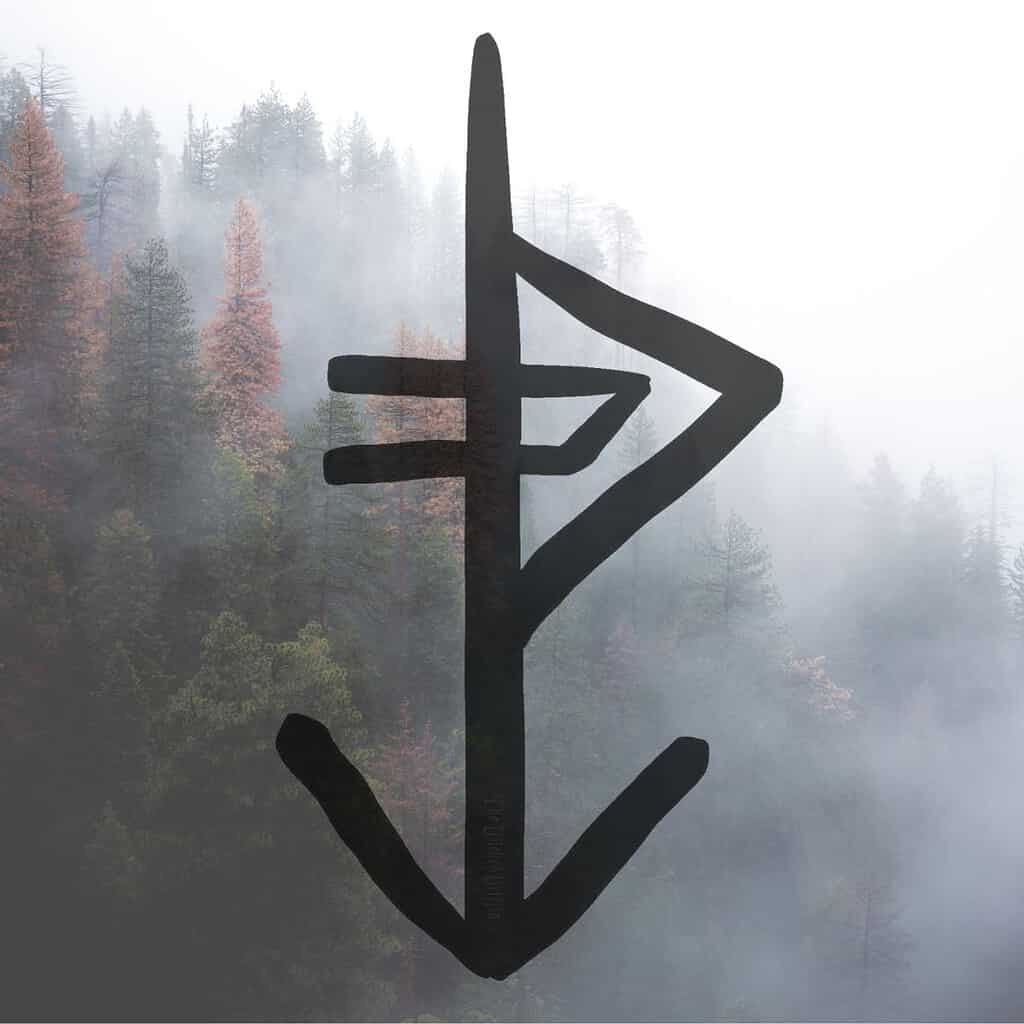
- Runes Used : Uruz, Tiwaz, Thurisaz
- Summary : This rune draws on the raw strength of Uruz, the victory and honor of Tiwaz, and the protective force of Thurisaz. It embodies the ferocity and bravery of Norse warriors, offering strength and courage to those facing daunting challenges or needing to overcome fears.
#16: Navigation in the Star’s Reflection
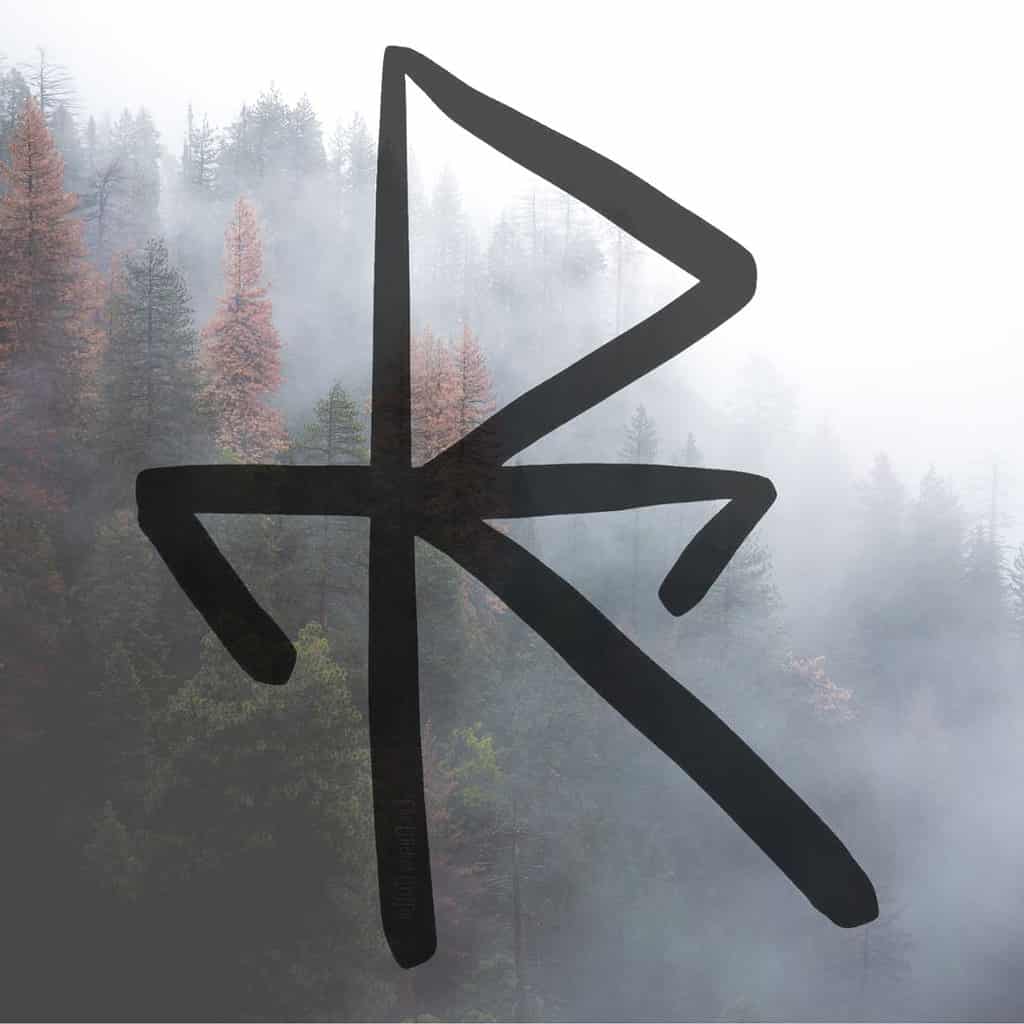
- Runes Used : Raidho, Kenaz, Laguz
- Summary : Raidho for travel, Kenaz for light and guidance, and Laguz for intuition and emotional insight combine to guide users through both physical and introspective journeys.
- It ensures clarity and purpose in navigation, making it invaluable for travelers and spiritual seekers alike.
#17: Craftsmanship in the Carver’s Knife

- Runes Used : Kenaz, Raidho, Jera
- Summary : Kenaz, representing the craftsman’s fire, Raidho, the journey of creation, and Jera, the rune of successful outcomes, are united to enhance skills in craftsmanship and creativity.
- This rune aids artisans in achieving perfection and seasonal fruition in their work.
#18: Peace in the Raven’s Flight
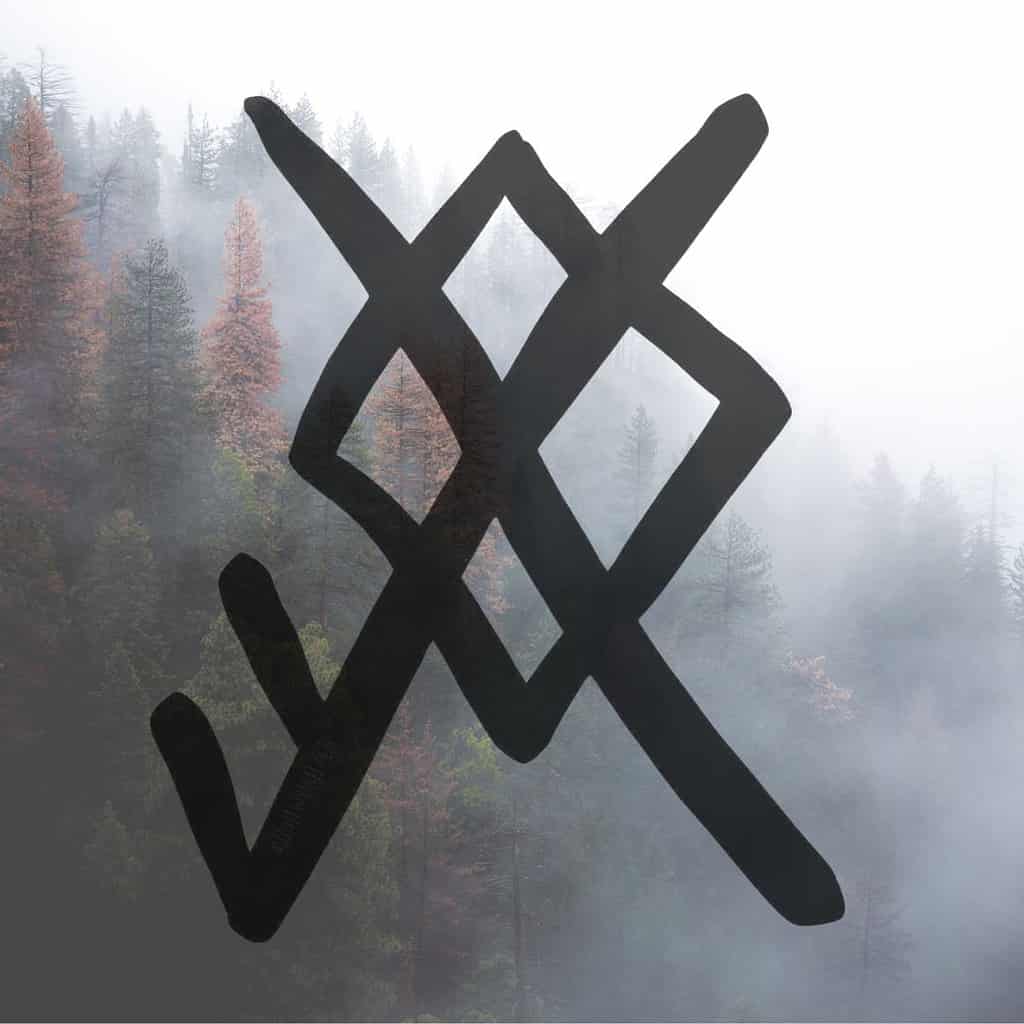
- Runes Used : Ansuz, Gebo, Inguz
- Summary : This rune utilizes Ansuz for wise communication, Gebo for harmonious exchange, and Inguz for potential and peace. It is especially suited for diplomats and mediators, helping to foster peaceful interactions and resolutions.
#19: Endurance in the Longship’s Keel
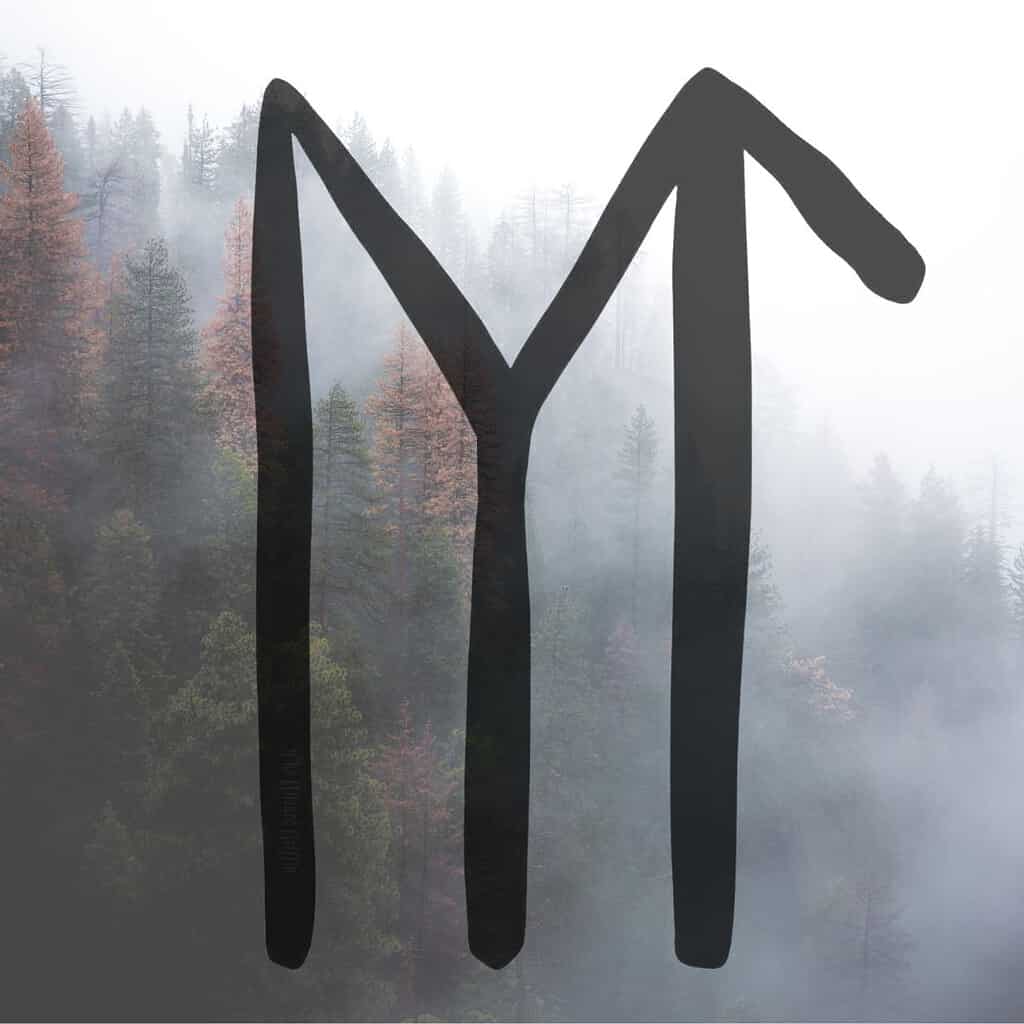
- Runes Used : Ehwaz, Uruz, Laguz
- Summary : Combining the trust and partnership of Ehwaz, the strength and stamina of Uruz, and the adaptability of Laguz, this rune offers resilience and perseverance.
- It’s perfect for those undertaking long-term projects or enduring tough conditions, providing the stamina needed to succeed.
#20: Transformation in the Serpent’s Skin
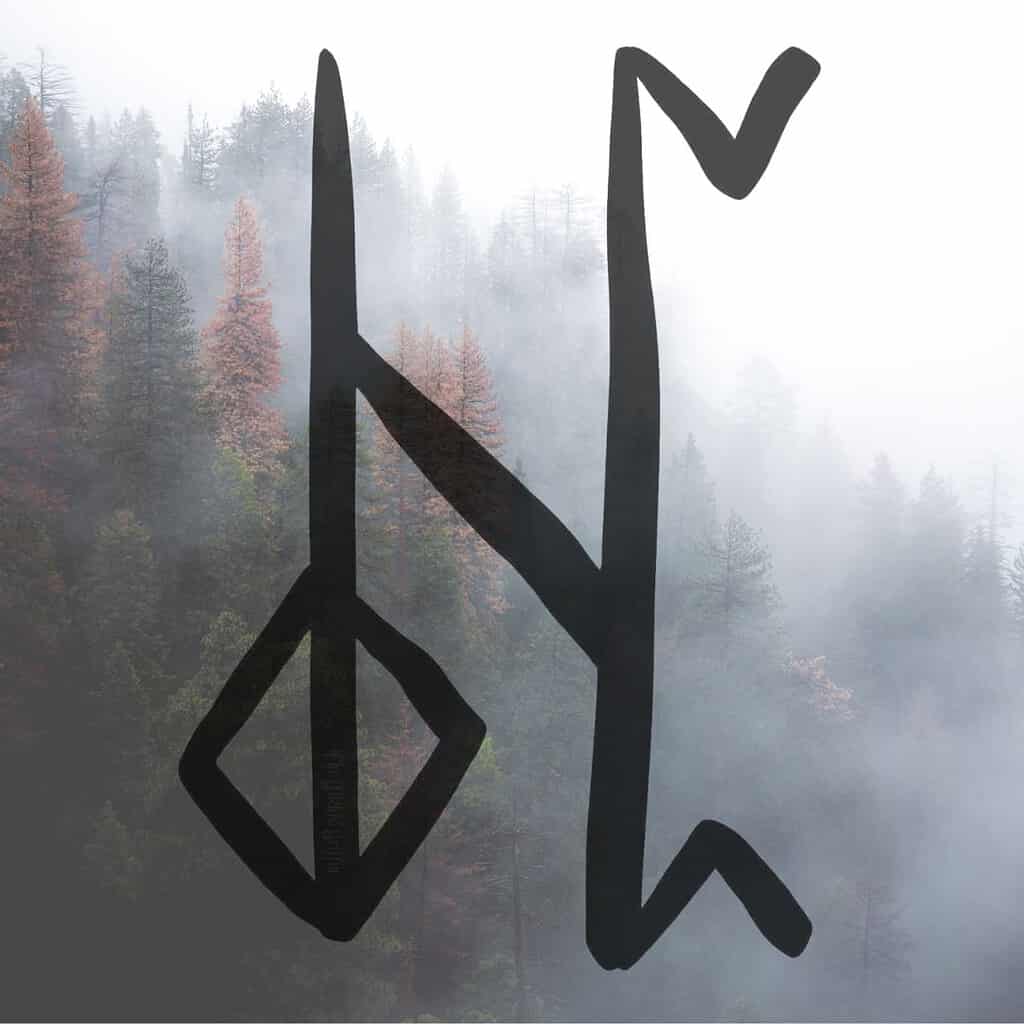
- Runes Used : Hagalaz, Perthro, Inguz
- Summary : Hagalaz for disruption, Perthro for fate and mystery, and Inguz for new beginnings are woven together in this bind rune, aiding in personal transformation and renewal.
- It supports those going through significant life changes, helping to navigate transitions with insight and resilience.
Crafting Your Own Bind Runes
The art of making bind runes.
Creating your own bind runes begins with a clear intention and a good understanding of the individual runes from the Elder Futhark. To craft a bind rune, start by selecting runes that resonate deeply with your specific needs or desires, whether it’s for protection, prosperity, or personal growth.
The physical act of combining these runes involves drawing them together on a piece of paper or engraving them onto a personal item, such as a stone, piece of wood, or jewelry. This process is not just artistic; it’s a meditative practice, where each stroke is imbued with your focus and energy, aligning the runes’ ancient power with your intentions.
Bind Runes in Practice
Once created, bind runes can be integrated into your daily life to enhance spiritual and practical outcomes. They can be carried as talismans, placed in strategic locations around your home, or used in meditation and ritual practices.
For instance, a bind rune for harmony might be placed in shared spaces to foster peace among occupants, while a rune for focus and memory could be kept in a study area to enhance academic pursuits. Regular interaction with your bind rune—whether through contemplation, touch, or by simply keeping it in your presence—helps to reinforce its influence and deepen your connection to its energies.
Challenges and Considerations
While crafting and using bind runes can be enriching, it also comes with responsibilities. Ethically, it is important to use bind runes with respect for their origins and the cultures they come from. Spiritually, practitioners should be mindful of not only what they wish to attract but also what they might inadvertently repel or release as a result of their rune work.
Furthermore, there’s a practical aspect to consider: not all intentions may manifest as expected, and the outcomes can sometimes be a reflection of the user’s true needs versus their wants. Therefore, continuous learning and adaptation are crucial as one delves deeper into the art of runic magic.
Final Thoughts
The ancient art of crafting and utilizing Norse bind runes offers a profound way to influence both the tangible and intangible aspects of our lives. As we have explored, these symbols hold the power to protect, empower, and transform, bridging millennia-old wisdom with contemporary challenges.
By embracing bind runes, individuals deepen their connection to the spiritual heritage of the Norse and enrich their modern practices with a touch of magic that is both ancient and profoundly relevant. As you incorporate these potent symbols into your life, remember that they are not just relics of the past but dynamic tools for personal and spiritual empowerment today. Engage with them thoughtfully and creatively to truly harness their potential.
About the author Jacqueline Fatica
The Wicked Griffin is my heartfelt venture, where I pour my creativity into crafting jewelry that not only stands out but also embodies the essence of nature, the allure of Runes, and the profound narratives of European history.
Every piece is designed to be a symbol of personal expression, carefully woven with my passion for the natural world and a unique artistic vision.
Additionally, the Wicked Griffin blog is a cherished space where I share the enchanting inspirations behind the jewelry and the captivating myths from European folklore, inviting you into a realm where artistry and legend converge.
👉 I don't mind usage of my images so long as credit to The Wicked Griffin is given and provide links when possible 😉
More About Me

Rune Magic 101: What are and How to Make Bind Runes
Those who are starting their path in Rune Magic usually feel a bit lost when it comes to Bind Runes and how to make them. Keep reading and learn how to make your own personal amulets and sigils with these simple yet powerful tools!

Ancient Symbols…
What are bind runes.
Bind Runes are one of the two types of combined runes (the other is the Lønnrune r or Cypher Runes , click here to learn more about them! ) and they are two or more runes bound together , often used with magical purposes these days.
These symbols are pretty rare in Viking Age inscriptions and in most cases, they simply displayed the name of the carver or served as an ornamental piece.
Their use as magical amulets continued later in Iceland . We can find some examples of bind runes in Medieval manuscripts around the 1600s (for example, the famous Icelandic staves or Galdrastafir, such as the Vegvisir and Helm of Awe, are a combination of runes with magical purposes)

Nowadays, bind runes are gaining some popularity again and many people use them as sigils or amulets and to cast spells . By combining different runes, you are asking the gods for a result – good or bad – for you or another person.
Types of Bind Runes
There are many ways to classify these magical symbols. Here are the two bind runes types based on their shape :
Which at the same time can be divided into two other types:

The most common bind rune and it’s made with two – rarely three – runes that share the same axis .
In spells, they are used to manifest a reality .
B. Same-Stave Rune
We can find this type in Scandinavian runic inscriptions. A series of runic letters are written in a specific order along a common axis.
In magic, you can use them to attack a problem .

2. Radial or Stave

We can find some examples of this type of bind runes in the Icelandic staves or Galdrastafir. Each rune or combination of runes stems from a common centre point.
Defense spells or amulets are the perfect candidates for this kind of design.
How to Make Bind Runes
The most crucial step in this process – and most often, what deters beginners the most – is to study the runes and understand their individual meanings first . We have to be careful with what runes we mix together and pay attention to the “hidden” characters that might appear in the final design, as they can affect the general purpose of the spell.
At the same time, don’t be so afraid that you feel completely paralyzed . The best way to learn is by taking the first step and practise as much as possible! Start with a simple two-rune sigil for a short-term goal and try to analyse the bind runes made by others until you understand them.
There are many runic alphabets to choose from, but if you are a beginner, the most common to start is the Elder Futhark . If you don’t know where to look for more information, check out this list of book recommendations for beginners or download a copy of the Elder Futhark cheat-sheet.

Step 1: What do you want to achieve?
Before you start picking any runes, do some visualization work. Think about the goal of your spell and what steps you would need to take to achieve it . Once this is clear, the next step will be easier!
Step 2: Select your Runes
Think or read about each rune and its meaning and select those that fit your purpose the best . Whether this is your first bind rune or you are a seasoned rune caster, it is better to not over-complicate things: limit your choices to two or three, five at most.
This can be the most difficult step, as some runes have ambiguous meanings, so study different resources and take your time!
Step 3: Time to create your design!
Pick some pen and paper and start drawing as many combinations as you can . Don’t worry too much about it being right or wrong at this point, let your imagination fly and draw everything that comes to your mind!
Once you have your sketches, I recommend giving them some time . Do something unrelated, like going for a walk: sometimes the perfect bind rune will come to your mind out of the blue or in your dreams.
If this isn’t the case for you, have a look at your paper again and pick the ones that speak to you the most. Study them to see if there are any hidden or reversed runes that can alter your spell.
Step 4: Select your material
Any material will do but take some time to think about the purpose of your bind rune . If it’s serving a long-term goal, you would want to select a hardy material that can stand the test of time ( like wood or stone ) and if it’s something for the near future, regular cardboard or paper is more than enough.
Take into consideration that you will have to carry your bind rune with you or have it somewhere in sight, so pick something that is practical for you and your situation . For example, you can create a pendant and wear it as a necklace or an art piece to hang it on your walls.

Step 5: The Creation Ritual
You have your intentions clear, your bind rune design and your materials ready… Now it’s time to give your amulet its power!
There isn’t a fixed set of rules for this, really. The most important aspect of this step is to focus on your intent while you carve or draw your bind rune.
My personal choice is to prepare a space with a candle and some incense for a calm atmosphere and meditate for 10 or 15 minutes to clear my mind.
Once you are focused on the task ahead, start carving each rune of the bind rune individually, until you create the final design. Think about each rune’s meaning and how it’s going to help you.
After you are finished, take some time to meditate and think about your intent again with your new amulet between your hands. To finish your ritual, thank the Gods and Goddesses for their help and leave a small offering for them.
Step 6: Use your Bind Rune
This is the last step, I promise!
After you create your bind rune, put it somewhere where you can see it . For example, in your altar, your work desk, at your front door, carry it in your handbag… This will serve as a reminder of your goal. Keep the bind rune until you achieve it.
Once you reach what you asked for, it’s time to get rid of your bind rune, as it has done its job. This depends on the material, of course! If you used paper, you can simply burn it. In the case of using a harder material, you can bury it in the ground in a special place for you ( for example, under a tree or in a lake – but make sure the materials aren’t polluting these spaces!)
Lastly, do a little ritual to thank the Gods and Goddesses again and leave them a little offering.
Bind Rune List: Examples and Meanings
Here is a little list with some examples of Bind Runes and their meanings:

Bind Rune for Prosperity

Home Protection Bind Rune

Love Bind Rune

The “Wayfinder” Magical Compass

Icelandic Stave for Protection in Battle

Bind Rune for Good Health

Bind Rune for Good Luck

Bind Rune for Courage
Remember that these are just some examples, so open your mind, experiment and start creating your own!
Learn More About Rune Magic and Bind Runes
The world of runic alphabets and rune magic is very vast! To learn more about the history of runes and their magical uses, make sure to get your hands on these books :

( Transparency Disclaimer: this post contains affiliate links from the Amazon Services LLC Associates Program. As an affiliate and Amazon Associate I will earn a small commission from qualifying purchases, at no extra cost for you )
To receive more content like this directly to your inbox, remember to join our Clan by clicking here ( and you will get a 20% discount code for your first order!)
32 Comments
I had been searching for the appropriate method to bind runes and I found nothing really. Your work is exceptionally worthy. Thank you so much for making it simple for the readers.
Unless you are the same person you should realize this article is IDENTICAL literally word for word to JC Marco book “Elder Futhark Bindrunes” which was published the same year. Don’t know who copied who but its literally word for word.
I didn’t know about his book up until now, my post was first created on October 2020, and I see his book was published in June 2021. Just in case there are any doubts about this, the first record in the Wayback machine is from the 16th of December 2020 and can be checked here
It’s not word for word at all? It is very close though.
What sort would this bind rune be: two Fehu’s back to back, so it looks like a tree with branches in the air?
I think that one could be a cipher rune or lønnruner, I explain everything about them here
And after having achieved my purpose, if I don’t want to get rid of my runes, would that be any problem? Note: Sometime ago I read that specially for healing health problems it would be important to get rid of the runes.
So, a lot of the power of magick comes from the power of intent. The runes work as you intend them to. So I see no problem with keeping them if your intent is not to heal with them again. However, if you fall ill again I would make a new one to get better.
Hello, I appreciate yor sharing this. I have questions though, and oftentimes I dont find answers. Here’s one: if runes are placed as facing sides of world for balance but that way appear in murkstave, does it channel its negative aspect even if it is not meant that way? I hope it makes sense. Thankyou.
I appreciate the knowledge, but not all people that practice rely on the blessings of a deity. I understand that its common practice, however I’ve done just fine without the need to offer anything to the Gods. Yeah, they may have given this knowledge. But, I’m the one putting in the work and energy into activating the rune. Why do I need to split my energy up to giving the Gods an offering just because they watched?
I guess I’m asking because several times you mention giving them offerings and thanks and it doesn’t make sense to me. Like I said, happy to thank them, but unless they’re directly empowering me to empower the rune, i see no need to give them an offering. No, I’m not Christian, not Atheist. I just have a different relationship with the Gods than most people do. To me it’s the same as giving my buddy $10 for a battery jump when all he did was watch. Anyway, I guess I answered my own question.
Thanks for the knowledge.
In your example, your buddy who helped you for the battery jump did show up with his car to help you. Sometimes, you might offer them 10 bucks, sometimes a coffee or sometimes a simple thank you. It’s about the same for the Gods (I’m not here to impose any beliefs, I just want to answer your question with my point of view). Even if the Gods did not write the bindrune you are making, they are still there and they might be the ones guiding you. A simple act of thankfulness will do =)
Is it ok to tattoo bindrunes?
Leave a Reply Cancel reply
Your email address will not be published. Required fields are marked *
Privacy Overview
Nordic Perspective
Old Nordic Symbols: Norse Runes & Viking Ornaments (Meanings & Examples)
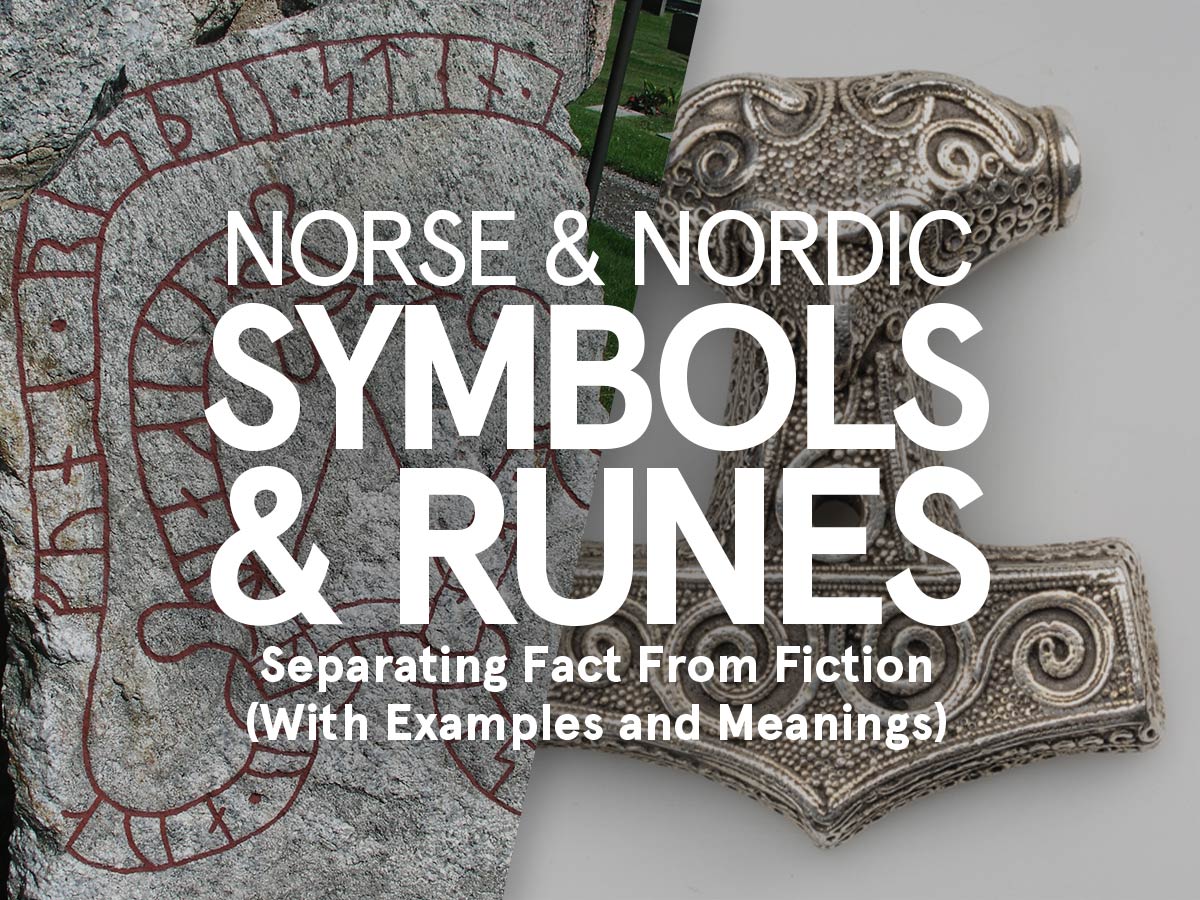
Old Norse mythology is filled with fascinating symbolism, and the runic alphabets of Germanic Europe have told numerous tales of heroic deeds and tragic deaths over the years. Having worked with graphic design for most of my adult life, I’m a huge fan of typography and symbolism, and also a huge history nerd. So I’ve spent a lot of time studying and appreciating the Viking symbols left behind on runestones, jewelry, weapons, armor, and other items from the Viking Age.
But the world of Norse symbols is not without its controversies and misconceptions; from extremist groups trying to hijack the symbols to serve their agendas, to magical sigils with questionable historical accuracy spreading like wildfire among millennials (I’m looking at you Vegvisir ).
So let’s clear some things up and go through the facts and myths surrounding Norse runes and symbols, how they look, and what we know about their meaning.
Hopefully, you’ll find this as fascinating as I did, and learn a thing or two along the way.
ℹ️ For the past 10 years, I’ve studied Nordic symbolism of all kinds, with a specific focus on the Norse world during the Viking age. In this article, I’ve listed Norse runes and symbols that have been found in Scandinavia and dated back to the Viking age. I’ve specified the source of each symbol, such as a specific runestone or piece of jewelry, so you can look into it further if you feel like digging deeper.
For the sake of clearing up common misconceptions regarding Viking symbols, I’ve also included some symbols that are commonly and mistakenly thought to be connected to the Vikings, and explained why these symbols have not been found to be linked to the Norse people or culture.
Elder Futhark Runic Alphabet (the Germanic Runes)
Younger futhark runic alphabet (the viking runes), medieval runic alphabet, dalecarlian runic alphabet, meanings and explanations of the viking runes (old norse alphabet to english), what do upside-down runes mean, the meanings attached to elder futhark runes, the medieval runic alphabet: futhork, dalecarlian runes (late 1500s to 1900s), the real viking symbols: authentic norse symbols dating back to the viking age, the false viking symbols: nordic symbols commonly (but likely mistakenly) linked to norse mythology.
- More Ahistorical Symbols: Rudolphs Koch's Symbols in The Book of Signs
Let’s start by looking at the Runes, the letters of the Old Norse language the Vikings spoke, after which we will look at some of the symbols from the Viking Age specifically.
Rune Circle Metal Wall Art
Metal wall art featuring and inspired by designs found in archeological sites from Viking Age Scandinavia. Free shipping worldwide.
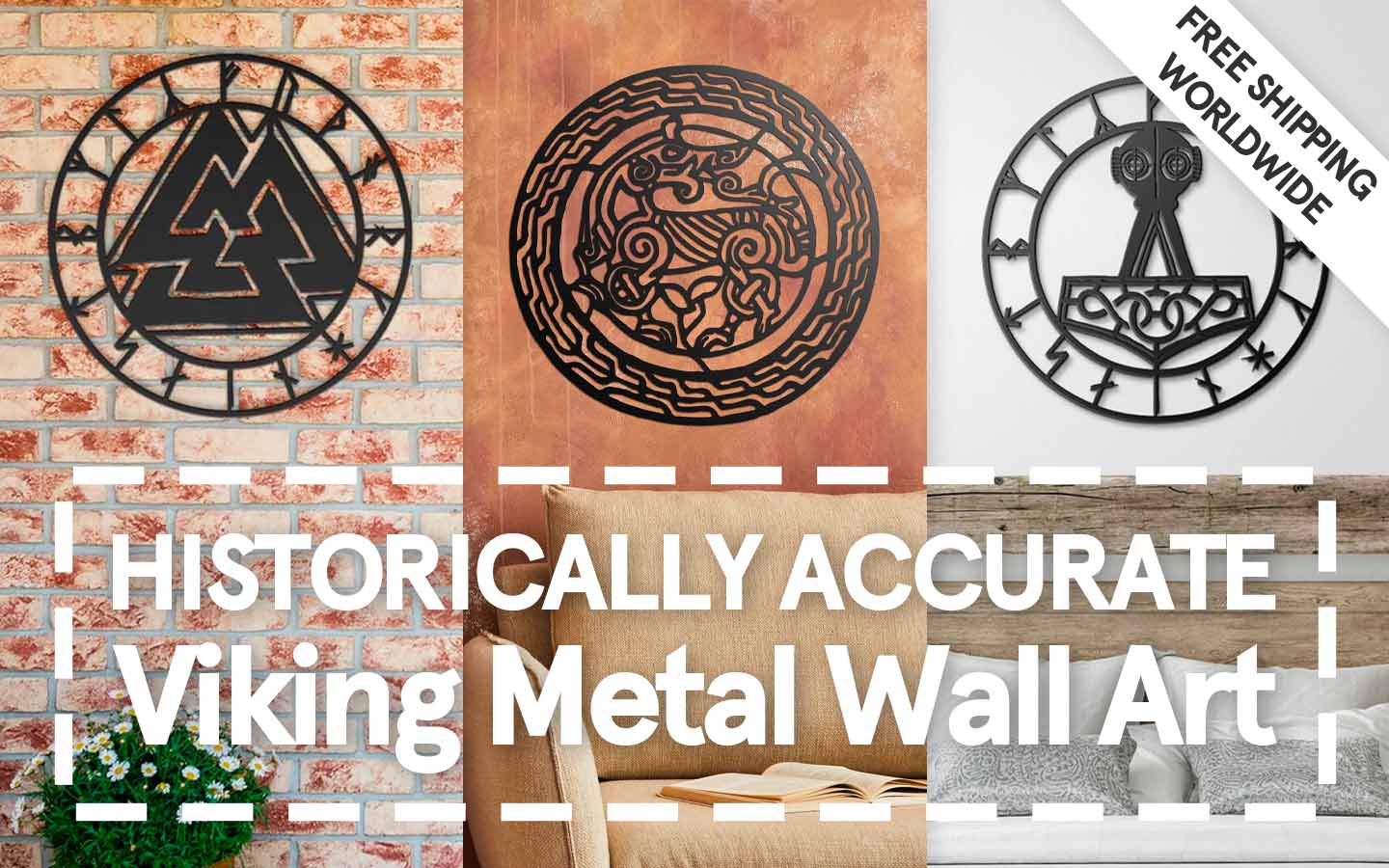
Germanic and Norse Runes in Scandinavia: A Timeline
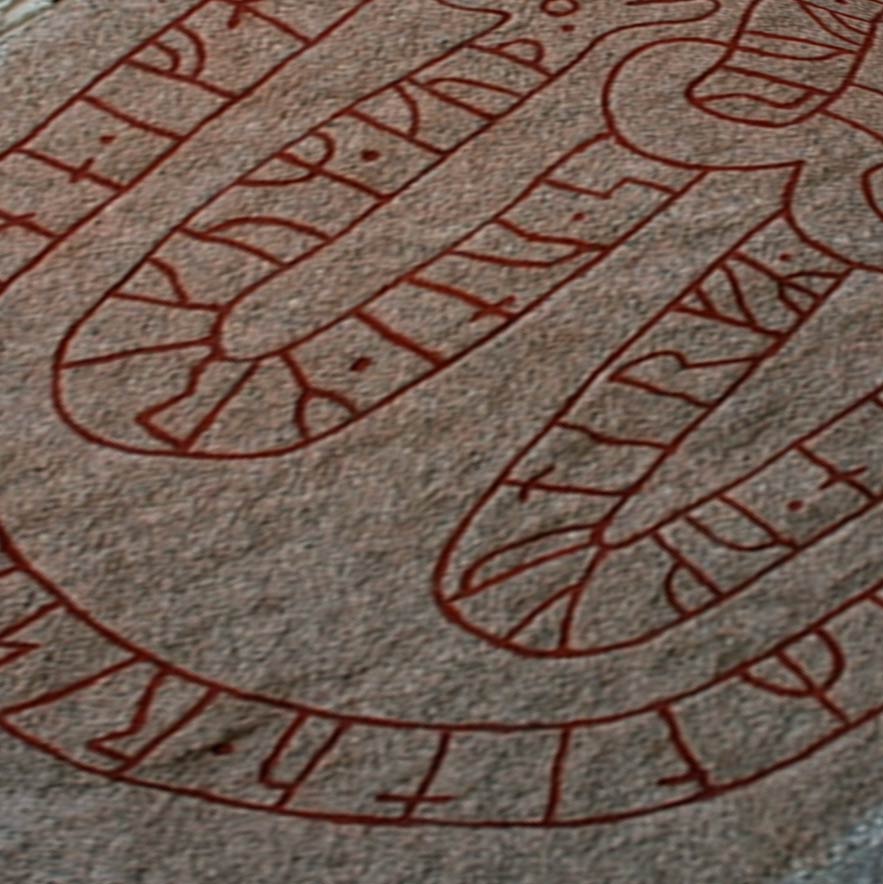
The first runic alphabet in Scandinavia.
600–1100 CE
A runic alphabet adjusted for the Old Norse language of the Vikings. Overlapped for a few centuries with Elder Futhark, but eventually replaced it altogether
1100–1600 CE
As Christianity and the influence of the Latin alphabet spread across Scandinavia, the runes were adjusted to include new sounds and letters. Stunged or dotted runes were used to pronounce in a different way.
1500–1900 CE
As the Runic alphabet gradually disappeared in Scandinavia, it held strong in the Dalarna and Gotland regions of Sweden in the form of the Dalecarlian runes..
When tales were told of Viking adventures, they were generally written down in Old Norse on runestones using the Younger Futhark runic alphabet (used in Scandinavia during the Viking Age).
This is also what people look for when it comes to Nordic lettering in general, so I feel like it’s fitting to start here, and then dive into both older and newer runic alphabets afterward.
Related Reading
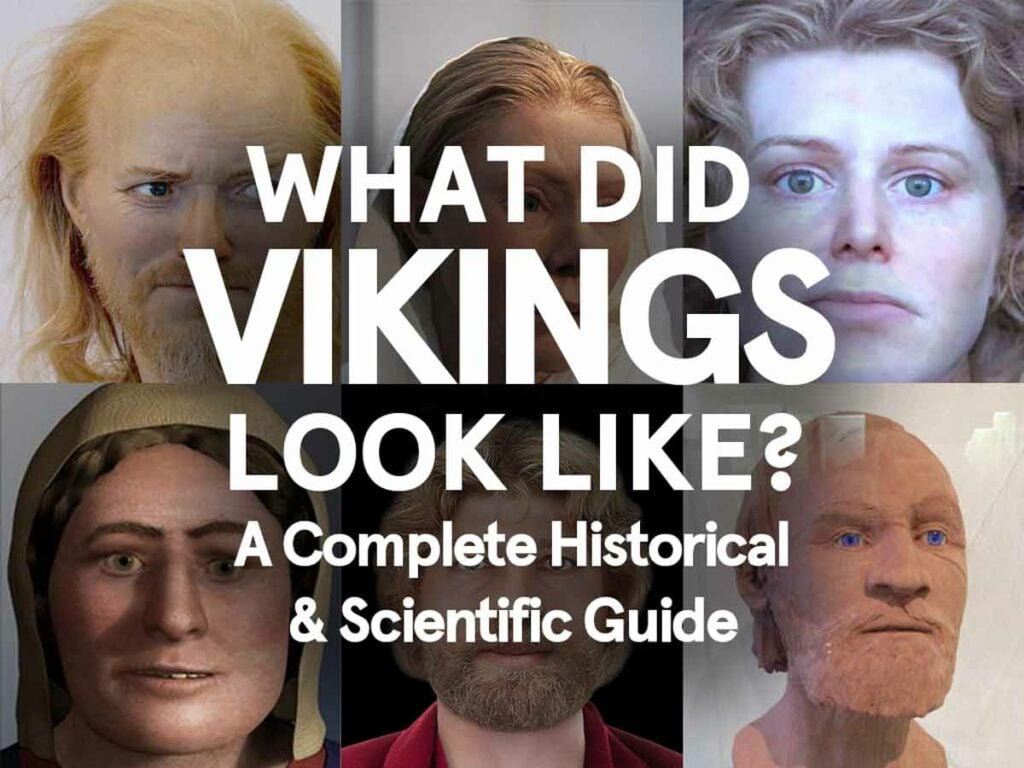
How Did Vikings Actually Look? (Complete Guide to Viking Traits)
Recent advancements in DNA analysis tech have led to extraordinary insight into how Vikings looked, from hair and eye color to size and ancestry. Scientists are now able to create eerily realistic facial reconstructions, getting us closer than ever to find out who they were and what the Vikings looked like. Read Article Now
Viking Age Scandinavian Runes & Their Meanings (Younger Futhark)
The Scandinavian Younger Futhark is a simplified version of the Germanic Elder Futhark, with 16 (instead of 19) characters specifically tailored for the Old Norse language.
By the time the Viking Age took off around 800 CE, Younger Futhark was the dominant alphabet in Scandinavia, and is the one you’re most likely to see on runestones and other objects from the Viking Age.
I’ve listed all the Old Norse runes as well as their Latin letter equivalent below:
Each rune is a letter in the Old Norse alphabet, and as such they all represent a sound similar to the Roman/Latin letters we use in the western world today. However, they also carried names that can sometimes be construed as a separate meaning associated with the rune, which runologist Victoria Symons explains in her book Runes and Roman Letters in Anglo-Saxon Manuscripts as she compares runes to Roman letters:
Runic letters, on the other hand, are inherently multivalent; they can, and often do, represent several different kinds of information simultaneously. This aspect of runic letters is one that is frequently employed and exploited by writers and scribes who include them in their manuscripts. Victoria Symons in Runes and Roman Letters in Anglo-Saxon Manuscripts (2016), p. 6-7
So it’s also important to note that although we have found plenty of evidence of the runes being used both as letters and as symbols with further meanings, each individual rune may not always have carried multiple meanings on top of the sound it made and the words it created in combination with other runes.
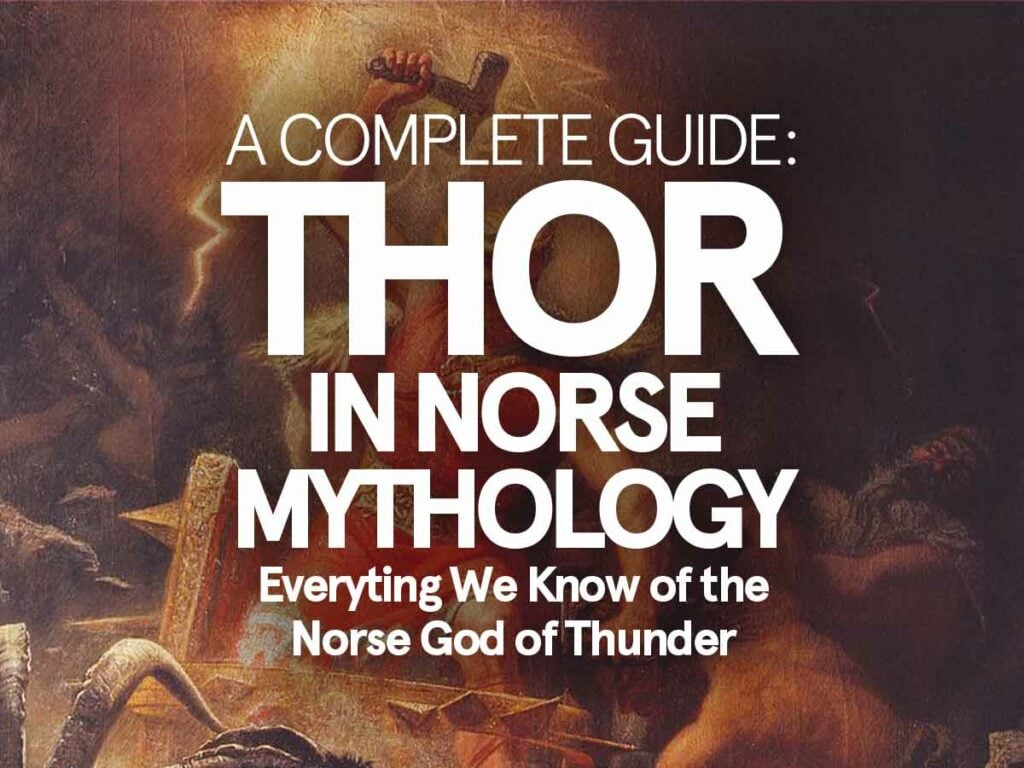
Thor in Norse Mythology: The Strong God of Thunder & Farmers
Believe it or not, the Thor from Norse mythology is not quite the handsome, chiseled, blond, and time-traveling hunk you’ve seen in the MCU movies. In Norse mythology, the thunder god is primarily described as a red-haired, pot-bellied, temperamental, and fiercely strong warrior, who loves to knock down vast quantities of mead and even known to dress up as a lady (!) in order to trick the giants to give back his lost hammer. Read Article Now
The Younger Futhark runes were also divided into two different styles: Long-branch runes and Short-twig runes .
Some argue that they were used depending on location; with Long-branch runes primarily used in Denmark, and short-twig runes primarily used in Sweden and Norway.
Others believe that instead of specifically Swedish, Danish, or Norwegian runes, their usage was more of a practical matter: If you wanted to write on stone, you used Long-branch runes, and if you wanted to write on wood, you used Short-twig runes.
I’ve seen many runestones in Sweden with Long-branch runes, so I am partial to the practical divide theory; that you used whatever type of rune was more practical for the medium you wrote/carved on.
For instance, here is a runestone I came across in Uppsala, Sweden that features long-branch runes:
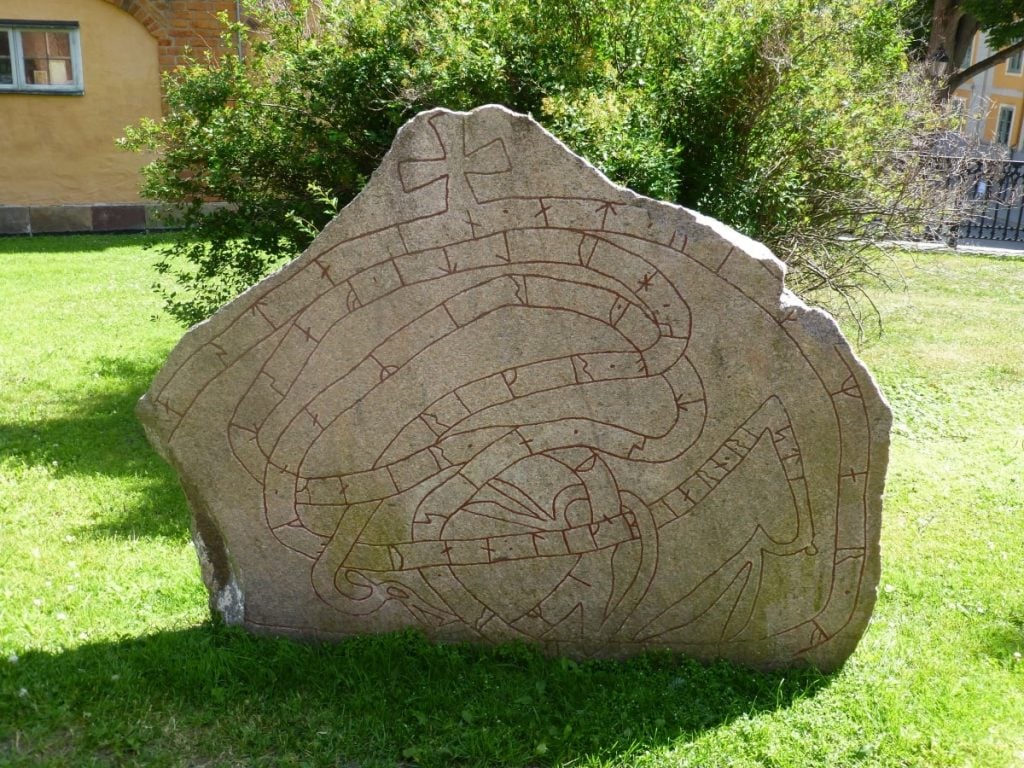
Since runes are mostly equivalent to our modern-day alphabetical letters, writing them upside down doesn’t change the sound they are attached to. This is especially relevant in many of the runestones, where the runes are written in circles and other irregular patterns, instead of on a straight line as we tend to do today.
We haven’t found any indication that they would mean something different upside-down when they were used in a way that would convey their inherent meaning (i.e. ᛋ = sun).
Next, let’s go back in time and look at when people in Scandinavia started using runes, which takes us all the way back to the Iron Age.
Germanic Runes and Their Meanings (Elder Futhark)
The Elder Futhark Runic alphabet consists of 24 runes, and was in use across all Germanic cultures since the Iron Age (starting around 200 CE), and in Scandinavia specifically deep into the Viking Age.
In other words, this is the first runic alphabet the Norse people (a.k.a. the Vikings) started using on their runestones, weapons, jewelry, etc.
It started being replaced by Younger Futhark around 700-800 CE, and was no longer in use by the 10th century CE, when the Viking Age was at its height.
The Elder Futhark started being used in Scandinavia around 600 years before the Viking Age started, but was still used by Vikings early on, before Younger Futhark took over completely.
The Proto-Germanic language spoken in Scandinavia and Northern Germany spread across Europe with the Germanic migrations that spurred on the fall of the roman Empire, and the Germanic Runes could be found across most of the European continent during the Iron Age.
Here’s how the Germanic language and runes spread across Europe and the extent of the Germanic migrations around the fall of the Roman Empire.
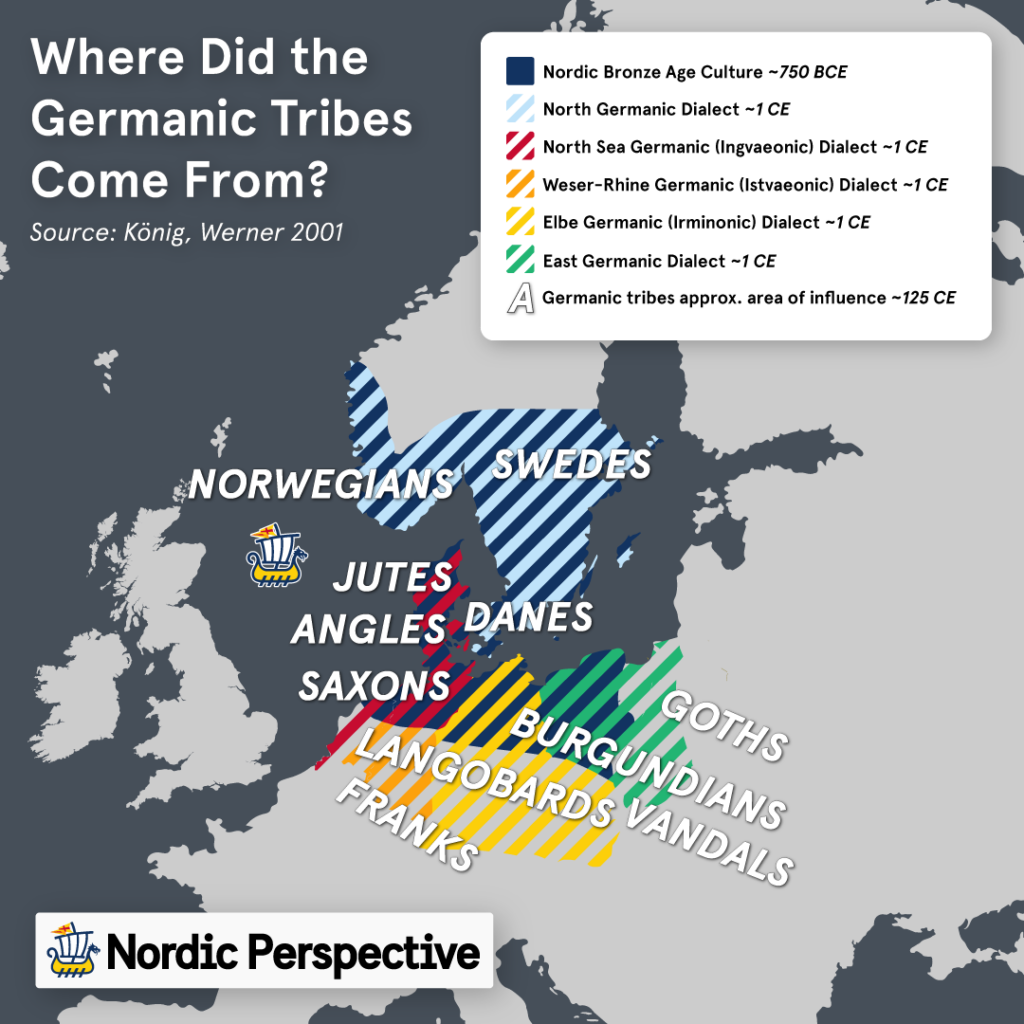
The Elder Futhark runic symbols were usually written as a rune row divided into three ætts (meaning “eights”, with eight runes in each ætt ). The first ætt is Frey’s, the second is Hagal’s, and the third is Tyr’s (the names of the first letters of each ætt ).
Below this is visualized in three rows:
As they both stem from the Nordic Bronze Age culture and language, the Germanic and the Scandinavian runes have the same meanings and origins.
However, due to differences in pronunciation and style in the Proto-Germanic and Proto-Norse languages, the names and sounds are slightly different (and there are of course 3 more runes).
Later Scandinavian Runes: the Futhork & Dalecarlian Alphabets
The Viking Age is generally agreed by historians to have ended with the successful invasion of England by William the Conqueror (who was a Norman of Viking descent ironically), specifically the decisive Norman victory at the Battle of Hastings in 1066.
Scandinavia slowly started getting Christianized around the same time, and as continental European influence grew in the region, the language slowly expanded.
The Old Norse language started including sounds from the Latin alphabet, and the use of stung or dotted runes to indicate alternate sounds for specific runes started to become more and more common.
Despite the strong influence of the Latin alphabet, the people of Scandinavia did not stop writing in runic script. Instead, the Younger Futhark runes that had been in use during the Viking Age were expanded into a new runic alphabet that included ways to write out all the sounds of the Latin alphabet.
The Medieval runic alphabet also had 16 runes, just like Younger Futhark, but each rune had variations that could form all the sounds latin letters could.
Interestingly, one of the oldest books preserved written with medieval runes is this copy of the Scanian law book, which is from the region I live in:
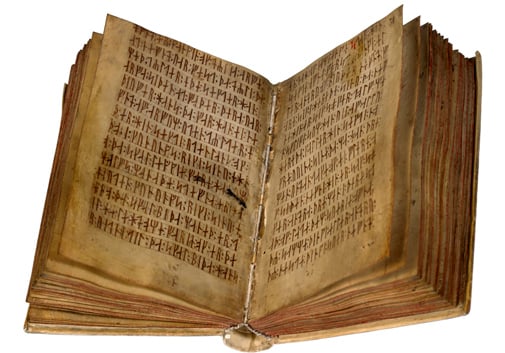
The Runic alphabets had disappeared from Scandinavia almost completely by the 1500s, but the Swedish regions of Dalarna and Gotland people kept the runic alphabets alive, in Dalarna specifically all the way into the early 1900s.
Here’s how the Early Dalecarlian Runes looked like:

Here’s how the late Dalecarlian Runes looked like:
Real Viking Age Symbols: Separating Fact From Fiction
The Old Norse culture was rich in symbolism, and there were many inscriptions, ornaments, pendants, pins, and other accessories left behind for us to get an insight into the popular symbols of the Viking Age.
But there are also a lot of misconceptions floating around on the interwebs regarding viking symbolism, so I’d like to try to separate fact from fiction by grouping the real Viking symbols we for sure know are from the Viking Age, apart from mostly modern symbols we have not been able to link to Viking Age Scandinavia.
The Norse people of Scandinavia loved to carve pictures of Norse gods and other mythological creatures, along with tales of their own deeds onto runestones, jewelry, weapons, shields, helmets, and all kinds of other objects.
Luckily, we have been able to find many such examples that are still intact, giving us a pretty good idea of the types of symbols and ornaments the Vikings used and valued.
Here are some of the more famous symbols that have actually been found on objects dating back to the Viking Age in or around Scandinavia (meaning they are as authentic as can be):
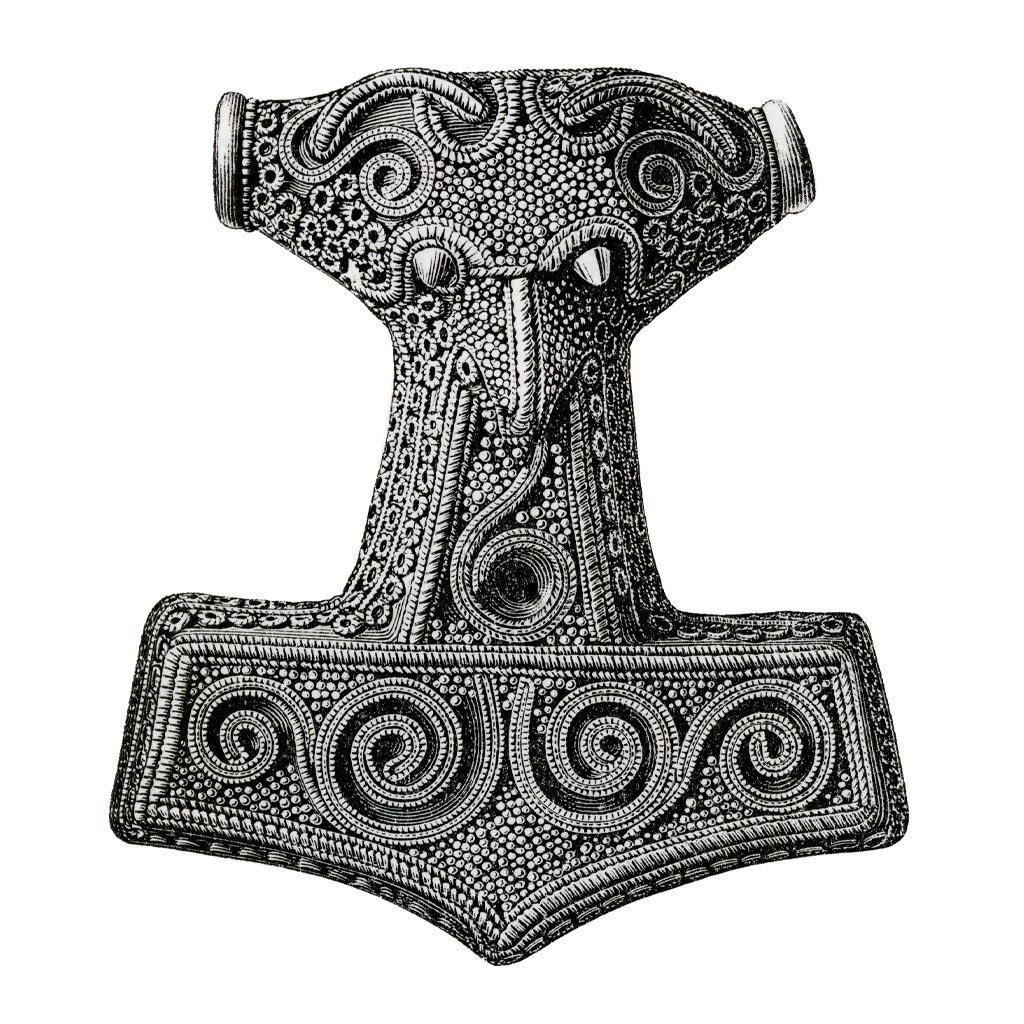
Hrafnsmerki
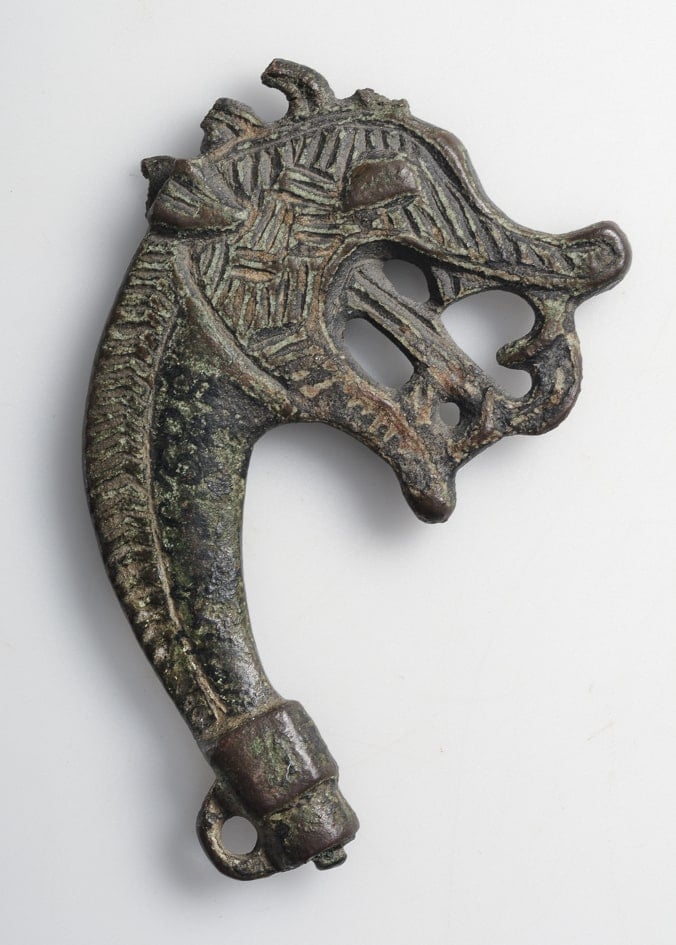
Dragon’s head
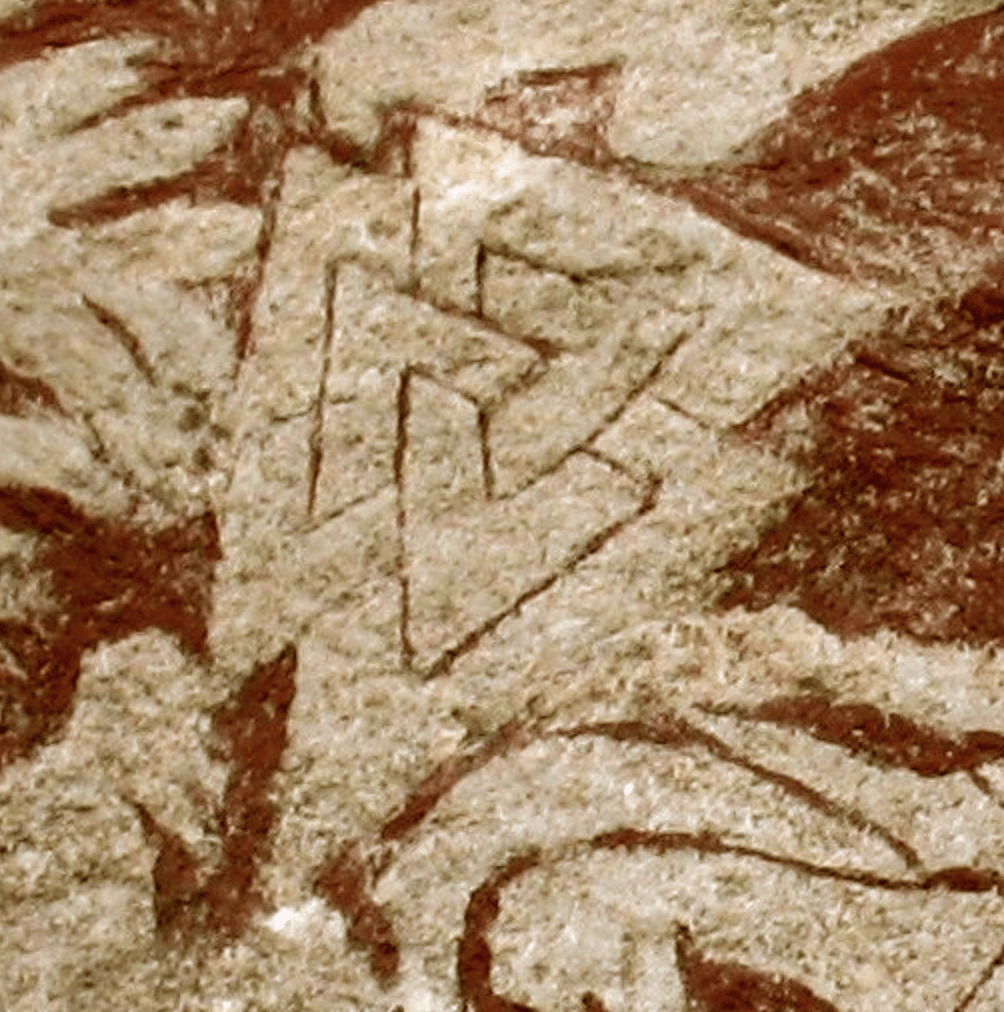
The Longship
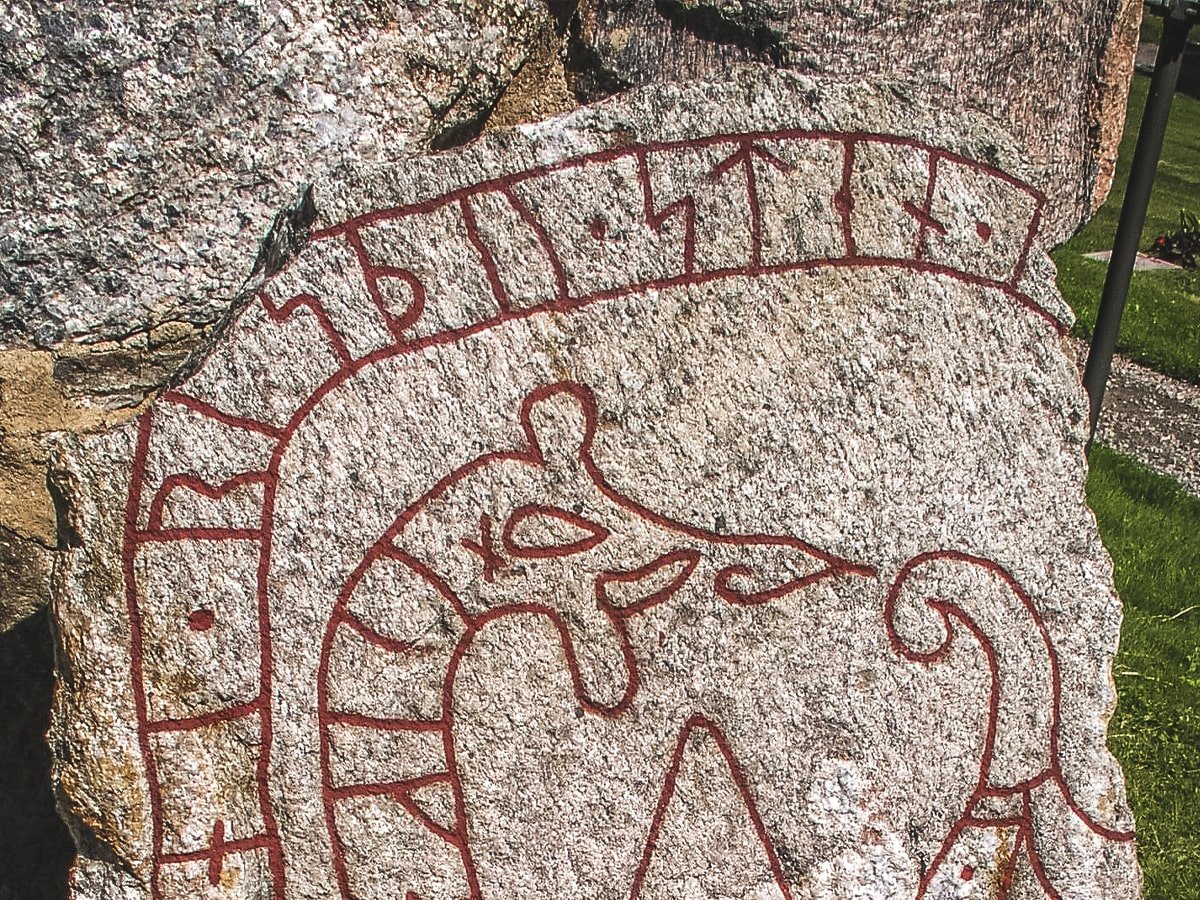
Jörmungandr
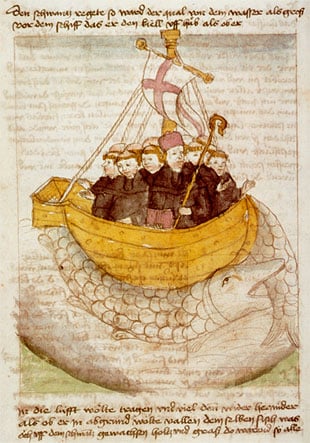
Kraken / Hafgufa
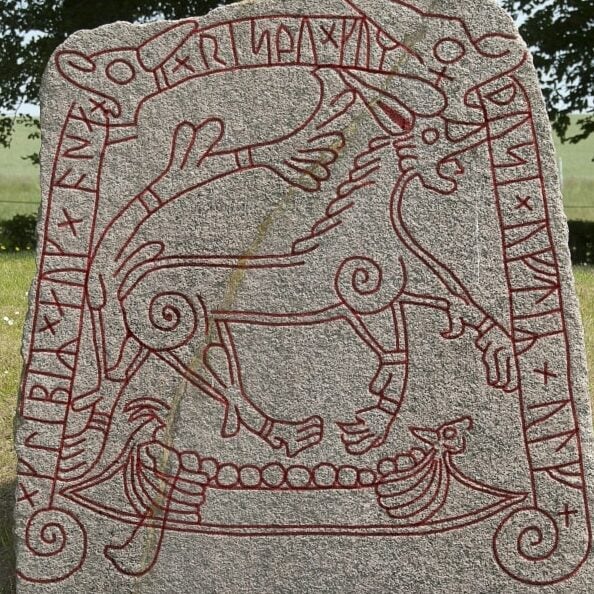
Odin’s head
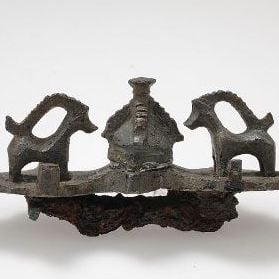
Tanngrisnir and Tanngnjóstr
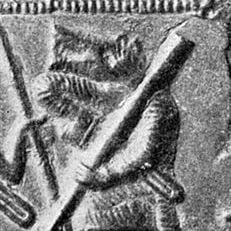
Bear’s Head
Those are a few of the most famous Viking Age symbols we’ve found so far, but there are of course countless more depicted on all the runestones, jewelry, weapons, armor, and other objects from the Viking Age.
If all you’re interested in are historically accurate Norse symbols and runes, this is a good place to conclude your reading.
For those who are interested in finding out more about symbols that are not actually linked to Vikings and the Norse culture, but are commonly referred to as such anyway, let’s keep going to the murkier waters of Norse symbolism: the ahistorical symbols .
There are a whole bunch of symbols in use today that are assumed to be linked to the Vikings, but in reality have not been seen on any item found from the Viking age.
In some cases they’re mentioned in the sagas but never pictured anywhere, and in some cases they have just been popularized by pop culture or celebrities for no good reason.
They may be designed in a style befitting of the era, and they sure look cool — but you should know that there is very little that points to the symbols below actually being used by the Norse people who came from Scandinavia during the Viking age.
Nonetheless, here are some of the more popular symbols, or Icelandic staves as they technically are:
Herðslustafir
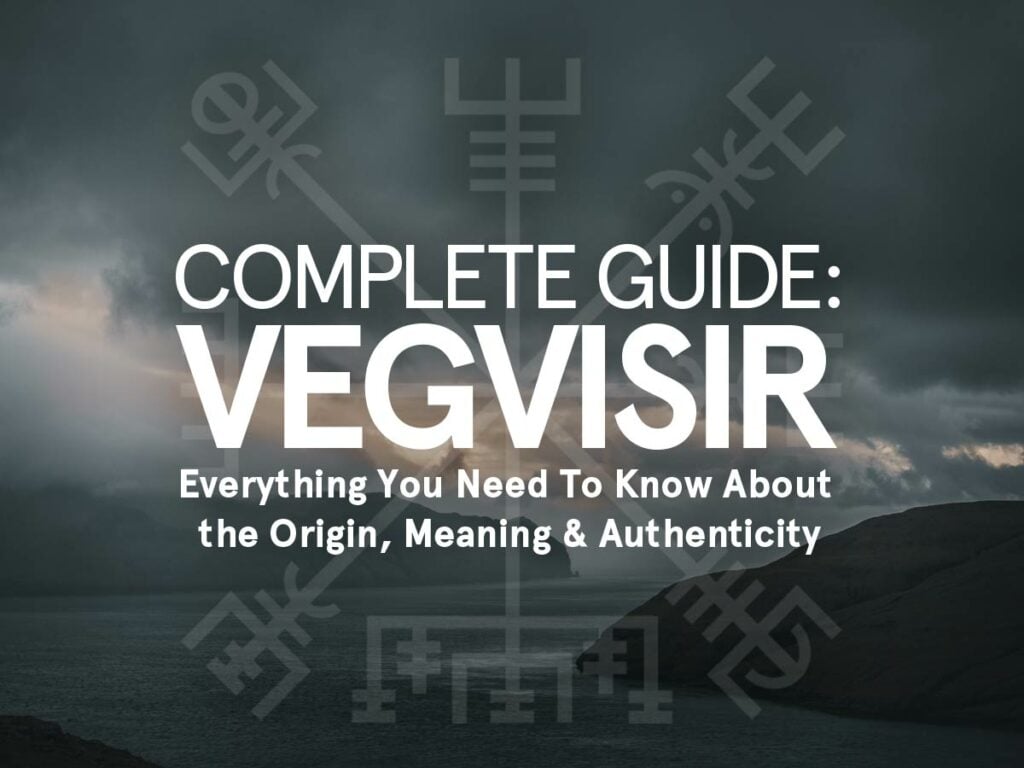
Vegvisir: A Complete Guide (Origins, Meaning & Accuracy)
Few symbols produce as much controversy within the Old Norse community as the one we call Vegvisir (“Wayfinder”). Historians hate it, and tattoo artists love it. Why? Well mostly because we can’t really connect it with the Vikings that so many people want to connect it to, and probably because it looks and sounds really intriguing. Read Article Now
If you want to learn more about why these symbols may not date back to or be linked to the Viking Age, here’s Jackson Crawford’s (Old Norse specialist with a Ph.D. in Scandinavian Studies) very informative takes on the Ægishjalmur and Vegvísir respectively:
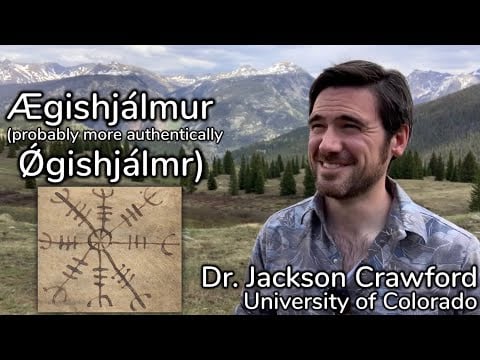
Dr. Crawford taught courses in Norse language, myth, and sagas at UCLA, UC Berkeley, and University of Colorado over the years 2011-2020, and is currently on a mission to teach full-time through YouTube & Patreon.
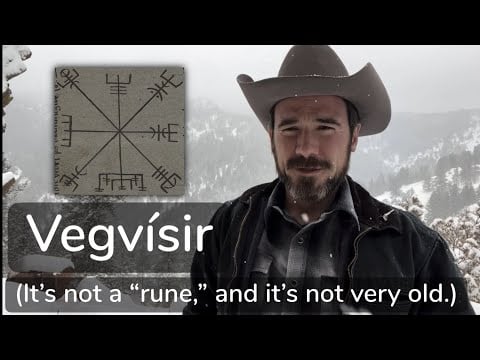
His videos are always informative, based on actual evidence, very thorough, and well worth a watch if you’re interested in the Old Norse world.
More Ahistorical Symbols: Rudolphs Koch’s Symbols in The Book of Signs
German typographer Rudolph Koch published a book in 1930 with 493 classified and documented illustrations – collected, drawn, and explained by himself.
Koch doesn’t really provide any sources for these symbols, but he does include most of the Younger Futhark runes, and somehow attributes the symbols below to either Nordic, Pagan, or Germanic origins:
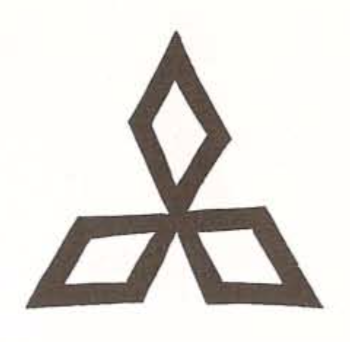
Sunwheel / The Cross of Wotan
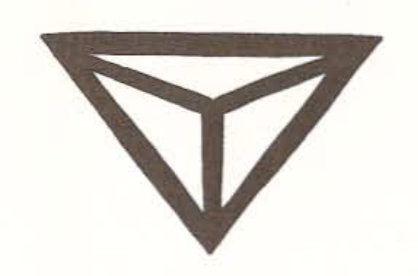
The Dragon’s Eye
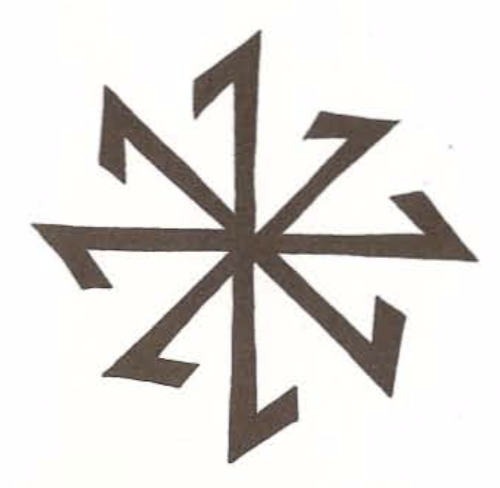
Eight-angled figure
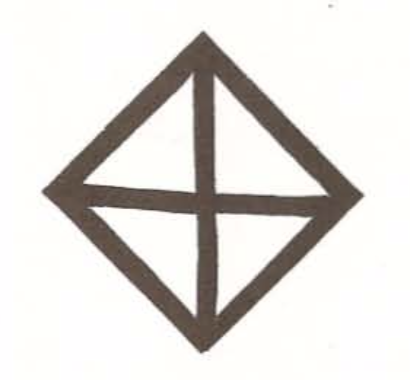
The Eye of Fire
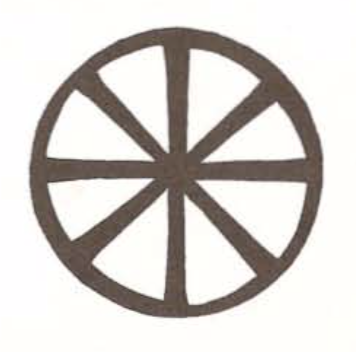
The Eight-spoked Wheel
None of these symbols have been found to have any type of connection to the Norse people of Scandinavia, nor even the Germanic people of Iron Age Europe, and to illustrate this we can look at how vaguely Koch describes his sources:
On many of the signs illustrated in this book the Nordic influence can be clearly traced, but the basic forms, with their wealth of significance and symbolism, undoubtedly take us back to the dim, remote and unfathomed ages of Mankind in the far Eastern countries of this World. Rudolph Koch, The Book of Signs p. 104
In other words, take these meanings with a grain of salt (to say the least)!
By the way, if you're looking for some historically accurate viking apparel and wall art, I've designed a large collection of Norse wall art and apparel based on and inspired by actual archeological finds from Viking Age Scandinavia.
Shop Authentic Norse + Nordic Decor & Apparel
Premium museum-quality prints, metal wall art, t-shirts, sweatshirts, mugs and more — sent right to your doorstep with free shipping worldwide.

https://www.raa.se/kulturarv/runor-och-runstenar/att-lasa-runor-och-runinskrifter/
https://books.google.com/books/about/Runes_and_Roman_Letters_in_Anglo_Saxon_M.html?id=KQ5EDQAAQBAJ
http://www.e-codices.unifr.ch/en/csg/0878/1
https://www.vikingeskibsmuseet.dk/en/professions/education/viking-age-people/runes
https://www.raa.se/kulturarv/runor-och-runstenar/digitala-sveriges-runinskrifter/
https://litteraturbanken.se/presentationer/specialomraden/RunornasLitteratur.html
https://manuscript.ku.dk/manuscript_types/law_manuscripts/
https://books.google.com/books/about/The_Book_of_Signs.html?id=dsuuKUag8EkC&redir_esc=y
https://jacksonwcrawford.com/list-of-videos/

Want to stay in touch with the Nordics?
Subscribe to our newsletter to get the latest Nordic resources, insights, tips, hidden gems, and much more.
By Karl Andersson
As a native Swede with a Finnish mother, Karl identifies as both Nordic and Scandinavian. He left Sweden at 19 to explore the world, and stayed abroad for almost 8 years—during which he backpacked, worked every job there was, earned a degree from UC Berkeley, and met the future mother of his children. He ultimately returned to his native Malmö with his love, where they now have 3 Swedish-American boys eager to explore the world.
15 comments
Hi Karl, I am curious about the following symbol: it looks like an arrow pointing upward, with a leaflike body drawn over the arrow and a bird head on the top where the arrow head would be. It comes up if you google norse friendship symbol. Do you have any ideas around this one? Cheers, Christina
Hi Christina!
I haven’t seen that symbol but it looks really cool. I believe it’s a combination of 4 different symbols illustrated by an Estonian clothing/accessory brand:
https://www.instagram.com/p/B2Z8YJvHolc/ https://valhyr.com/pages/about-us
I really like the look of their symbols, but they aren’t necessarily all based on historical symbols (though certainly inspired by Norse rune art, and really nice too!).
Hi Karl, I’ve seen images of the “protects against poison” apparently a Norse symbol flying around the internet but can’t find any history behind it, wondering if you have any info on the symbol? It’s a long jagged X. Best Johan
Thanks for all this information. It will take me a while to digest it. I heard about runes as a divination tool a couple of decades ago, but it never occurred to me they were alphabets. My mom’s side of the family is from Finland and came to the Michigan and Wisconsin area of the US in the late 1800’s. I don’t know if there is a family connection with countries near Finland. I never learned how to “divine” with runes but I like the feel of them in my hands for some reason. Your information on the history of runes makes me wonder.
Thanks for reading Liz!
Finland certainly has a connection to the Norse runes, as Norsemen and their ancestors have settled on the coast of Finland since the Bronze Age. Whole runestones have been found off the coast of Finland as well, and it’s clear that there was a steady flow of Vikings heading east to Gardarike via Finland.
You can read more here about Finnish roots here: https://nordicperspective.com/facts/finnish-heritage-origin-of-finns
Just one question, how is the correct way for the runes to interact with, i mean, is there a way to elaborate a word or a bigger symbol including some of them? Are there some rules about it?
The only rules regarding rune usage would likely be to either:
A) Use them as sounds (such as our modern-day letters in the alphabet)
B) Use them to represent their meaning (such as ᚦ, “Thurs”, being connected to the Jötunns, Frost Giants, and the Æsir Thor, who you might be familiar with)
Ultimately we don’t know exactly how the Old Norse people used the runes other than the aforementioned uses, so it’s possible that they used them in other ways too, especially as they considered them to hold magical powers in some cases (a specific magic they called “Seidr”).
If you have any more specific questions just let me know!
It’s so odd how Rudolph Kuch basically wrote a bunch of Norse/viking fanfiction and tried to pass it off as fact. He should have written fiction instead!
He did have a very active imagination, that’s for sure!
In general, it’s pretty common that people take liberties in interpreting old symbols and especially their meanings. Just google “Viking symbols” and one of the most commonly seen ones is the Vegvísir, which is not a symbols used by the Vikings as far as we know and wasn’t even documented or inscribed anywhere until 800 years after the Viking Age ended.
So yeah… people in general tend to have active imaginations. 🙂
Curious I have seen some runes over layer into others is that something that was historically used and if so how would that be done?
- Pingback: Order = Love = K'OS - Morph & Windy
Karl I’m looking for a symbol I can use for Christmas. I’m creating a logo for a fan of the Celts and Vikings and wondering where I can find such and element for usage. Thank you in advance.
Dear Karl, I’m looking for possible connections between scythian and celtic/germanic art. I’m sure, you came upon the beautifully designed golden items of the scythian culture. The way, creatural figures merge into tribals. So, since European people seem to be derived from pontic steppe people genetically, do you think, that also European ancient art could be connected to it?
Very interesting theory! It seems likely that at least parts of human culture would travel with the migrating humans as they made their way north, but I haven’t really looked into Scythian art at all so not sure how feasible it would be in the end. Let me know if you find anything of interest in your studies!
Superb posts! Have a look at my page Webemail24 where I also put in extra effort to create quality information about Cleaning Services.
Leave a comment Cancel reply
Your email address will not be published. Required fields are marked *
Save my name, email, and website in this browser for the next time I comment.

Norse Rune Protection Guide: Meanings and Uses
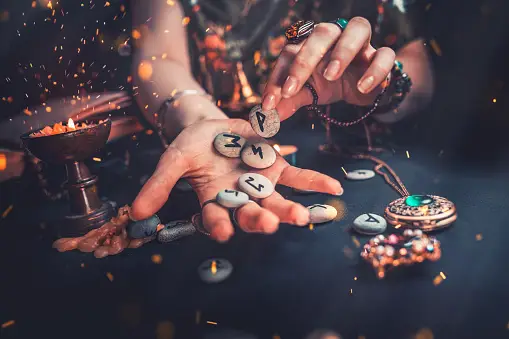
In the modern age, as our fascination with cutting-edge technology grows, there remains an unbeatable charm to the wisdom of ancient times. In history, Norse runes emerge as a gem, offering not just linguistic symbols but also protective energies. This comprehensive guide takes you on an amazing journey into the captivating teald of Norse Rune Protection.
By delving deep into the meanings, significance, and practical applications of these mystical symbols, you’ll discover the key to shielding yourself from negativity while inviting the embrace of positive energies. So, join us as we delve into the age-old secrets of safeguarding and empowerment.
Understanding the Power of Norse Runes
Before we jump into the protective powers held by specific runes, it’s essential to unwrap the essence of these symbols. Picture runes as a timeless, eloquent language that predates the modern concept of emojis and scripts. However, they are more than mere representations of letters; each symbol conveys profound meanings, each resonating with different aspects of life, nature, and human experiences.
Beyond mere scribbles, runes are powerful tools that Vikings used not only for communication but also to cast spells and, crucially, to shield themselves. This primer is your guide through the mystery of runes, providing you with an understanding of their significance and the incredible power they bear.
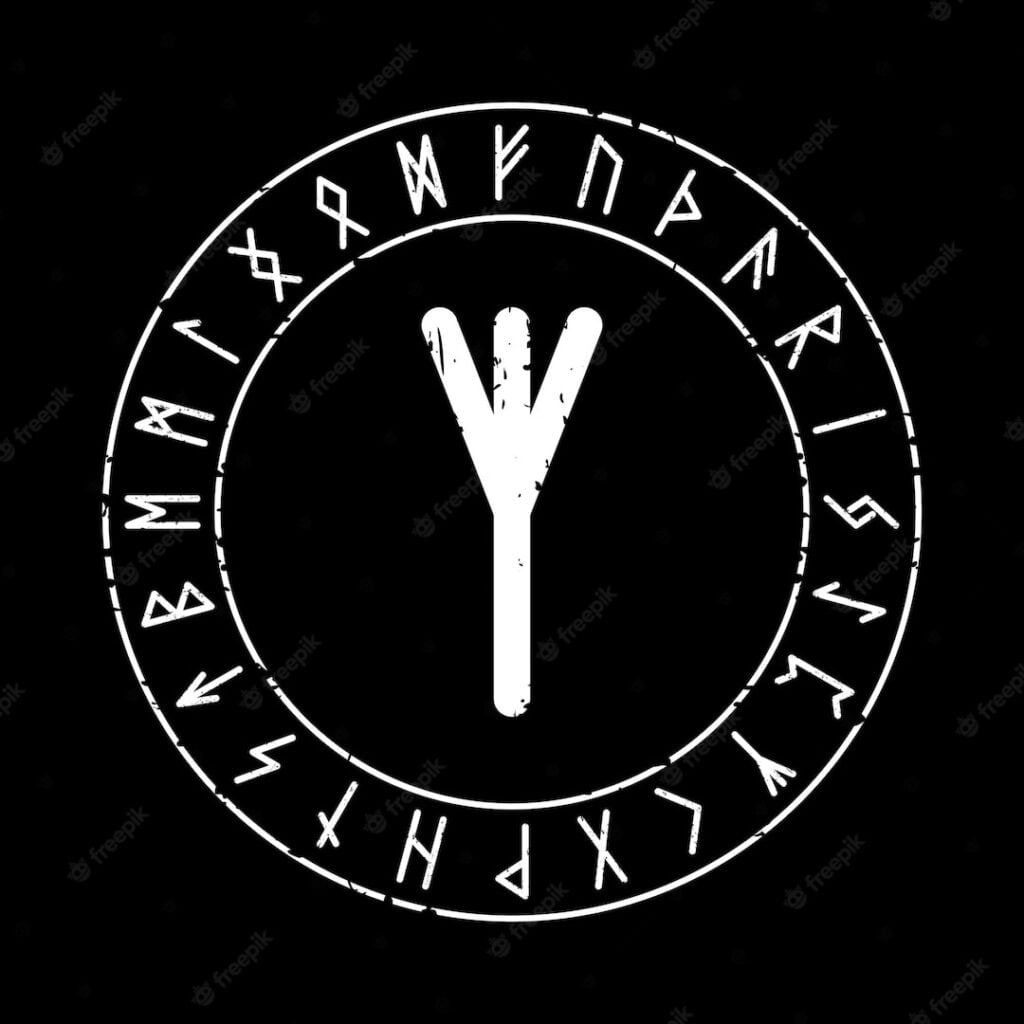
The Runic Guardian
At the core of the world of rune protection lies Algiz, a symbol reminiscent of the majestic antlers of an elk. This emblem embodies not just strength but also protection, similar to the resolute stag guarding its herd from potential threats. Algiz serves as a spiritual armor, shielding you from the assault of negativity and empowering you to stand tall, unwavering and resilient.
Using Algiz for Protection
But how does one harness the power of Algiz for protection? Envision a magical shield of Algiz taking form around you, glistening with radiant light. As you draw upon its energy, let affirmations such as “I am safe,” “I am shielded,” and “I am strong” resonate within you, harmonizing with the intrinsic magic of Algiz. This rune can be symbolized in physical form, drawn on paper, or brought to life through visualization during meditation. In whichever form you choose, Algiz becomes your stalwart protector.
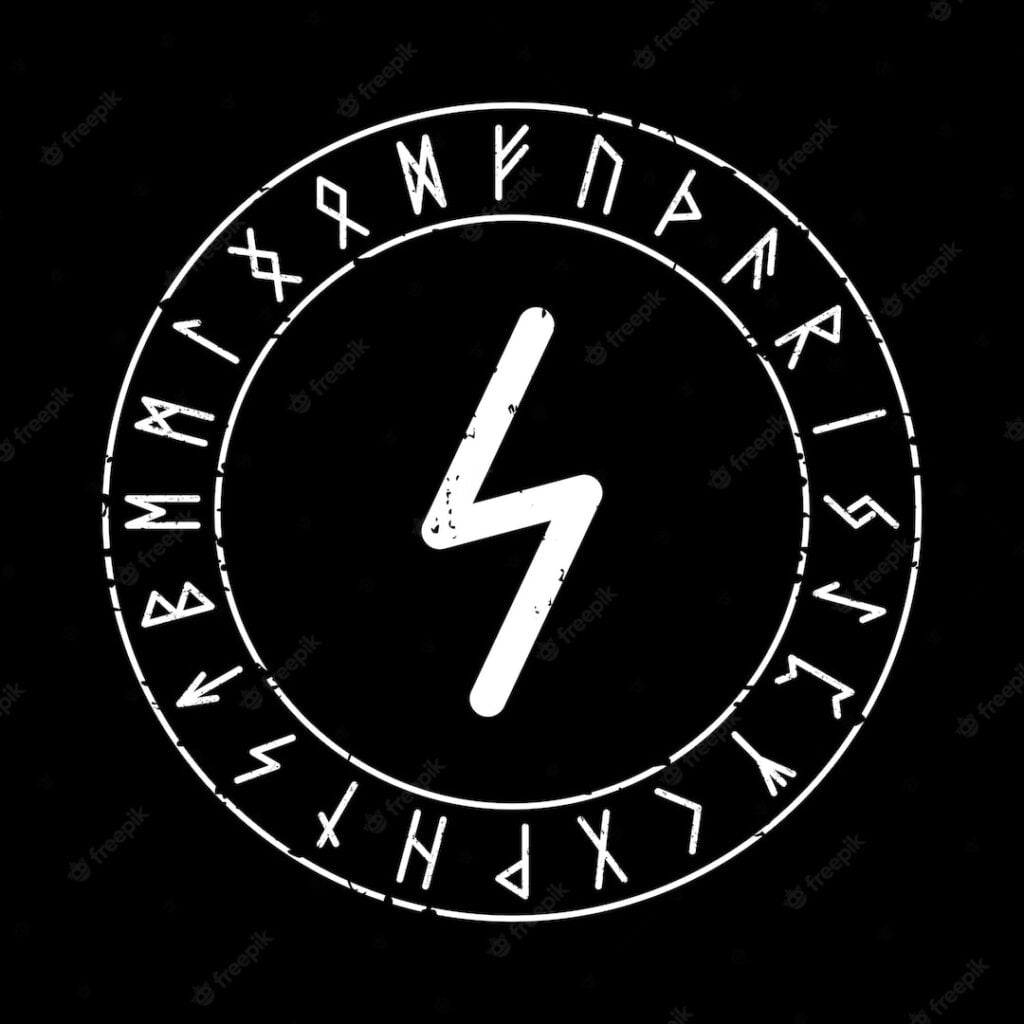
Illuminating the Path to Safety
Sowilo, the sun rune that serves as your unwavering beacon of safety. Similar to the sun’s brilliance dispelling darkness, Sowilo has the power to fend off negativity while guiding you along the path of positivity. This rune is infused with the quintessence of success, healing, and the gentle assurance that carries you through life’s trials.
Using Sowilo for Protection
Grasping the essence of Sowilo is as natural as basking in the warming rays of the sun. Picture its radiant energy enveloping you, forming a powerful shield against the forces of negativity. As you immerse yourself in the glow of Sowilo, visualize the challenges that once loomed large dissipating into the ether, leaving behind only the brilliance of positivity. As Sowilo’s warmth infuses your very being, you’ll find your confidence and assurance heightened, gently guiding you through the chaotic sea of life.
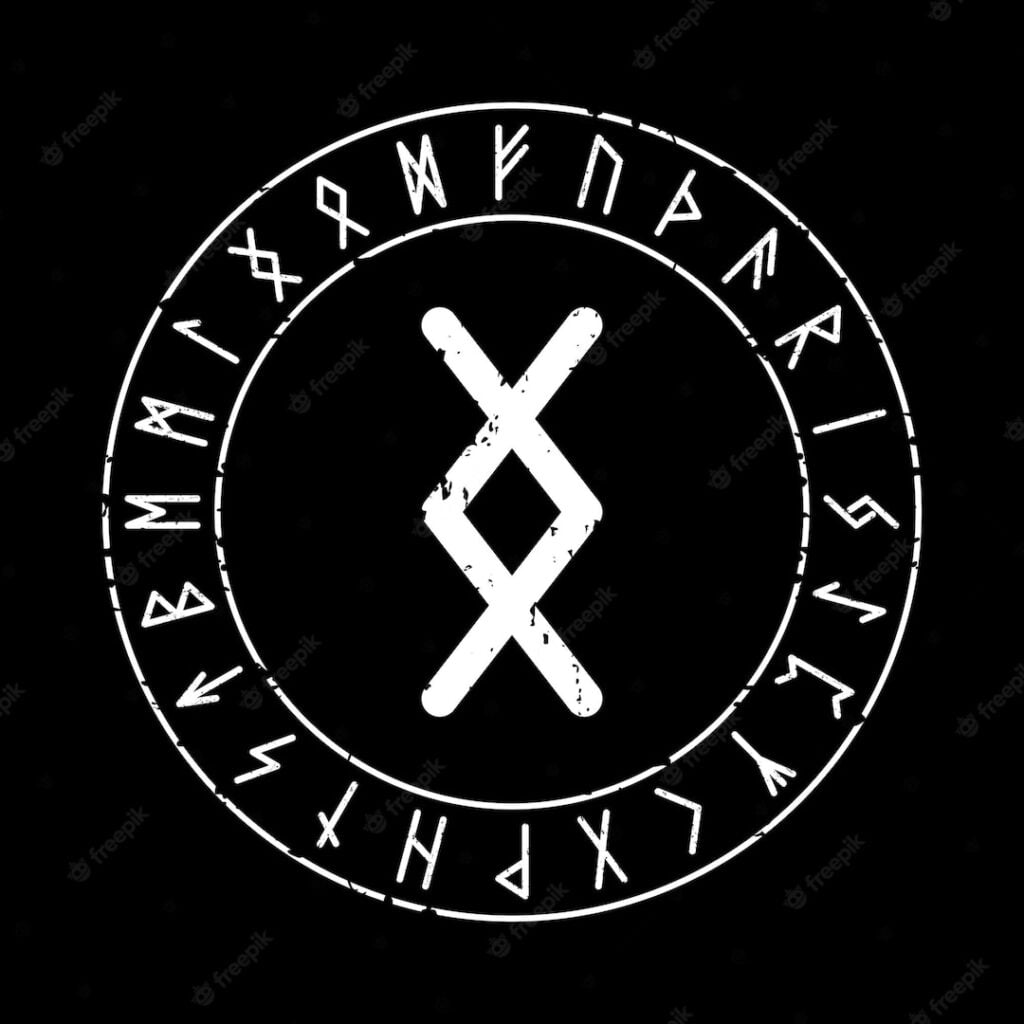
Clearing the Path for Positivity
In the same way that spring breathes new life into the world, Inguz clears away the cobwebs of negativity, leaving fertile ground for the blossoming of positivity. Just as the arrival of spring messengers renewal, Inguz is symbolic of fresh beginnings, similar to a gentle breeze that clears away stagnant energies and ushers in a sense of renewal.
Using Inguz for Your Safety
Imagine Inguz as an energetic broom, sweeping away the clutter of negativity and creating a fresh trail of light in its wake. As you consciously work with this rune, set intentions like “I release what no longer serves me” or “I invite positive energy” to guide its transformative energies. By doing so, you not only carve out space for your safety but also pave the way for a thriving environment where positivity is not just welcomed but nurtured.

Strengthening Your Boundaries
Introducing Thurisaz, the thorn rune, as your heroic guardian against unwelcome intrusions. Just as the thorns protect the delicate beauty of a rose, Thurisaz empowers you to erect and uphold personal boundaries and protect the sanctity of your personal space.
Empowering Boundaries with Thurisaz
Visualize Thurisaz weaving an invisible yet unbreakable shield around you, effectively resisting negativity and safeguarding your precious energy. When faced with situations that threaten to drain your vitality, draw upon the energy of Thurisaz to strengthen your courage and assert your right to an environment that nurtures your well-being. With Thurisaz as your ally, you can confidently declare “no” when required and safeguard your personal sanctuary with unwavering determination.
Crafting Your Rune Protection Talisman
As you journey into the realm of runic protection, crafting a personalized rune talisman serves as a tangible embodiment of your commitment to safety. The process can be both therapeutic and empowering, allowing you to infuse your focus into a physical object.

Materials Needed:
– A smooth piece of wood
– Drawn or printed Algiz, Sowilo, Inguz, and Thurisaz symbols
– Acrylic paints and brushes
– Clear sealer
Creating Your Talisman:
1. Begin by painting the piece of wood in soothing colors that resonate with your protective journey. The choice of colors is essential, as they will set the tone for your talisman’s energy.
2. Paint each rune symbol onto the wood, all the while infusing them with your protective intent. Let your intentions flow through the brush strokes, infusing each symbol with the energy you seek to manifest.
3. Allow the paint to dry thoroughly, ensuring that every stroke protects its objective and energy.
4. Seal the talisman with a clear sealer, effectively locking in the energies and intentions you’ve embedded within it.
5. Your talisman is now a powerful representation of your protective journey. You can choose to keep it in a secure and visible place or carry it with you as a constant reminder of your commitment to personal protection.
Adding Runes into Everyday Life for Lasting Protection
The integration of runes into your daily routine can exponentially enhance your connection with their protective energies, nurturing a sense of safety and empowerment.
Morning Rune Ritual
Start your day with intention by selecting a rune that resonates with your protection needs. Close your eyes, and as you visualize this rune surrounding you, affirm your unwavering commitment to remain shielded and resilient throughout the day. With each action you undertake in the morning, from brushing your teeth to preparing your morning coffee, allow this rune’s energy to set the tone for the day ahead.
Runic Decor for Spaces
Expand the protective power of runes to your living and workspaces. Place runic symbols strategically near entrances, windows, or even your workspace, creating a continuous and ever-present shield of protection. As your eyes land on these symbols, let them serve as a constant reminder that you are enveloped by the safeguarding energies of the runes.

Combining Rune Magic with Mindfulness for Ultimate Guarding
The fusion of rune magic with mindfulness practices serves as a dynamic conduit for high protection and personal growth. Consider integrating mindfulness practices such as deep breathing exercises, meditation, or yoga into your daily routine. As you engage in these practices, envision the runes intertwining with your being, their energies enhancing your well-being and aiding in the release of negativity. By synergizing mindfulness with runic magic, you create a potent combination that not only fortifies your protection but also promotes holistic growth.
Rune Meditation for Amplified Protection
Amid the hustle and bustle of life, finding a quiet space for rune meditation offers a great opportunity to connect with these ancient symbols on a deeper level. Here’s a simple technique to improve your protection and mindfulness practices:
1. Find a peaceful spot where you won’t be disturbed. Set the tone by dimming the lights and creating an environment conducive to meditation.
2. Close your eyes, take a few deep breaths, and let your body settle into a state of relaxation.
3. Choose a rune that resonates with your current protection needs. It could be Algiz, Sowilo, Inguz, or Thurisaz – the choice is yours.
4. Visualize this rune in your mind’s eye. See its lines and contours with crystal clarity. As you breathe in, envision yourself drawing in the protective energy of the rune, allowing it to penetrate every fiber of your being.
5. As you exhale, release any negativity, stress, or anxiety you may be carrying. Imagine these energies dissolving into the universe, leaving you feeling lighter and freer.
6. Continue this rhythmic breathing, allowing the energy of the rune to merge seamlessly with your own energy. Feel its protective embrace and the calmness it instills within you.
7. As your meditation comes to a close, take a few final deep breaths, gradually bringing yourself back to the present moment. Open your eyes and bask in the serenity that surrounds you.
Surround Yourself With Runes: Your Path to Personal Protection
In life, you, dear seeker of runes, have begun an extraordinary voyage into the mystical world of Norse Rune Protection. As you stand on the threshold of discovery, Algiz, Sowilo, Inguz, and Thurisaz beckon as your trusted allies, ready to empower you with their potent energies. Whether you embark on the creative journey of crafting a talisman, weave runic symbols into your living spaces, or immerse yourself in the deep practice of runic meditation, remember that you use the key to your own protection.
As you tread the complicated path of life, grasp the magic of runes firmly in your hands, and let these ancient symbols stand as your unwavering guardians, guiding you through the journey of protection and positivity. With each step, may your path be illuminated by these powerful symbols of safeguarding and empowerment.
Evon is a dedicated spiritual author, guiding seekers on a profound journey of self-discovery and enlightenment. With a passion for exploring the depths of spirituality, Evon delves into mystical insights, dreams, and the hidden meanings behind them. Through their soulful writings, they inspire readers to embrace spiritual growth, inner wisdom, and a deeper connection to the universe.
Similar Posts
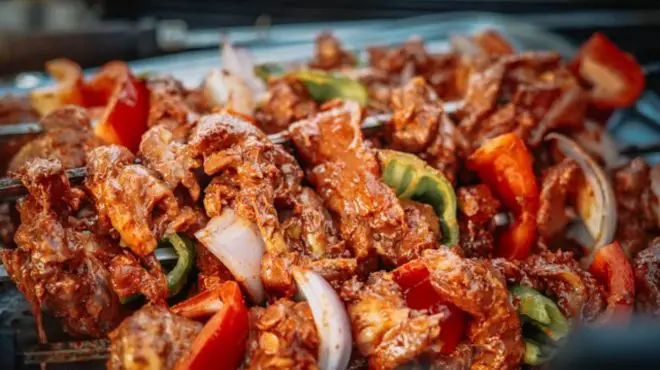
Spiritual Meaning of Craving Spicy Food
Craving spicy food signifies a spiritual journey, symbolizing passion, purification, heightened awareness, and transformative change within oneself.
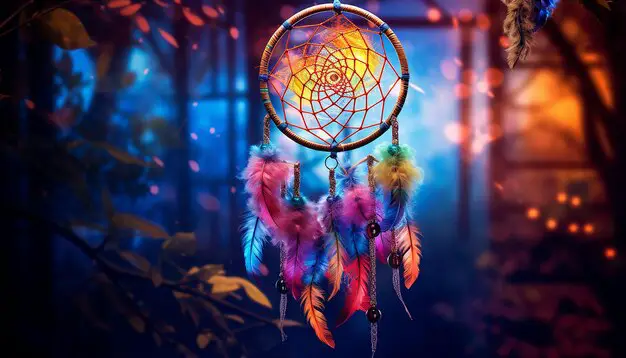
Dream Catcher Color Meanings
Dream catchers are more than just beautiful pieces of art; they carry deep cultural and spiritual significance. One of the key elements that contribute to the symbolism of a dream catcher is its colors. Each hue woven into the intricate design holds a unique message and purpose. In this article, we will uncover the mysteries…
What does having eye problems mean spiritually? Explained Guide!
The spiritual meaning of eye problems encompasses lack of vision, spiritual blindness, third eye activation, and divine messages guiding spiritual growth.

Spiritual Meaning of Yellow Bee Queen
The Yellow Bee Queen symbolizes spiritual leadership, fertility, community, diligence, and divine guidance in nature’s interconnected web.

My Cat Won’t Leave Me Alone: Spiritual Meaning
Uncover the spiritual meaning of clingy cats: Discover how they serve as protectors, energy healers, and spiritual guides in this intriguing exploration.

Spiritual Significance of Seahorses in Love
The spiritual meaning of seahorse symbolism in love encompasses patience, devotion, and deep soul connections.
FREE UK DELIVERIES FOR ALL ORDERS OVER £100! WORLWIDE EXPRESS SHIPPING AVAILABLE
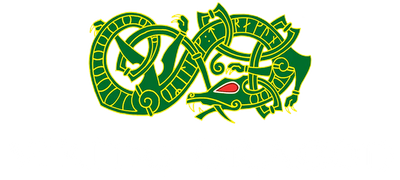
- All Products
- Men's Clothing
- Hats & Hoods
- Cloaks & Pins
- Women's Clothing
- Tortoise Brooches
- Body Armour
- Battle Tools
- Drinking Horns
- Blowing Horns
- Coins & Pouches
- Water Bottles
- Fire Strikers
- Musical Instruments
- Thor's Hammers
- Other Jewelry
- Accessories
- Norse Myths
- Rock Crystal
- Kai Pendants
- Thor's Hammer
- - Extra Heavy
- Braided Leather
- Penannular / Cloak Pins
- Beard Rings
- Clasps & Fittings
- Silver Chains
- Leather Thongs
- Leather Necklaces
- Fire Steels / Tinder Kits
- Wax Writing Tablets
- Scissors, Snips, Shears
- Viking Scales
- Camp Cooking Equipment
- Horn Beer Mugs
- Beer & Mead Glasses
- Horn Mead Cups
- Bowls & Plates
- Spoons & Cutlery
- Candles & Lanterns
- Hides & Skins
- Cutting Tools
- Hnefatafl Games
- Runes & Pouches
- Norse God Statues
- Runic Jewelry
- Norse God Pendants
- Jelling Cups
- Leather Work
- Belt Fittings
- Nalbinding / Needle Binding
- Tablet Weaving
- Drinking Horns & Fittings
- Viking Shields & Bosses
- Pouch Fittings
- Costume Making Books
- Design & Tattoo Books
- Viking Weddings
- Top Christmas Gifts
- Viking Games
- Viking T-Shirts
- Viking Cooking Books
- Norse Mythology
- Viking Runes
- Viking Costume Making
- Viking Design & Tattoo
- Rob Wildwood Books
- Beard Rings / Beard Beads
- Other Viking Music
- New Offers!
- Viking Festivals
- Viking Dragon Blog
- Dragon Points
- Viking Costume Guide
- Customer Gallery
- Magical Britain
Cookie policy
I agree to the processing of my data in accordance with the conditions set out in the policy of Privacy.
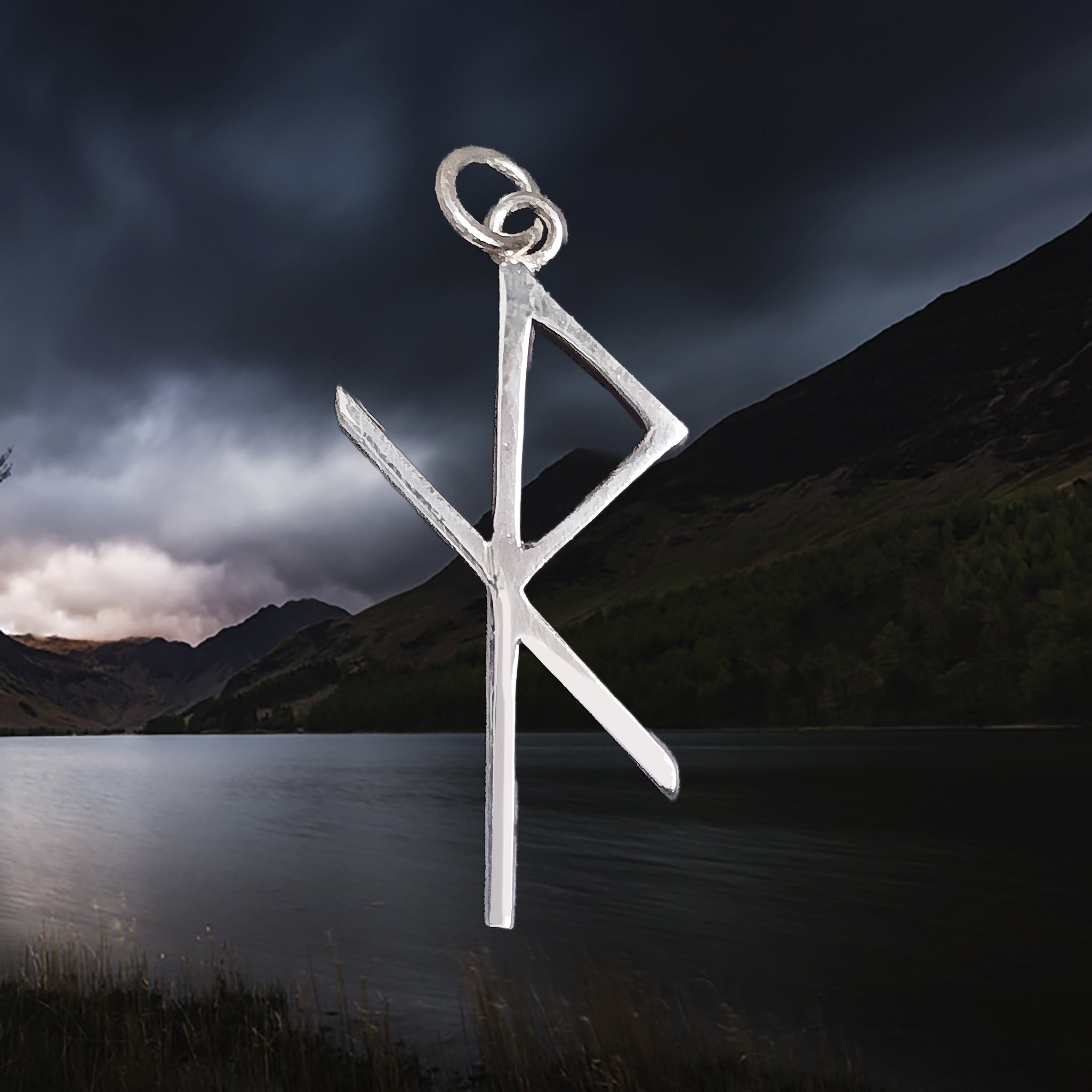
Silver Safe Travel Bind Rune Viking Pendant
Tower House
Tower House Business Centre, Fishergate Jelling Dragon Ltd York YO10 4UA United Kingdom
Choose options
Safe Travel Rune Viking Pendant in 925 Sterling Silver.
The safe travel rune – The talisman for travellers is Raidho which is ascribed to the god Thor. When combined with Algiz, for protection, the result is a powerful bind rune for safe travel.
The use of runes is ancient, probably arising almost simultaneously with the use of runes as an alphabet. Essentially, a bind rune is a symbol composed of two or more runes overlaid, one on top of another, to form a single character.
- Width: 16mm (0.6 inch). - Height: 29mm (1.1 inch). - Thickness: 2mm. - Weight: 2g (0.07oz). - Comes ready to wear with a length of leather thong.
Includes loop ring at the top to thread through your necklace / leather thong.
NOW IN 925 STERLING SILVER!
Shipping Costs & Shipping Times from The Viking Dragon.
Shipping costs.
All of our shipping costs are based on the weight and the size of your package and are calculated on the final checkout page.
All UK packages are now sent via 1st Class Royal Mail - Signed For / EVRI as standard, or Royal Mail 'Special Delivery' if you have specified this on the checkout page.
Any items going overseas are sent via 'International Tracked', or you can upgrade to 'Express Courier'.
Postage costs start at 2.95 GBP for UK small tracked packages, or FREE if your order is over £100!
How long do we take to deliver?
If you order before 1pm (GMT) then your package will usually be sent out the same day via Royal Mail, unless it is a large package, which will sent via courier that pick up from us the next working day.
Average delivery times:
- UK - 1-3 working days (1-2 working days via Special Delivery). - Europe (EU) - 5-15 working days. - Europe (Non EU) - 5-15 working days. - USA & Canada - 5-10 working days (sometimes longer if you have a rural location). - Australia & New Zealand - 5-10 working days (sometimes longer if you have a rural location). - Rest of the World - 5-35 working days. - EXPRESS COURIER ORDERS CAN BE DELIVERED ANYWHERE IN THE WORLD BETWEEN 2-5 DAYS, SO IF YOU UPGRADE YOUR SERVICE YOU WILL GET YOUR ITEMS QUICKER.
All EU deliveries will be subject to your local tax laws on imports, so please be aware that you will need to pay import taxes to receive your product.
Please note we are closed during UK public holidays and no mail will be sent.
Uk public holidays 2024:.
The following dates there will be no postal services from us and our office will be closed:
- Friday 29th March - Good Friday - Monday 1st April - Easter Monday - Monday 6th May - Early May bank holiday - Monday 27th May - Spring bank holiday - Monday 26th August - Summer bank holiday - Wednesday 25th December - Christmas Day - Thursday 26th December - Boxing Day

Authentic Viking Products
We've been selling hand-crafted, high quality Viking products made in Scandinavia and Northern Europe since 1997 to 1000's of loyal customers. We aim to offer the best Viking equipment and supplies on the market and still stand out with some of our custom-made items and attentive customer service.

Norse runes: History, Meaning and Alphabet
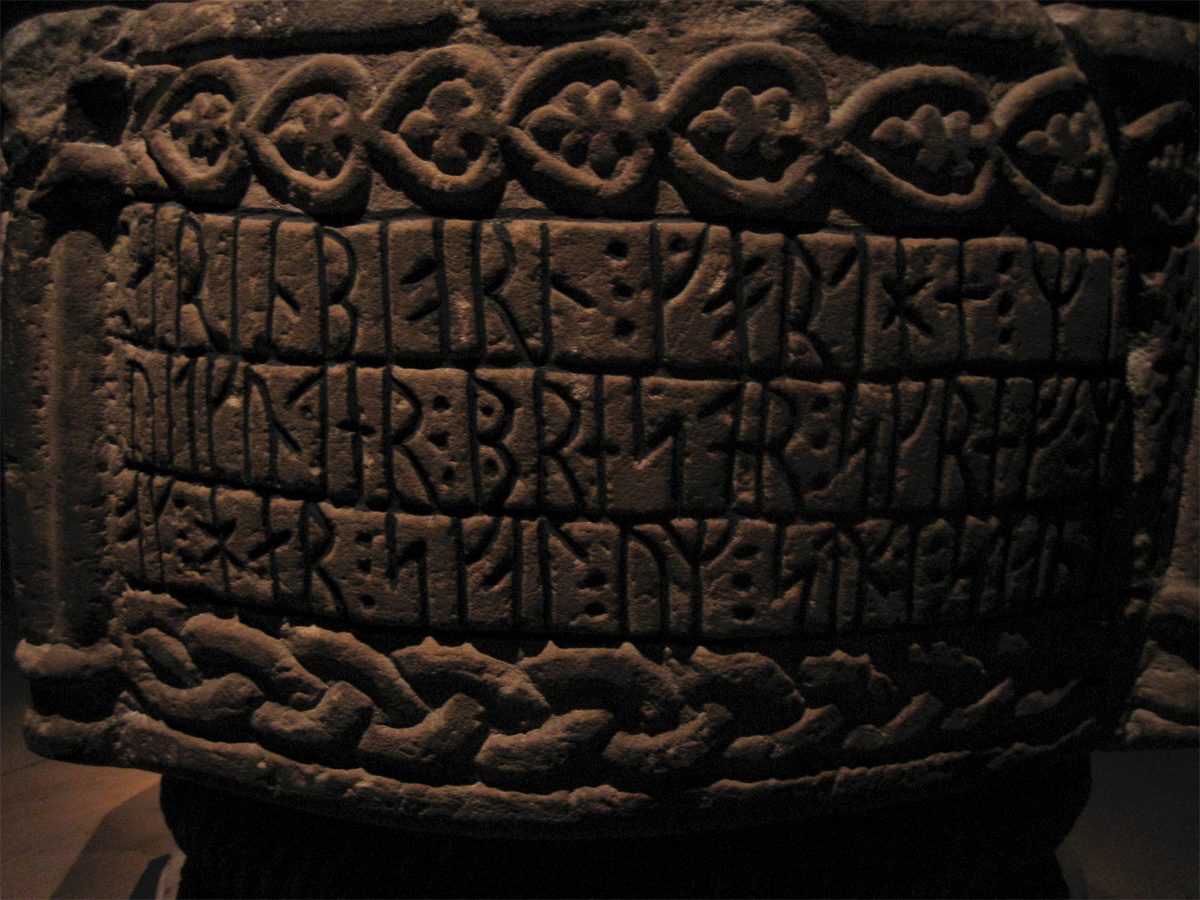
Norse runes are an important part of Norse mythology. These magic symbols appeared from the depths of the Well of Urd, also known as the Well of Fate.
The Norns carried the runic symbols up the World Tree Yggdrasil , which held the nine worlds of Old Norse mythology.
Table of Contents
What are Norse runes?
The writing system known as runes is an early writing system created by Germanic tribes around 50 AD. These symbols were first carved into wood, then stones. These stones are called runestones.
There are over 6,000 documented runestones in Scandinavia. Despite the attempts of conquerors to spread Christianity throughout Scandinavia, the use of runes continued for centuries.
Today, runes are still used for pagan rituals , and scholars continue to study this writing system said to be given to man by the god Odin.

What culture are runes from?
The Germanic tribes in northern Germany and the Danish area developed the runic writing system in the 1st century AD. These were found on the Kylver runestone in Sweden.
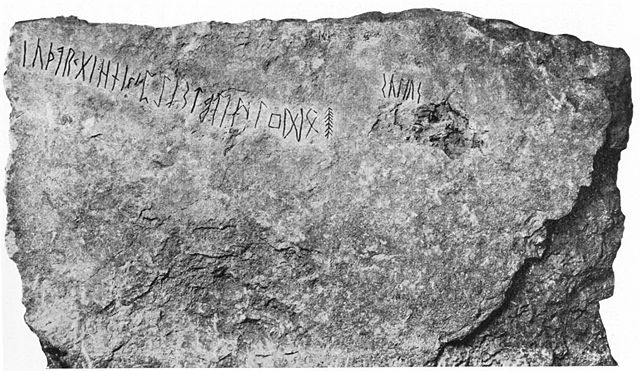
Runes are the earliest known writing system of the Germanic people’s language. As the use of the runic alphabet spread, their written form was adapted.
In Denmark, runic symbols were written with longer lines, known as long-branch form. Sweden and Norway tended to stick with shorter lines, called short-twig form.
The writing medium also influenced which style was used. On stone, long-branch was often preferred, while short-twig was best for wood carvings.
What language are Viking runes (Old Norse runes) written in?
Old Norse runes were written in the Proto-Norse language.
While the runic alphabet remained pretty similar for centuries, each Germanic tribe that used the runes did so in their native language. Since the runic symbols represented things such as a horse, water, or a Norse god, their meaning was universal in Scandinavia.
Like hieroglyphics, pictographs, and even the Native American petroglyphs, the runic alphabet represented specific elements, animals, or gods.
Outside of the literal translation, the meaning could be intuited by a rune-master based on the context and placement of the rune.
For example, Fehu (ᚠ) means “cattle.” This symbol could also be interpreted as wealth or abundance since having cattle was a sign of wealth during the Viking age.
How vital are runes in Norse Mythology?
In Old Norse Mythology, runes were so important that Odin hung himself from the world tree Yggdrasil for nine days and nights just to learn their secrets.
Runes held magical powers, including making Odin’s spear Gungnir hit its mark every time, no matter who threw it.
In the Viking age, warriors would carve runes into their weapons in hopes of making them more powerful and accurate.
Even the world tree Yggdrasil had runes engraved in its trunk. Their meaning remained a mystery in Norse mythology until Odin’s ritual sacrifice of his own life revealed their meaning to him. It is believed that Odin revealed runes to the first human rune-master.
What are Elder Futhark Runes?
Elder Futhark runes are the first known rune-writing system.
The Elder Futhark runic alphabet has 24 symbols, each with its own meaning. The 24 runes are divided into 3 groups of 8 known as aetts .
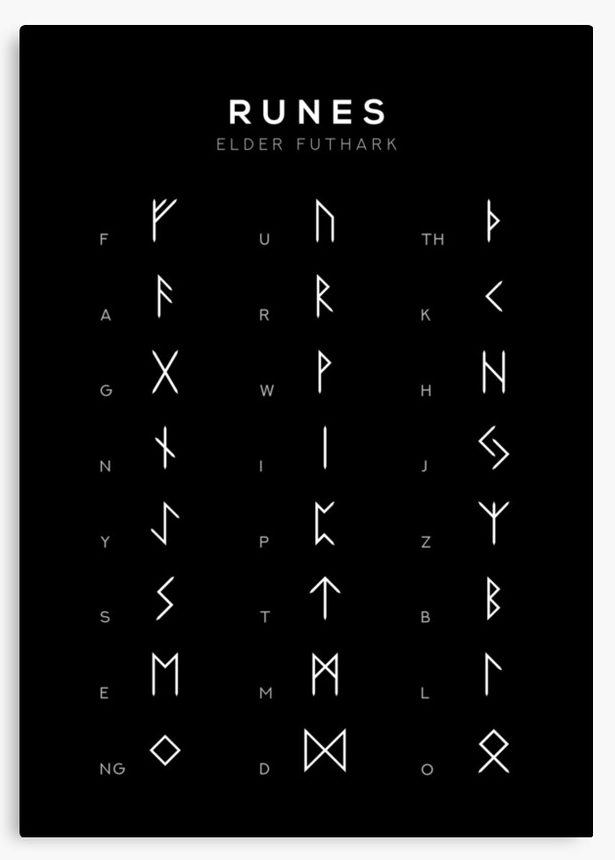
Aett is Old Norse for “family.” Each family of runes is attributed to gods. The first aett is ruled by twins Freyr and Freya. The 2nd aett is ruled by Mordgud and Hagalaz (Heimdall). The 3rd aett is ruled by Tyr and Ziza.
Elder Futhark runes were used until about 800 AD. Next came the Younger Futhark runes, which lasted from 800-1100 AD. As these two writing systems evolved, Anglo-Saxon Futhorc runes emerged among the Germanic tribes that had migrated toward what is now modern-day England. A nglo-Saxon Futhorc runes were used from 6400-1100 AD.
Like many Old Norse traditions, the names of the runes were immortalized via poetry. The Old English Rune Poem preserved the names of the 24 runes. 5 runes from the Anglo-Saxon Futhorc are also included in the Rune Poem.
The Runic alphabet and meaning behind each symbol
Freyr’s aett, hagalaz’s aett, tyr and ziza’s aett.
Make sure to check my articles on:
- Norse runes for love
- Norse runes for protection
Are runes read left to right?
Norse runes are read left to right and right to left. The system is called boustrophedon. This means the direction changes with each line. If line one is left to right, then line two is right to left, and so on.
Because runes also have mystical meanings, they can also be read depending on their position. Three rune layouts represent the past, present, and future.
This means the rune on the left represents the past, the middle represents the present, and the right represents the future. Their position can change the meaning of the rune when read in this fashion.
Are Celtic and Nordic runes the same?
Celtic and Nordic runes have some similarities, but they are not the same writing system.
Both runic alphabets were considered sacred. Additionally, runic inscriptions in Celtic and Nordic cultures were carved into wood and thought to hold magical powers.
Celtic runes are called Oghams. Like Nordic runes, Oghams came from a god (Ogma).

While the two writing systems have similar divine origins and were developed around the same time, Celtic and Nordic runes have no direct connection to each other.
When did the Scandinavian people stop using runes?
The use of runes by the Scandinavian people decreased starting in the 12th century. By the 15th century, most Swedish, Norwegian, and Danish people had ceased using runes entirely.
The tradition of using runes lasted until the 17th century in Iceland and Gotland, Sweden. The isolated people of Alvdalen, Sweden, continued using runes until the 20th century!
As Christianity spread through Scandinavia in the 12th and 13th centuries, runes were gradually replaced by the Latin alphabet. Like many of their traditions, the Scandinavians held onto the runic alphabet tradition long after Christianity was introduced.
Despite the differences between the Germanic tribes of Scandinavia, the Runic alphabet remained largely unchanged. Even as the writing system evolved at the beginning of the Viking age from Elder Futhark to Younger Futhark runes, the runic symbols maintained their importance and power.
The Scandinavian people fought hard to preserve their traditions, even as Christianity extinguished their pagan religions and rituals.
Vianna Arenas is an enthusiastic seeker of knowledge and history buff. When she's not writing about ancient religions and magic systems, you can find her camping and hiking with her family.
Recent Posts
+150 Popular Norse and Viking Names (Female & Male)
Looking for the perfect name? There are hundreds of unique names of the Norse gods, Viking warriors, elves, gnomes, and dwarfs in the books of Norse mythology. Gods like Thor, Loki, Odin, and Frida...
Jarnsaxa: The Giantess And Norse Goddess of the Sea
In Old Norse texts, such as Snorri Sturluson's Prose Edda, Jarnsaxa is described as a goddess of the sea, Thor's lover, and the mother of Magni and Modi. She is also listed as one of the nine mothers...
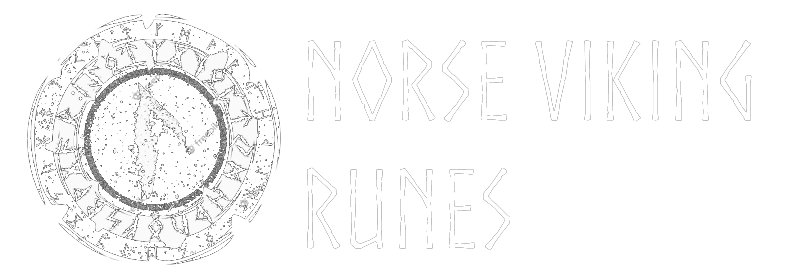
Summon your inner viking with the Norse Viking Runes
Subscribe to our newsletter, join the list of subscribers, proudly featured on:.

A Comprehensive Guide to Viking Runes: Meanings, Origins, and More
The earliest forms of the Germanic language were written using Viking Runes (Norse Runes) during the Roman era. They were eventually used by the Germans, Anglo-Saxons, and the Norse. For more than a thousand years, the runes changed into writing styles that suited the needs of modern Germanic culture.
The symbol, meaning, and pronunciation of each Rune are described in this guide. The runic language is also described, along with how to read it.
Runes have long captured the imagination of people around the world. These ancient symbols, used by the Vikings and their predecessors, are more than just an alphabet; they have deep cultural, spiritual, and magical significance. This comprehensive guide will take you on a journey through the fascinating history and meanings of Viking runes, as well as their modern applications and influence on popular culture.
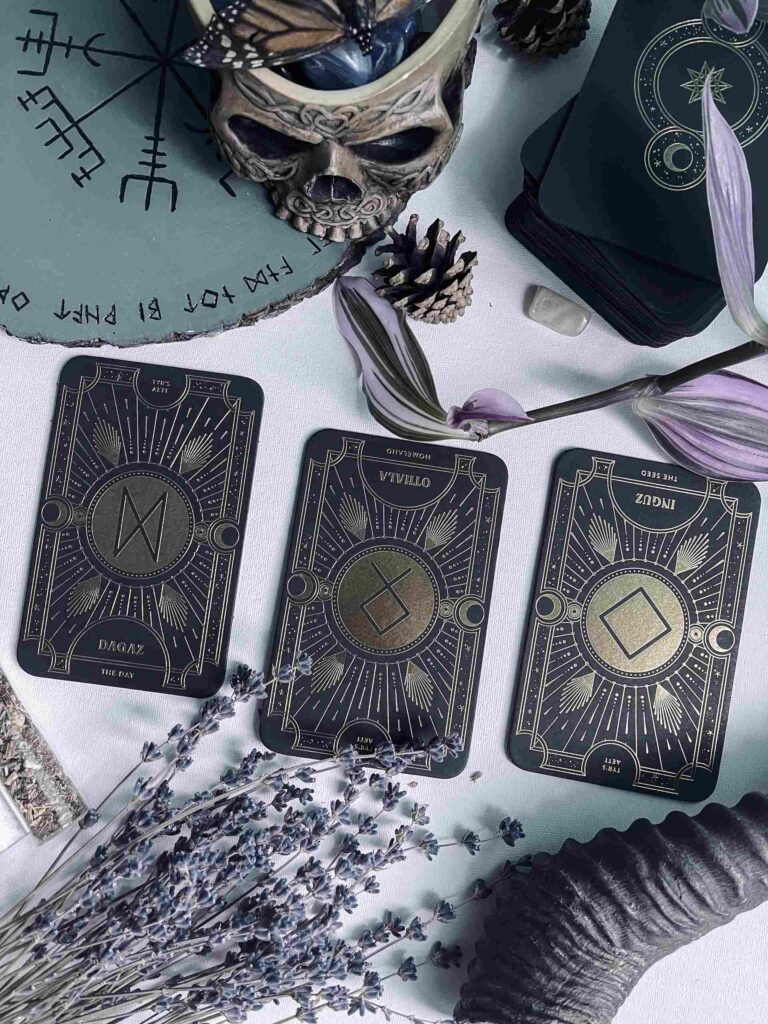
Origins and History Of The Norse Viking Runes
The word “rune” comes from the Old Norse word “rún,” which means “mystery” or “secret.” Runes have been used as a written language, magical symbols, and tools of divination since around the 2nd century AD. Although runes are most commonly associated with the Vikings, they were used by various Germanic and Scandinavian tribes, as well as the Celts and other ancient European cultures.
Two distinct runic alphabets emerged throughout history: the Elder Futhark and the Younger Futhark. The Elder Futhark is the oldest and most well-known, while the Younger Futhark evolved from the Elder Futhark and was used by the Vikings during their period of expansion and exploration.
Elder Futhark: The Oldest Runic Alphabet
The Elder Futhark consists of 24 runes and dates back to the 2nd to 8th centuries. It was used by various Germanic tribes and is named after the first six runes in the alphabet (Fehu, Uruz, Thurisaz, Ansuz, Raidho, and Kenaz), which spell “Futhark.” Each rune has a phonetic value, a symbolic meaning, and a connection to a particular god, element, or natural force. These meanings and associations made the runes more than just a written language; they were also used for magical and divinatory purposes.
Younger Futhark: The Simplified Runic Alphabet
As the Viking Age began around the 8th century, the Elder Futhark was simplified into the Younger Futhark, which consisted of only 16 runes. This new alphabet was better suited to the Old Norse language spoken by the Vikings, and it continued to be used until the Middle Ages, when the Latin alphabet gradually replaced it.
Elder Futhark Rune Meanings
Fehu: cattle, wealth, prosperity.
As a magical symbol, Fehu can be used to attract wealth and success. It also reminds us of the importance of generosity and sharing our good fortune with others, as hoarding wealth can lead to stagnation and loss.
Uruz: Strength, vitality, courage
Uruz embodies the raw power and strength of the wild ox. This rune represents physical strength, vitality, and the determination to overcome obstacles. Uruz also symbolizes the transformative power of nature and the need for personal growth and development.
When used in magic or divination, Uruz can signify the need for courage and resilience in the face of challenges. It encourages us to tap into our inner strength and to take charge of our lives, seizing opportunities for growth and change.
Thurisaz: Thor, protection, conflict
Thurisaz is associated with Thor, the Norse god of thunder and protector of humanity. This rune embodies the destructive power of nature, as well as the protective forces that guard against chaos and harm. It is a rune of conflict and confrontation, but also of protection and defense.
In magic and divination, Thurisaz can represent the need to face difficult situations or confront personal issues head-on. It urges us to recognize the power within ourselves to overcome challenges and protect ourselves from harm. Thurisaz also serves as a reminder that sometimes, conflict is necessary for growth and progress.
Ansuz: Odin, communication, wisdom
Ansuz is connected to Odin, the chief Norse god known for his wisdom, knowledge, and communication skills. This rune represents the power of speech, language, and creative expression. It also symbolizes divine inspiration and the quest for truth and understanding.
When used in magic and divination, Ansuz encourages us to seek wisdom and knowledge, to communicate effectively, and to listen to our intuition. It can also represent a message from the divine or a higher power, urging us to pay attention to the guidance and wisdom being offered.
Raidho: Journey, progress, movement
Raidho symbolizes travel, movement, and progress. It represents both physical journeys and the metaphorical journey of personal growth and development. This rune is associated with the rhythms and cycles of life, as well as the interconnectedness of all things.
In magical and divinatory contexts, Raidho indicates a need for change, adaptation, and forward movement. It encourages us to embrace new experiences, to learn from our past, and to forge ahead on our individual paths.
Kenaz: Fire, creativity, knowledge
Kenaz represents the transformative power of fire, both in its ability to create and to destroy. This rune is associated with creativity, learning, and knowledge. It symbolizes the inner fire that drives us to explore, innovate, and grow.
When used in magic or divination, Kenaz encourages us to seek out new knowledge, to ignite our creative passions, and to embrace the transformative power of change. It can also represent a need to shed old beliefs or habits in order to make way for new growth and understanding.
Gebo: Gift, partnership, balance
Gebo symbolizes the concept of gift-giving, partnership, and the balance of energy between individuals. This rune represents the importance of reciprocity, generosity, and maintaining harmonious relationships. Gebo also signifies the spiritual connection between people, emphasizing the importance of trust and mutual respect.
In magical and divinatory practices, Gebo encourages us to cultivate strong relationships, to give and receive in equal measure, and to nurture a sense of balance and harmony in our lives. It serves as a reminder that our connections with others are vital to our growth and well-being.
Wunjo: Joy, harmony, success
Wunjo is the rune of joy, happiness, and success. It represents the satisfaction and contentment that come from achieving one’s goals and enjoying the fruits of one’s labor. Wunjo is a symbol of harmony, unity, and the positive energy that arises when people come together in love and friendship.
In magic and divination, Wunjo signifies the presence of joy and happiness in one’s life, as well as the potential for success in one’s endeavors. It encourages us to embrace positivity, to celebrate our achievements, and to foster a sense of unity and harmony with those around us.
Hagalaz: Hail, disruption, transformation
Hagalaz represents the destructive and transformative power of hail. This rune symbolizes sudden changes, disruption, and upheaval. However, it also embodies the potential for growth and transformation that can come from such experiences.
In magical and divinatory practices, Hagalaz indicates a period of challenge or turmoil that may lead to significant change and growth. It urges us to adapt to unexpected situations, to find the hidden opportunities within difficult circumstances, and to learn from the trials we face.
Nauthiz: Need, constraint, determination
Nauthiz represents need, necessity, and the constraints that we face in life. This rune signifies the challenges and limitations that arise as we pursue our goals, as well as the determination and resourcefulness required to overcome them.
In magic and divination, Nauthiz encourages us to recognize our needs and desires, to confront our limitations, and to persevere in the face of adversity. It serves as a reminder that through struggle and determination, we can transform our challenges into opportunities for growth and success.
Isa: Ice, stillness, stagnation
Isa embodies the stillness and stagnation of ice, symbolizing a period of inactivity or lack of progress. This rune reminds us of the importance of rest, reflection, and patience in our lives.
When used in magic or divination, Isa can signify a need for introspection and self-examination, as well as the necessity of taking a step back from the chaos of life to find clarity and perspective. It also warns of potential obstacles or delays that may hinder our progress.
Jera: Harvest, reward, cycles
Jera is the rune of harvest, representing the cycles of nature and the rewards that come from patience and hard work. This rune symbolizes the passage of time, the changing seasons, and the importance of balance and harmony in our lives.
In magical and divinatory contexts, Jera indicates a period of reaping the rewards of past efforts and the potential for positive change and growth. It encourages us to maintain a sense of balance and harmony, to recognize the natural cycles and rhythms of life, and to embrace the process of transformation.
Eihwaz: Yew tree, stability, protection
Eihwaz is associated with the yew tree, a symbol of stability, protection, and longevity. This rune represents the enduring strength and resilience that comes from a strong foundation and a clear sense of purpose.
When used in magic or divination, Eihwaz encourages us to cultivate inner strength and stability, to protect ourselves from external influences, and to focus on our long-term goals and aspirations. It also serves as a reminder that, like the yew tree, we have the power to withstand adversity and to grow stronger through our experiences.
Perthro: Mystery, chance, fate
Perthro is the rune of mystery, chance, and the unknown. It represents the unpredictable nature of life, the hidden forces that shape our destinies, and the role of fate and chance in our lives.
In magical and divinatory practices, Perthro encourages us to embrace the mysteries of life, to take risks and explore the unknown, and to recognize that there are forces at work beyond our understanding. It also serves as a reminder that we have the power to shape our own destinies, even in the face of uncertainty and change.
Algiz: Elk, protection, intuition
Algiz represents the protective power of the elk, symbolizing the need for defense and self-preservation. This rune encourages us to develop our intuition and to trust in our inner guidance when facing challenges or threats.
In magic and divination, Algiz signifies a need for protection and a heightened awareness of our surroundings. It urges us to trust our instincts and to cultivate a strong sense of self in order to navigate the challenges that life presents.
Sowilo: Sun, success, energy
Sowilo is the rune of the sun, representing success, vitality, and the life-giving energy that sustains us. This rune symbolizes the power of light to dispel darkness, the warmth and nourishment provided by the sun, and the positive energy that comes from living in harmony with nature.
In magical and divinatory practices, Sowilo indicates a period of success, achievement, and personal growth. It encourages us to harness the power of the sun and to embrace the positive energy that comes from pursuing our passions and living our lives with purpose.
Tiwaz: Tyr, justice, honor
Tiwaz is associated with Tyr, the Norse god of justice and law. This rune symbolizes the principles of honor, fairness, and the moral courage required to stand up for what is right. Tiwaz represents the importance of maintaining balance and order in our lives and in society as a whole.
In magic and divination, Tiwaz encourages us to uphold our principles, to act with integrity, and to seek justice in our dealings with others. It serves as a reminder that our actions have consequences, and that we must be willing to accept responsibility for the choices we make.
Berkano: Birch tree, growth, renewal
Berkano is linked to the birch tree, a symbol of growth, renewal, and new beginnings. This rune represents the potential for personal transformation, the cycles of life, and the need for constant growth and development.
In magical and divinatory contexts, Berkano signifies a period of rebirth or renewal, indicating that it may be time to let go of the old and embrace the new. It encourages us to nurture our personal growth and to recognize the opportunities for change and transformation that life presents.
Ehwaz: Horse, partnership, trust
Ehwaz symbolizes the horse, a powerful and loyal companion. This rune represents the importance of partnership, cooperation, and trust in our relationships with others. Ehwaz emphasizes the need for mutual support and understanding, as well as the value of working together towards common goals.
In magic and divination, Ehwaz encourages us to foster strong, supportive relationships and to trust in the power of partnership and collaboration. It also serves as a reminder that we are not alone in our journey, and that we can achieve more by working together than by struggling alone.
Mannaz: Humanity, cooperation, intelligence
Mannaz represents humanity and the collective consciousness. This rune symbolizes the interconnectedness of all people, the importance of cooperation and collaboration, and the power of human intelligence and creativity.
In magical and divinatory practices, Mannaz encourages us to recognize our shared humanity, to cultivate empathy and understanding, and to work together to overcome challenges and build a better world. It serves as a reminder that our actions affect not only ourselves but also those around us, and that we have a responsibility to use our intelligence and creativity for the greater good.
Laguz: Water, emotions, intuition
Laguz is the rune of water, symbolizing the flow of emotions and the depths of our subconscious mind. This rune represents the importance of trusting our intuition, exploring our emotional landscape, and navigating the ever-changing currents of life.
In magic and divination, Laguz encourages us to connect with our emotions, to trust our instincts, and to be open to the ebb and flow of life’s experiences. It also serves as a reminder that, like water, we have the power to adapt and overcome obstacles in our path.
Ingwaz: Ing, fertility, potential
Ingwaz is associated with Ing, the Norse god of fertility and agriculture. This rune symbolizes the potential for growth, abundance, and prosperity. Ingwaz represents the nurturing energy required to cultivate our talents and bring our dreams to fruition.
In magical and divinatory contexts, Ingwaz signifies a period of growth, development, and the realization of potential.
Elder Futhark, Guide To The Runes
The Elder Futhark, also known as Elder Fu’ark (the ‘th’ sound in English ‘thin’), or elder Fu’ark/Futhark, is the earliest runic script that has been classified. It was in use until around the year c. In the Germanic world, 700 CE. It is named after the first six characters in the alphabet (f-u-t-h-a-r-k) and has a total of 24 characters. Each rune was named after something that begins (or in one case, ends) with that sound. The runes are arranged in three rows of eight, each group being referred to as an aett (plural: ttir). The names of the Younger Futhark and Anglo-Saxon runes have been preserved in manuscripts from the ninth and tenth centuries CE, but Elder Futhark does not enjoy the same luxury. The Elder Futhark rune-names have, however, been recreated to the best of our present-day abilities, relying primarily on the Younger Futhark names and augmented with Anglo-Saxon and even Gothic.
Elder Futhark was used to write Proto-Germanic, Proto-Norse, Proto-English, and Proto-High German, and it survives today in just under 400 inscriptions (found so far), the majority of which show significant wear and tear and are only partially readable. Elder Futhark was used to write these languages because they are geographically quite widely spread. This number almost certainly only represents a small portion of the total; the rest must have been lost in time and space. In the beginning, they were found in the form of names on metal and wood, both of which have a bad track record when it comes to withstanding the test of time. The typically Scandinavian runestones, some of which were in Elder Futhark as opposed to the much more commonly depicted later Younger Futhark, were also popular surfaces, as were military equipment, coins, and jewelry such as bracteates, brooches, or combs. Notwithstanding the fact that Scandinavia, northern Germany, and eastern Europe were the first places where such things were found, after c. Southern Germany, the Netherlands, and England joined the club in 400 CE. Runic writing is prevalent in societies up to c because it primarily emphasizes ownership and exhibits no discernible connection to society at any higher level. It is assumed that there was no central function in 700 CE.
It’s vital to remember that the rune row that is typically given for the Older Futhark today is merely a major line, despite the fact that the Elder Futhark was largely uniform. Here is the Elder Futhark rune row that is most frequently used, beginning with the rune itself, its transliteration, its inferred (Proto-Germanic) name, and its meaning:
ᚦ þ (‘th’) *þurisaz “giant” ᚨ a *ansuz “one of the Æsir (gods)” ᚱ r *raiðō “ride”/”journey” ᚲ k *kaunan “boil”/”blister” (or maybe “torch”) ᚷ g *gebō “gift” ᚹ w *wunjō “joy” ᚺ h *hagalaz “hail” (the precipitation) ᚾ n *nauðiz “need”/“emergency”/”desperation” ᛁ I *īsaz “ice” ᛃ j *jēra “year”, but typically “harvest”/”good harvest” ᛈ p *perðō? “pear tree”? (unclear) ᛇ ï/æ? *eihaz/ei(h)waz “yew tree” (but very confusing attestation) ᛉ z *algiz? “elk“ ᛊ s *sōwilō “sun” ᛏ t *tīwaz/*teiwaz “Týr” (the god) ᛒ b *berkanan “birch” ᛖ e *ehwaz “horse” ᛗ m *mannaz “man” ᛚ l *laguz “lake” (or maybe “leek”) ᛜ ŋ (‘ng’) *ingwaz “Ing” (/Yngvi, another name of the god Freyr) ᛞ d *dagaz “day” ᛟ o *ōþala/*ōþila “inherited property”/”possession”
Younger Futhark
YOUNGER FUTHARK HEADLINES IN THE GREAT BOOM IN RUNIC INSCRIPTIONS AFTER 700 CE DURING VIKING AGE SCANDINAVICA, WHERE IT IS FOUND ON RUNESTONES WHICH DO THROUGHOUT THE LANDSCAPE.
After c. Elder Futhark was modified into the Younger Futhark (or Younger Fu’ark) script in Scandinavia around the year 700 CE. This script was used for writing Old Norse, the language of the Viking Age. It was decided to eliminate eight of the initial twenty-four characters, as well as simplify or alter the appearance of several others, and there was an overall increase in the amount of variation present. It is crucial since it is the medium of our sole written source from the Scandinavian Viking Age. The runes that were scattered are ᚷ, ᚹ, ᛇ, ᛈ, ᛖ, ᛜ, ᛟ, and, which can be transliterated as ᛞ – transliterated as g, w, ï/æ, p, e, ŋ, and d . The ttir, or runic groups, that were familiar from Elder Futhark remained in place, although they were expanded to have six, six, and four members, respectively. The distinction between voiced and unvoiced consonants, such as k and g, which were both written with the rune, was no longer made explicit in writing in the Younger Futhark, when runes might have more than one conceivable sound associated to them. Even vowels were forced to adapt, as the meaning of each vowel had to be deduced from the context in which it was found. Because of this, reading this runic script can be rather challenging (for us, today, at least).
It appears that this new script was adopted in a lightning-fast manner, possibly as a result of a purposeful effort, but most likely at least influenced by changes in the language or in sounds. Michael Barnes explains how,
…by the beginning of the eighth century, all, or practically all, rune-carvers were using the same sixteen runes, which is a remarkable example of unity in spite of the fact that there did not appear to be a central authority to encourage it. Yet that was the extent of the unity. When it came to the realization of many of the sixteen runes, a far more open policy prevailed. This allowed for more people to participate in the process. Several characters were simplified as a result of some carvers’ experiments with runic form. Others either opposed or were oblivious to the development. Many traditions emerged. (63)
In Denmark, for example, a “long-branch” version of the runic script was preferred, whereas Norway and Sweden stuck to “short-twig,” and the Hälsingland area in Sweden even developed a set of runes – Hälsinge/staveless rune – missing the main staves (except in the i-rune) in a zealous simplification. The rune row for Younger Futhark below is a composite that shows the most prevalent forms across the board. The row begins with the rune, followed by its transliteration, its (Old Norse) name, and its meaning:
ᚠ f/v fé “wealth”/“cattle” ᚢ u/w, y, o, ø úr “slag from iron production”/”rain(storm)” ᚦ ᚦ, ð (‘th’) ᚦurs (‘thurs’) “giant” ᚬ o, æ áss/óss “Æsir”/”estuary” ᚱ r reið “ride”/(“vehicle”) ᚴ k, g kaun “ulcer”/”boil” ᚼ h hagall “hail” ᚾ n nauðr “need”/”threat”/”emergency” ᛁ I, e ísa/íss “ice” ᛅ a, æ ár “year”, typically “good year”/”good harvest” ᛋ s sól “sun” ᛏ t, d Týr “Týr” (the god), also used for any god ᛒ b, p björk/bjarkan/bjarken “birch” ᛘ m maðr “man”/”person” ᛚ l lǫgr (lögr) “lake” or a small body or water ᛦ r yr “yew”, yew tree, or maybe “elm”
The number of known runic inscriptions for Viking Period Scandinavia skyrockets about 700 CE, with runes found on frequently-decorated runestones of varying sizes that dot the landscape. In stark contrast to the meager sum of less than 400 Elder Futhark inscriptions, these stones contributed to an increase in the number of Scandinavian runic inscriptions during this period to approximately 3,000. When all mediums are considered, the script provides information on ownership or inheritance, politics (power struggles, raiding and conquests, or significant invasions), religion (including the growth of Christianity), travel (both domestically and internationally), and literature and myth.
Norse and Viking Runes: Where Did They Come From?
The earliest variants of the Germanic language were written using runes during the Roman era. They were subsequently adopted as a written language by the Germans, Anglo-Saxons, and Norse. During the course of more than a thousand years, the runes developed into several writing styles that were suitable for the requirements of modern Germanic civilization.
It was believed that the deeper mysteries of reading and writing could be found. Runes and magic were intimately related. The Norse and other Germanic people thought that the runes were tied to divine powers, whether they were utilized on charms or summoned by gods. In the present day, this connection has not been completely lost. Runes are being written anew in charms, rituals, and prayers after hundreds of years of practical use.
The History of Runes: A More In-Depth Exploration
There is significant agreement on the fundamental structure of runic writing, despite the fact that runologists disagree on many of the specifics about the history of runic writing. The runes are thought to have been derived from one of the numerous Old Italic alphabets that were in use among the Mediterranean peoples of the first century CE. These people lived to the south of the Germanic tribes. Earlier Germanic sacred symbols, such as those preserved in northern European rock carvings, were probably also influential in the development of the script.
The Meldorf brooch, which was made in the north of what is now Germany around the year 50 CE, has what is thought to be the first possible runic script inscription. This inscription was found on the brooch. The inscription, on the other hand, is not clear at all, and academics disagree on whether or not the letters are runic or Roman. The earliest unequivocal runic inscriptions can be found on the Vimose comb from Vimose, Denmark, and the vre Stabu spearhead from southern Norway, both of which date to about 160 CE. The Kylver stone from Gotland, Sweden, which dates to around 400 CE, is the first known carving of the full futhark (alphabet), in order.
Germanic warbands, the major northern European military institution of the period, would have been exposed to Italic writing firsthand during wars among their southern neighbors. This is how writing from southern Europe reached northern Europe. This hypothesis is supported by the association that runes have always had with the god Odin, who, during the Proto-Germanic period, was known by his original name, *Woanaz, and served as the divine model of the human warband leader as well as the unseen patron of the activities of the warband. Runes have always been associated with Odin. According to the Roman historian Tacitus, by the first century, Odin (“Mercury” in the interpretatio romana) had already established himself as the preeminent god in the pantheons of many of the Germanic tribes. For the purposes of what we are doing here, it makes little difference whether the runes and the religion of Odin emerged at the same time or whether the latter existed before the former. Georges Dumézil, a renowned Indo-European scholar, observes:
The runes, no matter how recent they may be, would have been under Odin’s control if he had been the first and always the highest magician. New and especially powerful tools for magic works would automatically and unquestionably fall under his purview. Before the term of that knowledge became the technical name of signals both phonetic and magic that came from the Alps or elsewhere, but did not lose its old, greater connotation, Odin may have been the patron, the possessor par excellence of this redoubtable power of secrecy and secret knowledge .
The runes, however, did not originate from a source as common as an Old Italic alphabet, according to the ancient Germanic peoples themselves. The runes were never “created,” but rather are timeless, pre-existing forces that Odin himself discovered after enduring a severe trial. This story is preserved for us in the Old Norse poem known as Hávamál, which translates to “The Sayings of the High One.”
I am aware that I hung myself. On the wind-blasted tree All nine nights, speared by me
And granted to Odin, I gave up for me. On that pole Nobody is aware of it.
Where its roots are located. I did not receive any assistance, Not even a drop from the horn. Looking down,
I began using the runes – I grabbed them while screaming – After that, I began to retreat.
Odin hangs himself from Yggdrasil, the world tree that sits in the center of the Germanic cosmos and whose branches and roots hold the Nine Worlds. The Well of Urd, a source of immense wisdom, is located directly beneath the world tree. The seas of this region appear to be the runes’ original home. This is also hinted to in another Old Norse poetry called the Voluspá, which translates to “Insight of the Seeress”:
Yggdrasil is a kind of oak. White hail fell on a powerful tree. The dews that settle in the lowlands originate there. Above Urd’s Well, it maintains its evergreen appearance.
Very intelligent maidens emerge from there. Three from the lake that is located beneath the pole. Urd and Verdandi are the names of two of them. Skuld the third; they carve into the tree. Children’s lives and fates.
The “three maidens” in question are the Norns, and the carvings on their bodies are almost certainly runes. The ability of the Norns to carve the fates of all beings is thus clearly linked to the Well of Urd, the runes, and magic.
Popular Rune Meanings And Application Guides
The 5 best runes for confidence, the 4 best runes for luck, the 4 best runes for wealth, the 4 best runes for manifestation, all viking rune meanings.
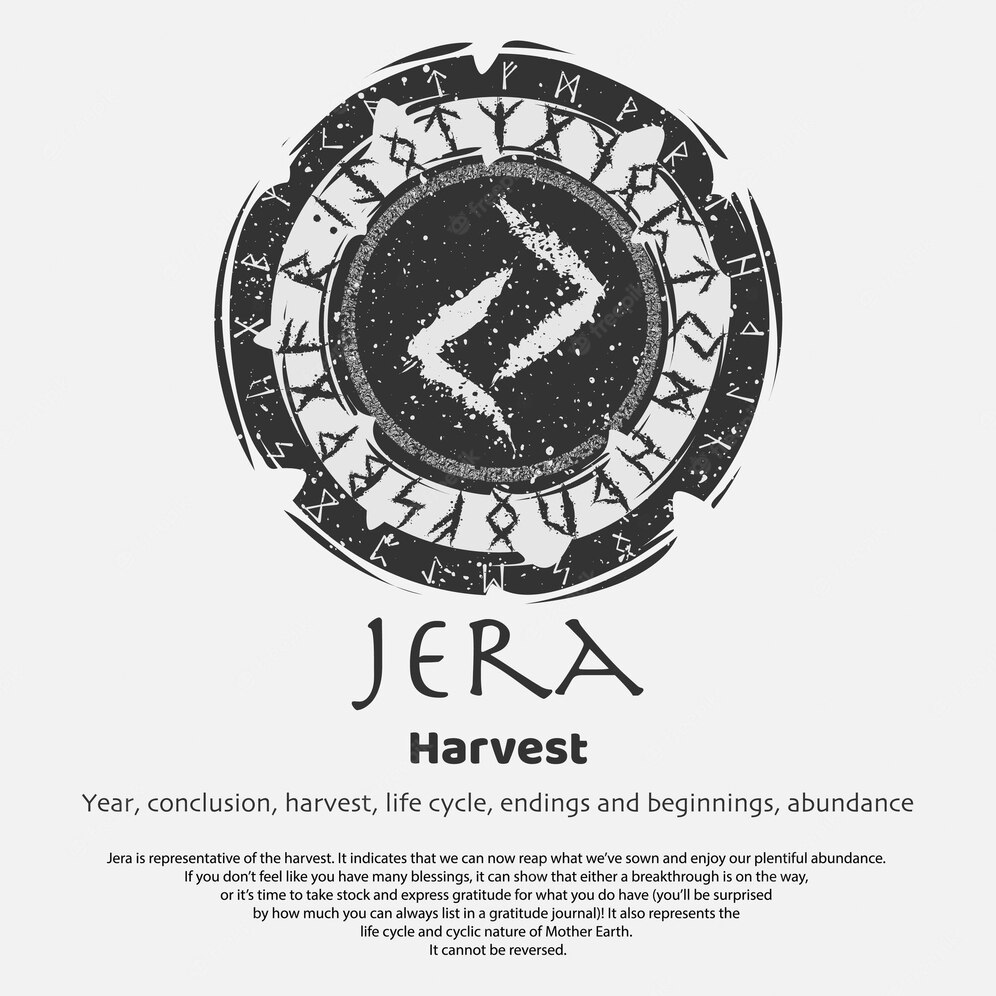
Jera Rune Meaning – The Harvest Rune
The Viking age, a captivating period in history, has bequeathed a fascinating cultural heritage that continues to enthral modern society. Among the most intriguing aspects …
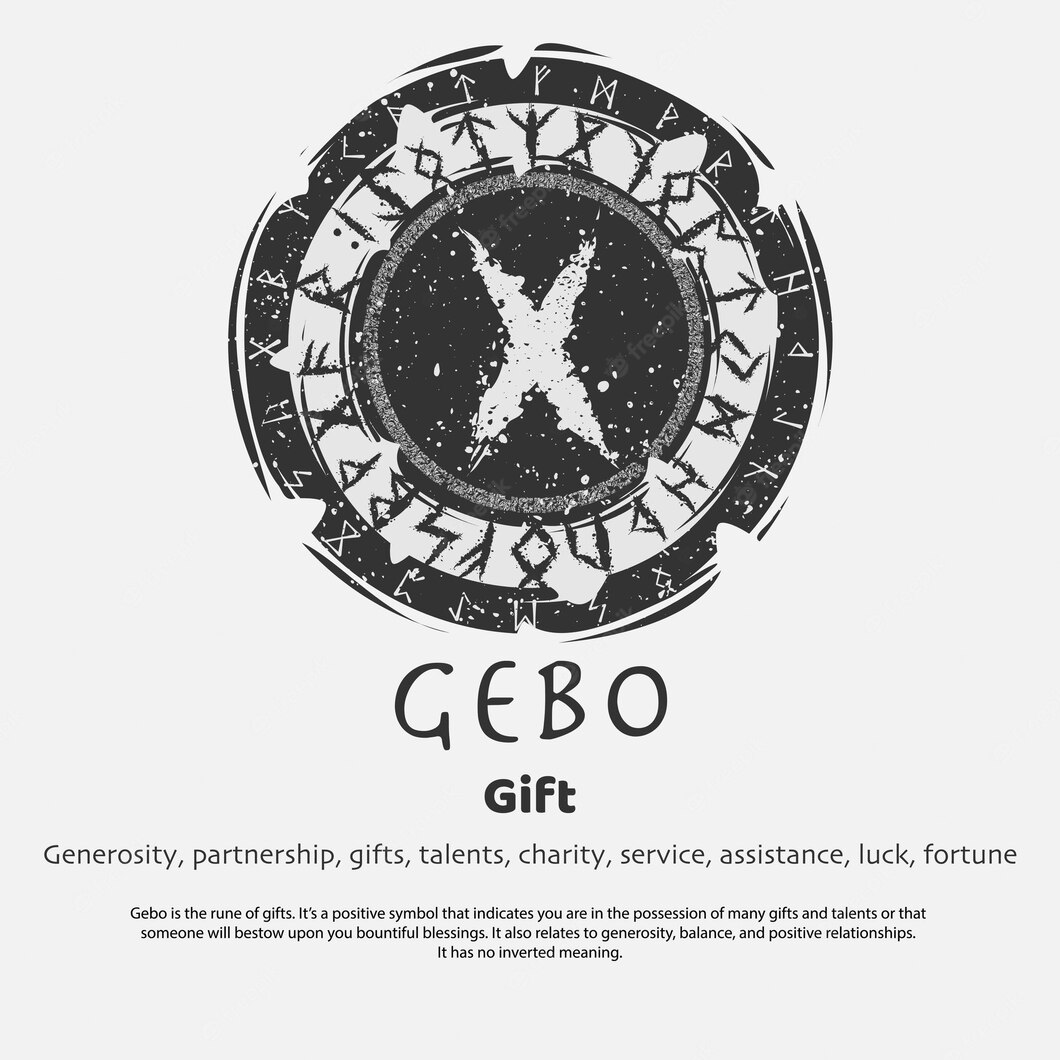
Gebo Rune Meaning – The X Rune
The Gebo rune, also known as Gyfu, is the seventh rune of the Elder Futhark and holds deep significance within the ancient Norse tradition. Associated …
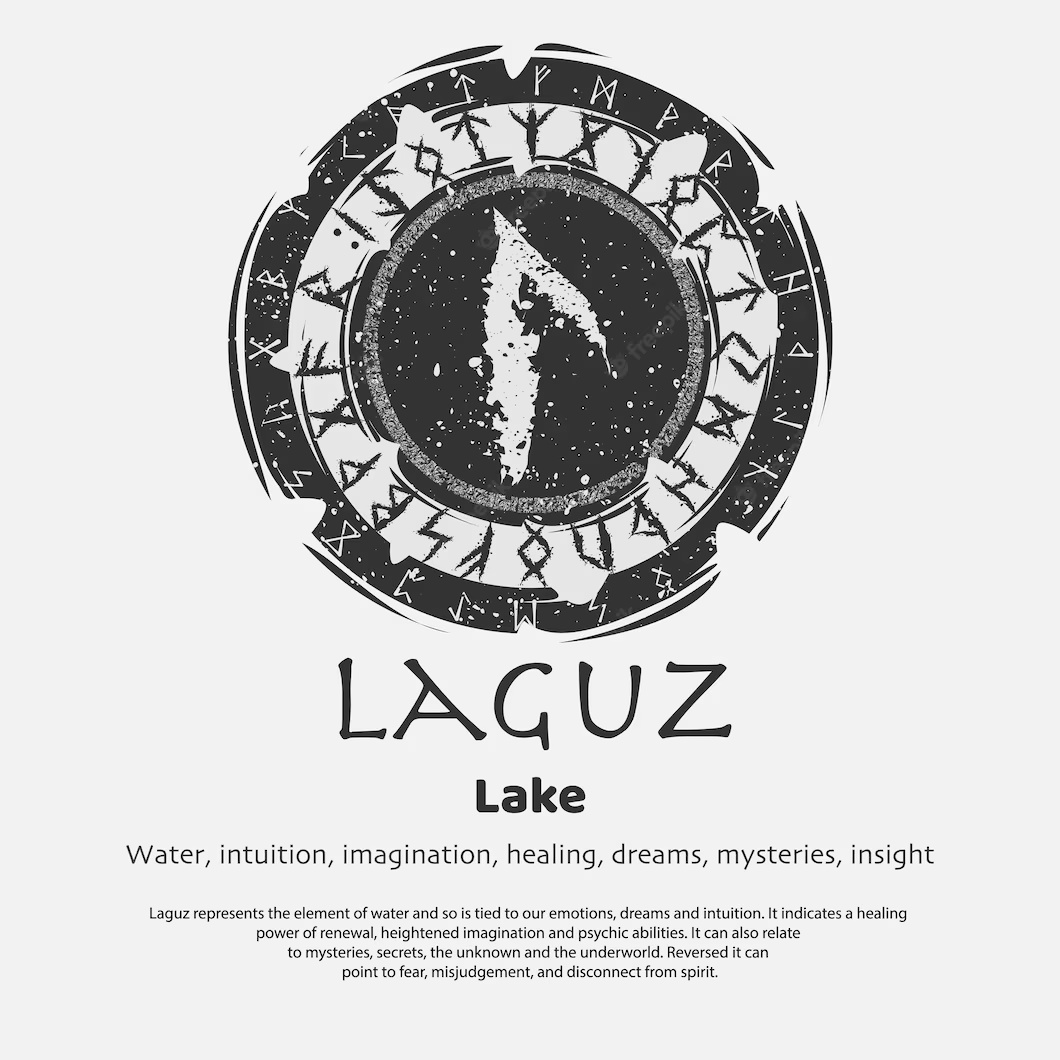
Laguz Rune Meaning – The Water Rune
Laguz, also known as Lagu, is the 21st rune of the Elder Futhark and holds a special place within the ancient Norse tradition. Associated with …
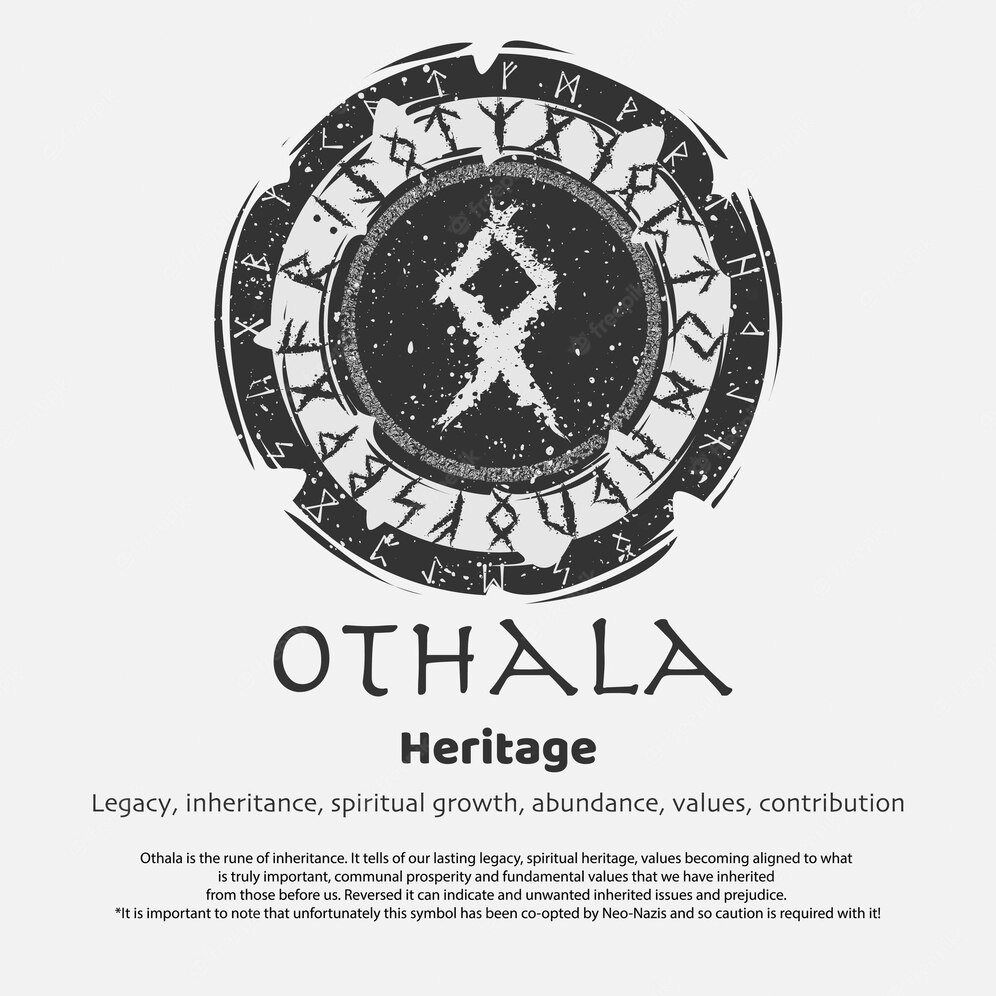
Othala Rune Meaning – The Family Rune
The Othala rune, also known as Odal or Othila, is the 24th and final rune in the Elder Futhark runic alphabet. This rune embodies the …
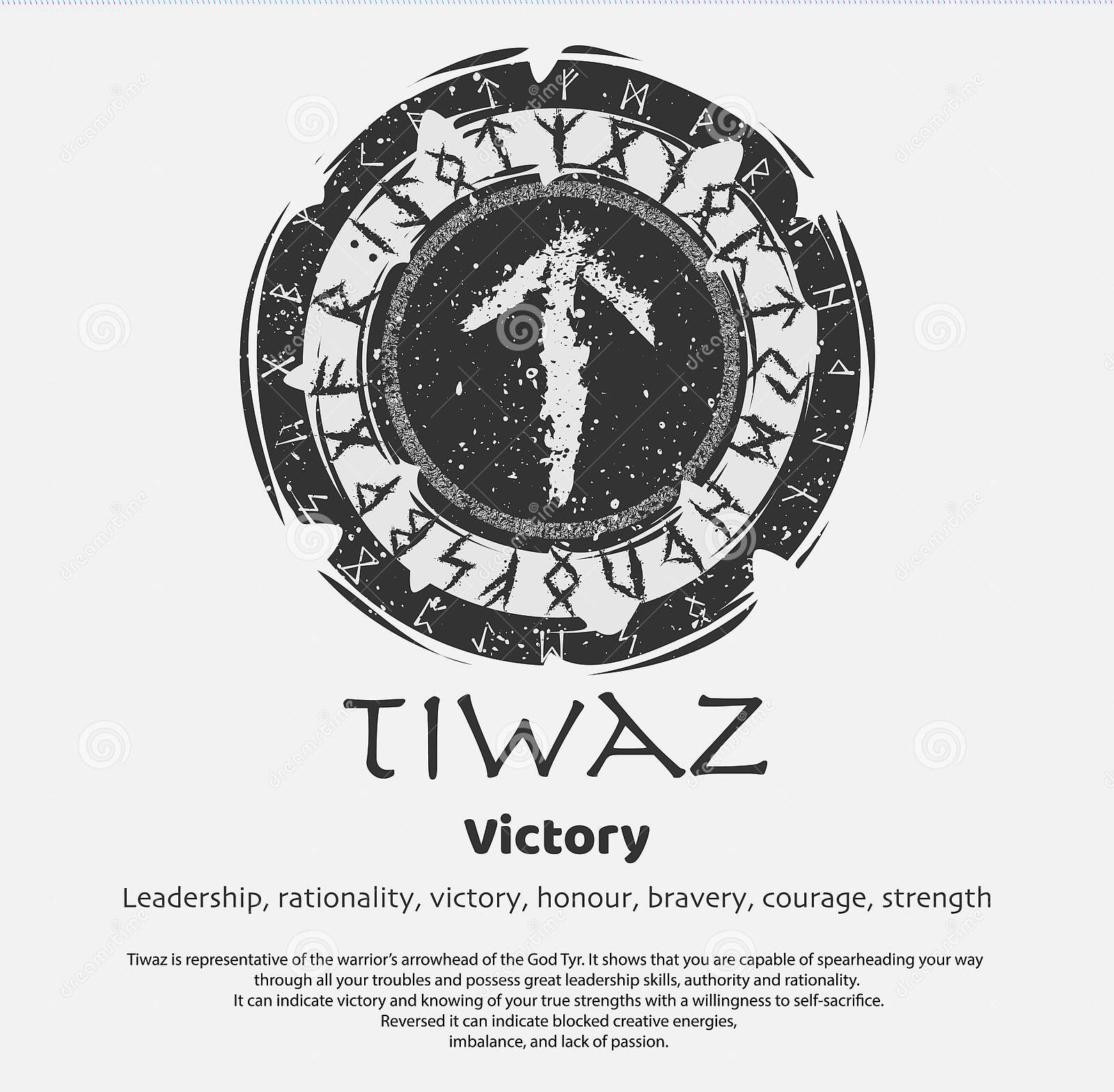
Tiwaz Rune Meaning – The Warrior Rune
Tiwaz, also known as Tyr, is the 17th rune of the Elder Futhark and holds a special place within the ancient Norse tradition. Associated with …
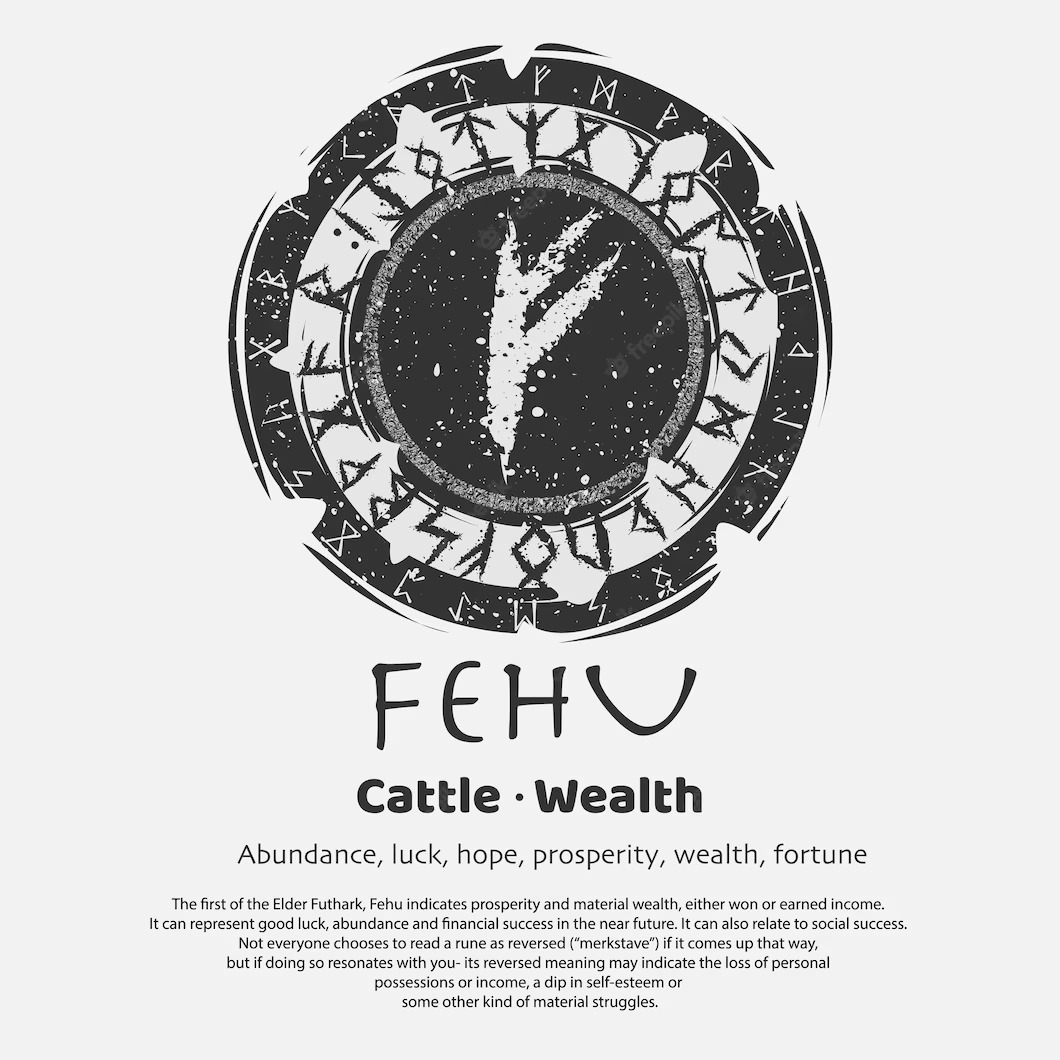
Fehu Rune Meaning – The Wealth Rune
The Fehu rune is a powerful symbol within the Elder Futhark, signifying wealth, abundance, and prosperity. As a rune expert, I will explore the rich …
Latest Posts
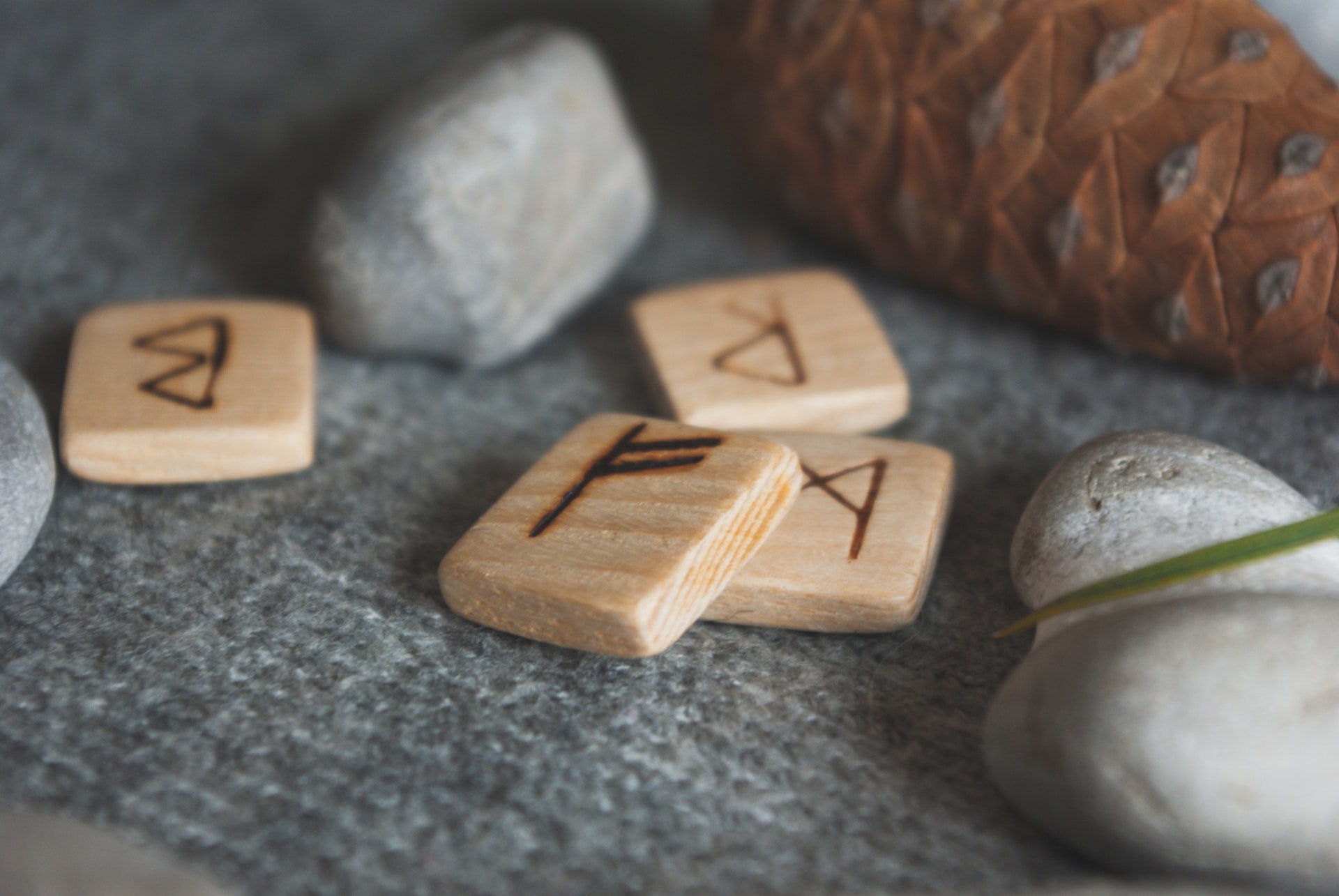
Confidence plays a crucial role in our personal and professional lives, influencing our ability to tackle challenges, seize opportunities, and realize our full potential. Harnessing …
Luck can often be a powerful ally in achieving our goals and navigating the ups and downs of life. Norse runes, as ancient symbols of …
Attracting wealth and abundance is a goal for many, but it can sometimes feel elusive or challenging. By harnessing the ancient wisdom of runes, you …
- Satisfaction Guarantee
- Free Shipping
- Change Currency AUD, $ USD, $ FOX v.1.4.1.1

Rune for Protection – Your Guide For the Meanings and Use of Norse Runes
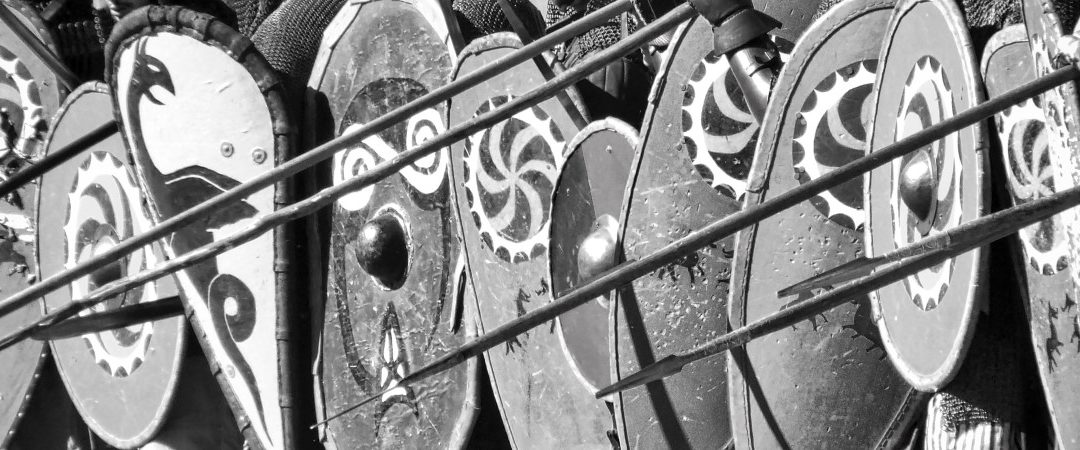
What is the Norse rune for protection ?
When looking for a Rune for Protection, there is far more than one to choose from! As a warrior culture, that venerates an honourable death in battle above all else, it might seem strange at first that there are so many symbols, rituals and talismans meant to protect Vikings and other Norse warriors. However, with so many other hazards in life, hunger, the elements, being lost at sea, it makes sense that there are some very specific charms and runes to keep you fit and healthy in between battles, and even in battle, to ensure you last long enough to go down in a blaze of glory! A rune for protection is so fundamental, that they even formed an important part of the everyday written language of ancient Norse people; the Elder Futhark
There are many other rune meanings, to see them all, check out our Complete Elder Futhark Rune Guide
The Elder Futhark
What is the elder futhark.
The Elder Futhark is a rune alphabet that was used by the Germanic peoples of northern Europe, Scandinavia, and the British Isles during the Early Middle Ages. The name “Elder Futhark” comes from the first six runes of the alphabet: Fehu (F), Uruz (U), Thurisaz (TH), Ansuz (A), Raidho (R), and Kaunan (K), and can therefore be literally translated as “the old ABC’s”. These rune symbols were carved into wood or stone for use as magical amulets or talismans. Each rune had its own meaning and purpose, and some were believed to have special powers. At least 6 can be considered a dedicated rune for protection, these are Algiz, Eihwaz, Ehwaz, Inguz, Thurisaz, and Teiwaz. The Elder Futhark fell out of use after the Christianization of the Germanic peoples in the 11th century AD. However, it has been revived in recent years by people who are interested in paganism and Norse mythology .
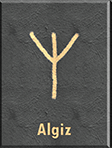
What does Algiz rune symbolize?
Algiz is a rune from the Elder Futhark, the oldest form of the runic alphabet. The name algiz comes from the Proto-Germanic word for elk, which was itself a symbol of protection. Algiz is classified as a protective rune, and its symbol is often interpreted as a elk or deer antler. In rune magic, algiz is used for protection and defense, and is sometimes carved into amulets and talismans for this purpose. It can also be used to invoke the help of higher powers, such as guardian angels. When used in spellwork, algiz can help to create an invisible shield of protection around the caster.
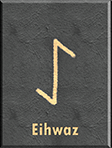
What does Eihwaz rune symbolize?
Eihwaz is another rune for protection. It is a symbol of strength and stability, and can be used to ward off negative energy. The rune is also associated with the World Tree, which is a symbol of the universe. In Norse mythology, the World Tree was used as a bridge between the worlds of gods and mortals. Eihwaz represents the channel that connects us to the divine. The rune can be used to promote balance and harmony in our lives. When we are in alignment with Eihwaz, we are able to manifest our highest potential.
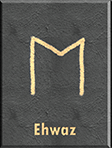
What does Ehwaz rune symbolize?
Ehwaz is one of the most commonly used runes in Scandinavian countries, as it is believed to offer protection against a wide range of dangers. The rune’s name comes from the Old Norse word for “horse,” which is thought to represent the rune’s ability to provide strength and support in times of need. Ehwaz is also associated with the concepts of loyalty and friendship, making it a popular choice for tattoos and other forms of body art. In modern paganism, Ehwaz is often used as a symbol of protection during rituals and ceremonies.
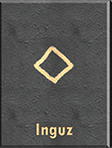
What does Inguz rune symbolize?
Inguz , also known as Ingvar, represents the letter ‘ng’ in the Elder Futhark. The name Inguz comes from the word ‘ingwi’, meaning ‘ancestor’. The rune was associated with fertility and protection, and was often used in fertility rituals. It was also thought to be a powerful rune for warding off evil spirits. Today, Inguz remains a popular symbol among pagans and rune diviners. It is often used as a rune for protection, and is said to bring peace, fertility, and new beginnings.
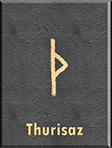
5. Thurisaz
What does thurisaz rune symbolize.
Thurisaz is a rune that is often associated with protection. Its meaning can be traced back to the Old Norse word for “thorn,” which was used as a symbol of defense. In rune readings, Thurisaz is often seen as a sign that caution is needed. It can represent obstacles or challenges that must be overcome. However, it can also represent the strength and resilience that is needed to face these challenges. In times of trouble, rune readers may recommend drawing Thurisaz for strength and protection.
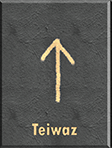
What does Teiwaz rune symbolize?
Teiwaz is a rune that is often associated with protection. Its name comes from the Norse god Tyr, who was known for his bravery and honor. The rune is also linked to the concept of law and justice. As such, it is often used as a charm for legal proceedings or as a symbol of strength and courage. In divination, Teiwaz can indicate the need for justice or the need to take action on behalf of others. It can also be a sign that victory is near.
Other Norse Protection Runes
Aside from the Elder Futhark, which contains the most common and important, there are several other runes and symbols for protection. Often they’re a representation of a weapon or artefact of the gods, with a moral or tale connected to it that invokes protection in the one who wears or inscribes it on stones, weapons or clothing.
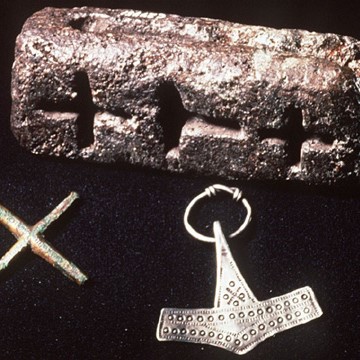
Ancient Thor’s Hammer (Mjolnir) Casting Mold
Mjolnir, meaning “lightning” and the name of Thor’s hammer, can also be represented in the rune for protection. A simplified inverted “T” shape is inscribed as a rune and was worn as a necklace by many Norse pagans during the era of Christianisation. It is a rune of power, strength, and fortitude. In Norse mythology, Mjolnir is the hammer of Thor, the God of Thunder. Thor’s hammer is said to be able to level mountains and crush giants. It is a symbol of Thor’s power and might. It is said to be able to protect its wearer from harm. Mjolnir is a powerful rune and it is said that it can help its wearer to overcome obstacles and challenges.
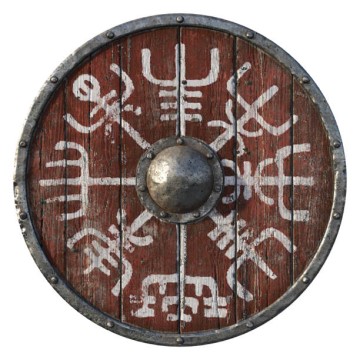
Vegvisir Painted on a Shield
The Vegvisir, also known as the Runic Compass or the Viking Compass, is a symbol of protection and guidance believed to be used by Vikings. The name Vegvisir means “sign post” or “way finder” in Icelandic, and it is thought to be a powerful rune that helps its bearer find their way through rough weather and dangerous terrain. The Vegvisir is made up of eight different rune staves, each with its own meaning and purpose. Together, they form a symbol of strength and protection that is perfect for anyone facing a challenging journey. Whether you’re looking for guidance in your personal life or you’re seeking inspiration for your next adventure, the Vegvisir can help you find your way.
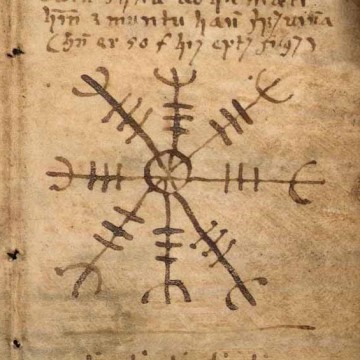
The Helm of Awe (Aegishjalmur) in an Ancient Text
Aegishjalmur
Aegishjalmur is a rune that is said to provide protection. The word itself comes from Old Norse and means “helm of awe” or “terror.” According to some sources, the rune was used as a symbol of protection by Vikings. It is said to create a barrier around the user that repels enemy attacks. Some people believe that the rune can also be used to summoned spirits or other supernatural beings. Aegishjalmur is often depicted as a spiral or maze-like symbol. It is sometimes used as a talisman or amulet and can be found in a variety of different jewelry and clothing items.
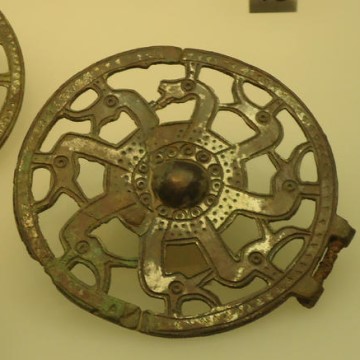
Bronze Sonnenrad Brooch
Sonnenrad is a rune that is said to offer protection. It is also known as the “sun spiral” referring to the daily cycle, a reassuring representation of there always being another day tomorrow, and is associated with the element of fire. Sonnenrad is often used in magic and ritual work involving the sun, fire, or heat. It can also be used for protection against enemies or forces that seek to harm you. In rune readings, Sonnenrad often indicates that you are surrounded by positive energy and that you have the strength to overcome any challenges that come your way.
Other Runes of Power
There are of course hundreds of other runes and symbols in Norse mythology and language about things other than protection. Every letter rune in the Elder Futhark has a special meaning. Below are a few of the most famous or striking symbols of power:
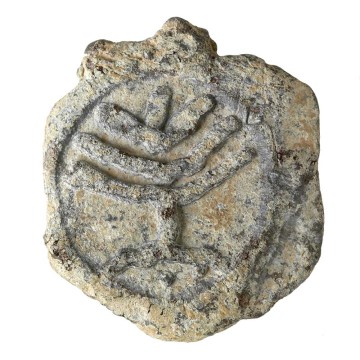
Ancient Yggdrasil Runestone
In Norse mythology, Yggdrasil is the world tree. The name Yggdrasil comes from Old Norse and means “odd or treacherous horse.” Yggdrasil is an immense ash tree that stands at the center of the cosmos and connects the nine worlds. The gods go to Yggdrasil daily to hold their court. It is also home to an eagle, a squirrel, and a dragon. Each day, the squirrel runs up and down the length of the tree, carrying messages between the worlds. Underneath Yggdrasil’s roots is the well of Urd, where the Norns – The three sisters who spin the fate of men – live. Nearby is Mimir’s Well, a spring of knowledge. Anyone who drinks from it will become wise. Lastly, there is Hel, the world of death. It is guarded by a giant serpent who never sleeps. Yggdrasil is a symbol of strength, endurance, and wisdom.
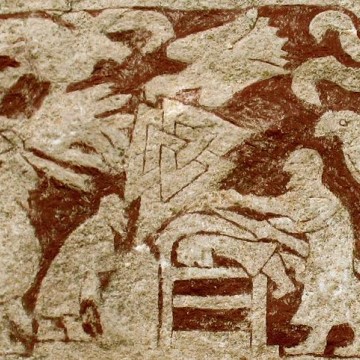
Mural Depicting Odin, his Ravens and the Valknut
What is Odin’s rune? It’s the valknut, a symbol consisting of three interlocking triangles. It appears on a variety of Norse artefacts, including runestones and swords. The name “valknut” is derived from the Old Norse words valr, meaning “slain warrior,” and knut, meaning “knot.” The valknut is often associated with the god Odin, who is said to welcome brave warriors into his hall in Valhalla. In Norse mythology, Valhalla is a place where fallen heroes feast and fight in preparation for the final battle of Ragnarok. The valknut may also represent the cycle of birth, death, and rebirth. This interpretation is supported by the fact that the triangles point both upwards and downwards. As such, the valknut symbolizes the balance between opposing forces and the interconnectedness of all things.
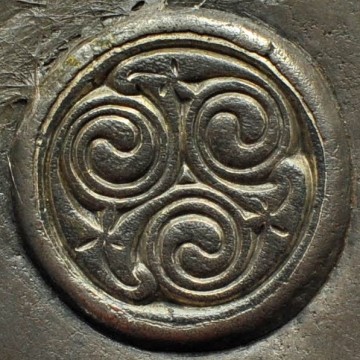
Celtic Triskelion Medallion
The triskelion is an ancient symbol that has been used by a variety of cultures throughout history. The word itself comes from the Greek word for “three legs,” and the symbol typically consists of three interlocking spirals or curved lines. In some cases, the triskelion may also include three human figures or animal heads. The meaning of the triskelion varies depending on the culture, but it is often seen as a symbol of strength, power, and endurance. In Celtic mythology, for example, the triskelion is associated with the triple god known as the Morrighan. In Chinese culture, the triskelion is sometimes used as a symbol of good luck. No matter what its specific meaning may be, the triskelion is a fascinating and versatile symbol that continues to hold significance in many cultures around the world.
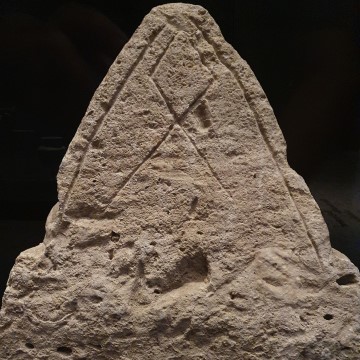
Carved Othilla Waystone
In Norse mythology, Othilla is the goddess of home and hearth. She represents the security and comfort that comes from having a safe, warm place to call home. Othilla is often depicted as a loving mother figure, providing shelter and protection for her family. Her name can be translated as “homestead” or “inheritance.” In some traditions, Othilla is also associated with fertility and abundance. She is often invoked by those seeking to start a new family or to improve their financial situation. Regardless of how she is worshipped, Othilla is a powerful goddess who brings strength, stability, and prosperity to her followers.

- Mens Viking Clothing
- Womens Viking Clothing
- Boots & Legwear
- Viking Shields
- Viking Horns
Accessories
- Wedding Jewelry
- Beard Jewelry
- Mjolnir - Thor's Hammer
- Odin & his Ravens
- Vegvisir - Norse Compass
- Ouroboros - Dragon Serpent
- Valknut - Knot of the Fallen
- Fenrir Wolf - Strength
- Viking T-Shirts
- 🎪 Fairs Calendar
- ⚔️ Viking Lifestyle
- ߷ Viking Runes
- Size Guide - Clothing and Jewelry
- Returns & Exchanges
- Caring for Viking Clothing
- Accessibility
- Cosplay Outfits
Womens Clothing
Wedding & Handfasting
- Viking Weddings
- Wedding Rings
- Viking Bags
- All Accessories
Tees & Hoodies
- T-Shirts & Hoodies
Viking Jewelry
- All Viking Jewelry
- Arm Rings & Torcs
Gods, Symbols & Runes
- Thor's Hammer (Mjolnir)
Womens Jewelry
Free Shipping on all Jewelry
- Fenrir - Wolf
Viking Life
- Viking Festivals Calendar
- Viking Runes
- Viking Culture
Information
- Care Guide for Clothing
Norse Runes and Viking Runes: A Complete Guide
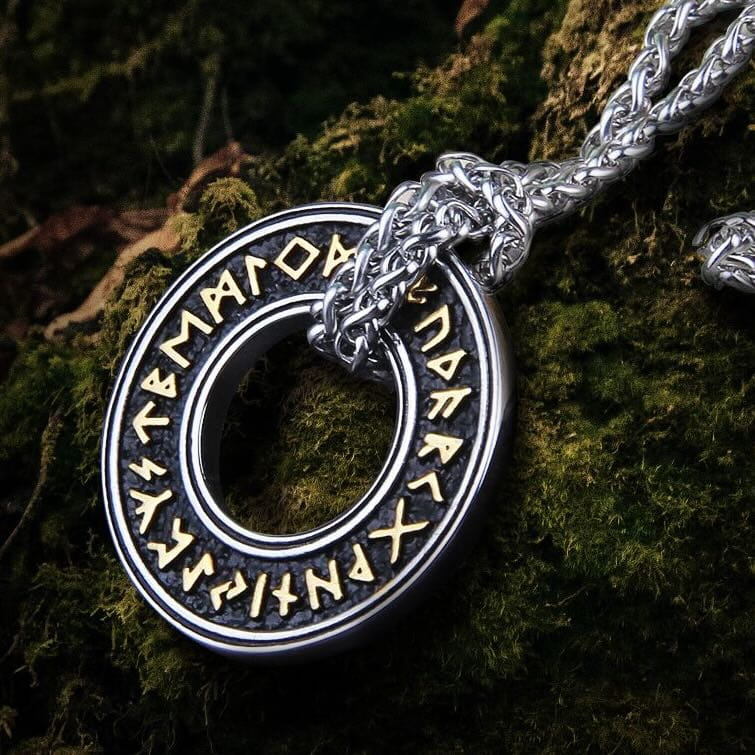
What Are Viking Runes?
Viking Runes (Norse Runes) were created in the Roman era to write the earliest forms of the Germanic language. They were eventually used by the Norse, Anglo-Saxons, and Germans. For over a thousand years, the runes evolved into writing styles that fit the needs of contemporary Germanic culture.
This guide describes each Rune - its symbol, meaning and pronunciation. It also provides a description of the runic language and how it is read.
Each Viking Rune Described
Here we provide the sign, name, phoneme (sound), and short description of the meaning of each of the twenty-four runes that comprise the Elder Futhark.
The meanings of these Viking Symbols are based on the medieval Rune Poems exclusively.
Sound: “f” Stands for: Cattle Color: Green (Brown) Casting meaning: Fehu is a rune of power and control. It represents new beginnings and “movable” wealth such as money and credit. It is a rune that gives us the power we need to obtain wealth as well as the power we need to hold on to it.
Sound: “oo” Stands for: Auroch (like a wild ox) Color: Orange (Dark Green) Casting meaning: Uruz is also a rune of power, but unlike Fehu, it’s a power that we can neither own nor control. In a casting it can mean that personal success is near. For charms and talismans use Uruz for its healing powers.
Sound: “th” Stands for: Thorn (or Giant) Color: White Casting meaning: This rune represents the ability we have to resist unwanted conflicts in a passive manner. It is a rune of protection and can tell us of a possible change that would have otherwise come without warning. You can use the protection aspect of Thurisaz as a defense against adversaries.
Sound: “aa” as in “aah” Stands for: Mouth (or Divine Breath) Color: Purple Casting meaning: Ansuz is a rune that symbolizes stability and shows us order. It is also a rune that indicates intellectual activities and directly represents the divine breath of all life and creation.
Sound: “r” Stands for: Wheel, Cartwheel (or Riding) Color: Blue (Black) Casting meaning: This rune allows us to focus our energy so that we may obtain our goals. However to do so effectively we must be “in the right place at the right time.”
Sound: “k” Stands for: Torch Color: Yellow Casting meaning: Kenaz is a rune of knowledge, understanding, learning and teaching. It allows us to view situations with more clarity than we normally would.
Sound: “g” as in “gift” Stands for: Gift Color: Gold & Silver (Red) Casting meaning: Gebo represents the honor and connection that is created between people when they exchange gifts. The connection and honor is similar to the connection and honor that a person has with the gods for giving them life.
Sound: “w”, “v” Stands for: Joy Color: Pink (Blue) Casting meaning: This rune shows us the balance between all things even when in a chaotic world. It is also a rune of fellowship, common goals and well being to all things. If you come across this rune in a reading you can expect good news to come your way.
Sound: “h” Stands for: Hail, Hailstone Color: Blue (White) Casting meaning: Representing a hailstone we can expect time and situations to be constricting if Hagalaz turns up in a reading. But much like a hailstone will eventually turn to water, which flows smoothly, these situations and times will eventually flow smoothly for us.
Sound: “n” Stands for: Necessity (or Need) Color: Black (Blue) Casting meaning: This rune represents how our need or want of something can put a restriction on us. It restricts our possibilities but also contains the power we need to break free from those restrictions.
Sound: “i”, “ee” as in “east” Stands for: Ice Color: Brown (Black) Casting meaning: Like an icicle formed at the start of winter, with this rune we can only wait until the warmth of the sun allows us to be free from a constricting form. Isa represents a halt in activity until a change is made.
Sound: “j” like the “y” in “year” Stands for: Harvest (or Year or Season) Color: Brown Casting meaning: Jera is a rune that represents the cycle of life. With this rune we see that we must go with the flow of nature to obtain the goals we want.
Sound: “eo”, “æ” Stands for: Yew Tree Color: White (Green) Casting meaning: Eihwaz is a rune that can be used as a magical protector and facilitator. It shows us that in the event of an ending situation we find the start of a new situation.
Sound: “p” Stands for: Dice Cup (there are many variations) Color: Blue (Red) Casting meaning: Perdhro reminds us of the uncertainties in life and represents freewill and the connection of the restrictions we have due to our circumstances. It is viewed as a rune of memory and problem solving.
ᛉ Elhaz or Algiz
Sound: “zz” as in “buzz” Stands for: Elk (or Protection) Color: Black (Purple) Casting meaning: This is a rune of great restraint power, defense and protection. Use this rune in charms and talismans to protect yourself as well as your property.
Read more about the history and use of Algiz here
Sound: “s” Stands for: Sun Color: Yellow Casting meaning: With the help of this rune we tend to be able to see things more clearly. Like the sun sheds light on dark times, with Sowulo we too can find the light during dark times.
Sound: “t” Stands for: Creator Color: Green (Red) Casting meaning: Teiwaz can promise us success in our actions but this time without personal sacrifice. It also means success in “legal” matters but only if we were in the right to begin with.
Sound: “b” Stands for: Birch Tree (or Birch Twig) Color: White (Blue) Casting meaning: Like the birch tree coming to life from a seed planted in the earth, Berkana represents a new beginning and is also a powerful birth rune.
Sound: “e” as in “every” Stands for: Horse Color: Red (White) Casting meaning: Ehwaz reminds us that in order for success there must be a natural flow in the task at hand. With this rune to give us power as well as it making use of our good intentions we can surely achieve such success.
Sound: “m” Stands for: Man (as in human, not gender) Color: Blue (Purple) Casting meaning: Mannaz has many powers. First it is a rune that lets us know we can achieve our fullest potential. Secondly it reminds us that we, as humans, all have shared experiences in life. Lastly we can use the power of this rune to gain the upper hand in disputes and arguments.
Sound: “l” Stands for: Water (or Lake) Color: Black & White (Green) Casting meaning: Laguz represents the power of water and its easy flowing nature. We must learn to “go with the flow” when this rune shows up in a reading so that we can take full advantage of our powers.
Sound: “ng” as in “long” Stands for: Fertility Color: Brown (Black) Casting meaning: This rune allows us to spread our energy out far and wide. It is a protective rune mainly for the protection of our homes. To use Inguz effectively we must learn to build up our powers over time and then release the power all at once.
Sound: “d” Stands for: Day Color: Yellow Casting meaning: Dagaz represents a stability between opposites, such as light and dark. It can stop harmful energy from getting to you but at the same time allow the good energy to slip through so that you can make good use of it.
Sound: “o” as in “old” Stands for: Home (or Odla – sacred ancestral land) Color: Copper (Brown) Casting meaning: Much like Fehu this is a rune of wealth. But unlike Fehu, Othala represents a wealth that cannot be sold. This is wealth like family, friendships or our culture and heritage that is passed down to us. It represents an enclosure and maintains the existing state of things as they presently are.
How Are Norse Runes Read?
Most Viking Symbols are generally made up of vertical lines – one or more – with 'branches' or 'twigs' jutting out diagonally (and very occasionally horizontally) upwards, downwards or in a curve from them. They can be written both from left to right and from right to left, with asymmetrical characters being flipped depending on the direction of writing. Each rune, of which major and minor versions existed, represents a phoneme (speech sound) and had a name, made up of a noun, that started (and in one case, ended) with the sound the rune was mainly associated with. Lots of regional and temporal variation existed in the shapes of the letters.
Elder Futhark
Elder Futhark (also Elder Fuþark – þ being the 'th' sound in English 'thin' – or older Fuþark/Futhark) is the earliest classified runic script and was used until c. 700 CE in the Germanic world. Counting 24 characters and being surprisingly uniform, it is named after the first six characters in the alphabet (f-u- þ (th)-a-r-k). The runes are grouped together in three rows of eight, each group being called an ætt (pl. ættir ), and each rune was named after things that start (or in one case, end) with that sound. Although preserved manuscripts from the 9th and 10th centuries CE have given us the names of the Younger Futhark and Anglo-Saxon runes, no such luxury is awarded us for Elder Futhark. However, based mostly on the Younger Futhark names supplemented with Anglo-Saxon and even Gothic, the Elder Futhark rune-names have been reconstructed to the best of our modern-day ability.
Elder Futhark was used to write Proto-Germanic, Proto-Norse, Proto-English, and Proto-High German – thus, geographically quite widely spread – and survives today in just under 400 inscriptions (found so far), most of which show substantial wear and tear and are only partly readable. It is likely this number only represents a fraction of the real total; the rest must be lost in time and space. They are initially found on wood – which of course does a poor job at standing the test of time – and metal in the form of names. Popular surfaces were military equipment, coins, and jewellery such as bracteates, brooches or combs, and the typically Scandinavian runestones, some of which were in Elder Futhark as opposed to the much more frequently represented later Younger Futhark. Although Scandinavia, northern Germany and eastern Europe were the earliest homes to such items, after c. 400 CE England, the Netherlands, and southern Germany joined the club. Because they focus mostly on ownership and show no visible connection to society at any greater level, runic writing in societies up to c. 700 CE is assumed to not to have had a central function.
Despite Elder Futhark's largely uniform nature, variation existed too, though, and it is important to realise the rune-row generally presented for the Elder Futhark today is only a main line. Here follows the most commonly given Elder Futhark rune-row, starting with the rune, its transliteration, its inferred (Proto-Germanic) name and the meaning of that name:
- ᚦ þ ('th') *þurisaz “giant”
- ᚨ a *ansuz “one of the Æsir (gods)”
- ᚱ r *raiðō “ride”/”journey”
- ᚲ k *kaunan “boil”/”blister” (or maybe “torch”)
- ᚷ g *gebō “gift”
- ᚹ w *wunjō “joy”
- ᚺ h *hagalaz “hail” (the precipitation)
- ᚾ n *nauðiz “need”/“emergency”/”desperation”
- ᛁ I *īsaz “ice”
- ᛃ j *jēra “year”, but typically “harvest”/”good harvest”
- ᛈ p *perðō? “pear tree”? (unclear)
- ᛇ ï/æ? *eihaz/ei(h)waz “yew tree” (but very confusing attestation)
- ᛉ z *algiz? “elk“
- ᛋ s *sōwilō “sun”
- ᛏ t *tīwaz/*teiwaz “Týr” (the god)
- ᛒ b *berkanan “birch”
- ᛖ e *ehwaz “horse”
- ᛗ m *mannaz “man”
- ᛚ l *laguz “lake” (or maybe “leek”)
- ᛜ ŋ ('ng') *ingwaz “Ing” (/Yngvi, another name of the god Freyr)
- ᛞ d *dagaz “day”
- ᛟ o *ōþala/*ōþila “inherited property”/”possession”
Younger Futhark
YOUNGER FUTHARK HEADLINES IN THE BIG BANG IN RUNIC INSCRIPTIONS AFTER 700 CE THROUGHOUT VIKING AGE SCANDINAVIA, WHERE IT IS FOUND ON RUNESTONES WHICH DOT THE LANDSCAPE.
After c. 700 CE, in Scandinavia, Elder Futhark was adapted into the Younger Futhark (or Younger Fuþark) script used for writing Old Norse, the language of the Viking Age. Eight of the original 24 characters were ditched and many others were simplified or changed shape, as well as more variety cropping up in general. Vitally, it is the medium of our only written (Scandinavian) Viking Age sources. The runes that were dropped are ᚷ, ᚹ, ᛇ, ᛈ, ᛖ, ᛜ, ᛟ, and ᛞ - transliterated as g, w, ï/æ, p, e, ŋ, and d. The ættir , or runic groups, known from Elder Futhark, remained in place, now becoming groups of six, six, and four, respectively. In Younger Futhark, runes had more than one possible sound attached to them, specifically no longer making clear in writing the distinction between voiced and unvoiced consonants such as k and g, which were both written with the rune ᚴ. Vowels, too, learned to share, their value having to be gleaned from the context they were found in. This makes this runic script quite difficult to read (for us, today, at least).
It seems this new script was adopted in a lightning-quick fashion, perhaps due to a deliberate effort, but probably at least influenced by changes in the language or in sounds. Michael Barnes tells us how,
…by the beginning of the eight century all, or virtually all, rune-carvers were using the same sixteen runes – a remarkable example of unity in the apparent absence of a central authority to promote it. But that was as far as the unity went. When it came to the realisation of many of the sixteen runes, a much more open policy prevailed. Some carvers experimented with runic form, simplifying many characters. Others resisted change, or were unaware of it. Different traditions developed. (63)
In Denmark, for instance, a “long-branch” version of the runic script was preferred, whereas Norway and Sweden stuck to “short-twig”, and the Hälsingland area in Sweden even developed a set of runes – Hälsinge/staveless runes - missing the main staves (except in the i-rune) in a zealous simplification. The rune-row given for Younger Futhark below, then, is a composite showing the most common forms across the board; the row starts with the rune, then its transliteration, its (Old Norse) name and the meaning of that name:
- ᚠ f/v fé “wealth”/“cattle”
- ᚢ u/w, y, o, ø úr “slag from iron production”/”rain(storm)”
- ᚦ ᚦ, ð ('th') ᚦurs ('thurs') “giant”
- ᚬ o, æ áss/óss “Æsir”/”estuary”
- ᚱ r reið “ride”/(“vehicle”)
- ᚴ k, g kaun “ulcer”/”boil”
- ᚼ h hagall “hail”
- ᚾ n nauðr “need”/”threat”/”emergency”
- ᛁ I, e ísa/íss “ice”
- ᛅ a, æ ár “year”, typically “good year”/”good harvest”
- ᛋ s sól “sun”
- ᛏ t, d Týr “Týr” (the god), also used for any god
- ᛒ b, p björk/bjarkan/bjarken “birch”
- ᛘ m maðr “man”/”person”
- ᛚ l lǫgr (lögr) “lake” or a small body or water
- ᛦ r yr “yew”, yew tree, or maybe “elm”
Younger Futhark headlines in the big bang in runic inscriptions: the number of known inscriptions hugely increases for Viking Age Scandinavia after 700 CE, with runes found on often-decorated runestones large and small which dot the landscape. These stones helped bump up the numbers to a total of almost 3000 Scandinavian runic inscriptions during this period - in stark contrast with the barely 400 Elder Futhark ones. All mediums taken together, the inscriptions tell us about ownership or inheritance, politics (power struggles, raiding and conquests, or major invasions), religion (including Christianity and its spread), travel (inland but also abroad), and literature and myth.
What Are The Origins of Norse and Viking Runes?
The runes were created in the Roman era to write the earliest forms of the Germanic language. They were eventually used by the Norse, Anglo-Saxons, and Germans. For over a thousand years, the runes evolved into writing styles that fit the needs of contemporary Germanic culture.
The secrets of reading and writing were also believed to hold deeper secrets. The runes were closely associated with magic. Whether used on charms or invoked by gods, the Norse and other Germanic people believed that the runes were connected to divine powers. This connection has not entirely been lost in the modern era. After hundreds of years of practical use, runes are once again being written in charms, spells, and prayers.
A Deeper Dive In The History of Runes
While runologists argue over many of the details of the historical origins of runic writing, there is widespread agreement on a general outline. The runes are presumed to have been derived from one of the many Old Italic alphabets in use among the Mediterranean peoples of the first century CE, who lived to the south of the Germanic tribes.Earlier Germanic sacred symbols, such as those preserved in northern European rock carvings, were also likely influential in the development of the script.
The earliest possibly runic inscription that we know of is found on the Meldorf brooch, which was manufactured in the north of modern-day Germany around 50 CE. The inscription is highly ambiguous, however, and scholars are divided over whether its letters are runic or Roman. The earliest unambiguous runic inscriptions are found on the Vimose comb from Vimose, Denmark and the Øvre Stabu spearhead from southern Norway, both of which date to approximately 160 CE. The earliest known carving of the entire futhark (alphabet), in order, is that on the Kylver stone from Gotland, Sweden, which dates to roughly 400 CE.
The transmission of writing from southern Europe to northern Europe likely took place via Germanic warbands, the dominant northern European military institution of the period, who would have encountered Italic writing firsthand during campaigns amongst their southerly neighbors. This hypothesis is supported by the association that runes have always had with the god Odin, who, in the Proto-Germanic period, under his original name *Woðanaz , was the divine model of the human warband leader and the invisible patron of the warband’s activities. The Roman historian Tacitus tells us that Odin (“Mercury” in the interpretatio romana ) was already established as the dominant god in the pantheons of many of the Germanic tribes by the first century. Whether the runes and the cult of Odin arose together, or whether the latter predated the former, is of little consequence for our purposes here. As esteemed Indo-European scholar Georges Dumézil notes:
If Odin was first and always the highest magician, we realize that the runes, however recent they may be, would have fallen under his sway. New and particularly effective implements for magic works, they would become by definition and without contest a part of his domain. … Odin could have been the patron, the possessor par excellence of this redoubtable power of secrecy and secret knowledge, before the name of that knowledge became the technical name of signs both phonetic and magic which came from the Alps or elsewhere, but did not lose its former, larger sense. [15]
From the perspective of the ancient Germanic peoples themselves, however, the runes came from no source as mundane as an Old Italic alphabet. The runes were never “invented,” but are instead eternal, pre-existent forces that Odin himself discovered by undergoing a tremendous ordeal. This tale has come down to us in the Old Norse poem Hávamál (“The Sayings of the High One”):
I know that I hung On the wind-blasted tree All of nights nine, Pierced by my spear And given to Odin, Myself sacrificed to myself On that pole Of which none know Where its roots run. No aid I received, Not even a sip from the horn. Peering down, I took up the runes – Screaming I grasped them – Then I fell back from there.
The tree from which Odin hangs himself is surely none other than Yggdrasil, the world-tree at the center of the Germanic cosmos whose branches and roots hold the Nine Worlds. Directly below the world-tree is the Well of Urd, a source of incredible wisdom. The runes themselves seem to have their native dwelling-place in its waters. This is also suggested by another Old Norse poem, the Völuspá (“Insight of the Seeress”):
There stands an ash called Yggdrasil, A mighty tree showered in white hail. From there come the dews that fall in the valleys. It stands evergreen above Urd’s Well. From there come maidens, very wise, Three from the lake that stands beneath the pole. One is called Urd, another Verdandi, Skuld the third; they carve into the tree The lives and fates of children.
These “three maidens” are the Norns, and their carvings surely consist of runes. We therefore have a clear association between the Well of Urd, the runes, and magic – in this case, the ability of the Norns to carve the fates of all beings.
Related Blog Posts

The Myth of Ratatoskr in Norse Lore

Vikings' Favorite Drink

Viking Shield Maiden - Fact vs Fiction
Runic jewelery & decor for sale.
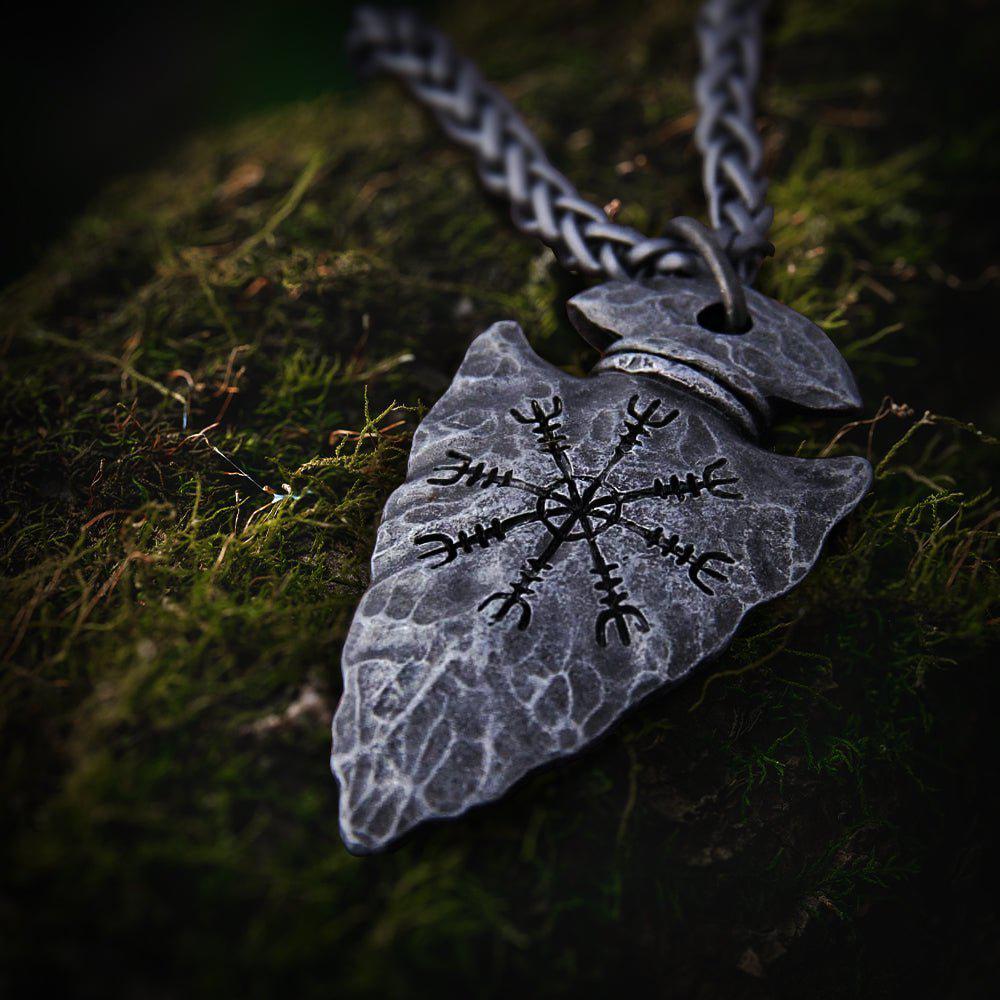
- PRO Courses Guides New Tech Help Pro Expert Videos About wikiHow Pro Upgrade Sign In
- EDIT Edit this Article
- EXPLORE Tech Help Pro About Us Random Article Quizzes Request a New Article Community Dashboard This Or That Game Happiness Hub Popular Categories Arts and Entertainment Artwork Books Movies Computers and Electronics Computers Phone Skills Technology Hacks Health Men's Health Mental Health Women's Health Relationships Dating Love Relationship Issues Hobbies and Crafts Crafts Drawing Games Education & Communication Communication Skills Personal Development Studying Personal Care and Style Fashion Hair Care Personal Hygiene Youth Personal Care School Stuff Dating All Categories Arts and Entertainment Finance and Business Home and Garden Relationship Quizzes Cars & Other Vehicles Food and Entertaining Personal Care and Style Sports and Fitness Computers and Electronics Health Pets and Animals Travel Education & Communication Hobbies and Crafts Philosophy and Religion Work World Family Life Holidays and Traditions Relationships Youth
- Browse Articles
- Learn Something New
- Quizzes Hot
- Happiness Hub
- This Or That Game
- Train Your Brain
- Explore More
- Support wikiHow
- About wikiHow
- Log in / Sign up
- Education and Communications
- World Languages
- Language Interpretation
An In-Depth Guide to Viking Runes & Their Meanings
Last Updated: January 16, 2024 Fact Checked
- Younger Futhark Runes
- Elder Futhark Runes
- Spiritual Practices
- Birth Runes
This article was reviewed by Stina Garbis and by wikiHow staff writer, Sophie Burkholder, BA . Reverend Stina Garbis is a Psychic Astrologer and the Owner of Psychic Stina. With over 30 years of experience, she specializes in providing personal and professional advice through astrology and tarot card readings. Reverend Stina has experience working with high-profile celebrities, sports figures, politicians, and CEOs. She has been featured in many publications, including Bustle, Vice, The New York Post, and Readers’ Digest and she also has a 200k+ following on TikTok. Stina holds an Ordained Minister License from The International Metaphysical Ministry University Seminary. There are 9 references cited in this article, which can be found at the bottom of the page. This article has been fact-checked, ensuring the accuracy of any cited facts and confirming the authority of its sources. This article has been viewed 3,944 times.
From seafaring skills to their famed god of thunder, Viking history contains endless things to be fascinated by. Thousands of centuries later, none have captured so much interest as their ancient alphabets. These alphabets are made up of intricate Viking runes, which are believed to have mystical and powerful meanings. Whether you're curious about the history of Viking runes, intrigued by the meaning of each symbol, or are looking for ways to use them in your life and spiritual practices, you’ve come to the right place. Let's dive into a sea of Viking lore.
Things You Should Know
- Each Viking rune has a specific symbol, name, meaning, and energy.
- Viking runes come from two Nordic alphabets: the Elder Futhark and the Younger Futhark. Both are important, but the Younger Futhark was used more in Viking times.
- Viking runes are thought to have mystical powers that can be used for divination, protection, meditation, and astrology.
Younger Futhark Runes & Meanings

- Fé (F) – cattle, wealth. Pronounced “fey.” Warns of problems caused by unequal wealth.
- Úr (U, O, Y, W) – iron, rain. Pronounced “oor.” Represents how good things can still come from nothingness.
- Thurs (Th) – male giant. Pronounced “thor-s.” Gives power and strength.
- As/Oss (O) – god, mouth. Pronounced “oh-s.” Reminds you of the power of communication.
- Reið (R) – ride. Pronounced “ray-d.” Symbolizes a journey along your chosen path in life.
- Kaun (K, G) – wound. Pronounced “kow-n.” Represents what you learn from suffering or challenges.
- Hagall (H) – hail. Pronounced “haw-gahl.” Symbolizes a transformation from a difficult situation to something that flows naturally.
- Nauðr (N) – need. Pronounced “now-dr.” Represents your needs and the danger of letting a need overtake your life.
- Ísa/Íss (I, E, J) – ice. Pronounced “ees.” Symbolizes resistance to change.
- Ár (A) – a good year. Pronounced “are.” Promises good results from using your skills wisely.
- Sól (S) – sun. Pronounced “soh-l.” Signifies actions guided by higher powers.
- Týr (T, D) – Pronounced “too-r.” Refers to the Norse god Tyr. Represents law and order.
- Björk (B, P) – birch. Pronounced “bee-yark-an.” Symbolizes birth, rebirth, and purification.
- Maðr (M) – humankind. Pronounced “mawth-dr.”Represents family legacy and clans.
- Lögr (L) – sea. Pronounced “loh-gr.” Represents the power of water and the cleansing of unwanted things.
- Yr (R, Z) – yew tree. Pronounced “ew-r.” Symbolizes death and the entrance to the underworld.
Elder Futhark Runes & Meanings

- Fehu (F) – cattle, wealth. Pronounced “fay-hoo.” Symbolizes prosperity and abundance. Sounds like “eff,” as in “farm.”
- Uruz (U) – wild ox. Pronounced “oo-rooz.” Symbolizes strength and power. Sounds like “ooh,” as in “food.”
- Thurisaz (Th) – giant, thorn. Pronounced “thoor-ee-saws.” Symbolizes protection, courage, and solving problems. Sounds like “th,” as in “thick.”
- Ansuz (A) – Refers to the Norse god Odin. Pronounced “awn-sooz.” Symbolizes wisdom, truth, and the power of communication. Sounds like “ah,” as in “car.”
- Raidho (R) – ride, journey. Pronounced “rye-though.” Symbolizes life’s journeys and embracing change. Sounds like “arr,” as in “rock.”
- Kaunan/Kenaz (K) – torch. Pronounced “cayn-awz.” Symbolizes transformation, fertility, and creativity. Sounds like a hard c or k, as in “click.”
- Gebo (G) – gifts, exchange. Pronounced “gay-bow.” Symbolizes partnership, generosity, and the exchange of gifts and energy. Sounds like a hard g, as in “good.”
- Wunjo (W) – joy or success. Pronounced “woon-yo.” Symbolizes joy, friendship, and celebrating personal goals. Sounds like “wuh,” as in “wind.”
- Hagalaz (H) – hail. Pronounced “ha-gah-laws.” Symbolizes change, transformation, and destruction. Sounds like “huh,” as in “hope.”
- Nauthiz (N) – need. Pronounced “now-these.” Symbolizes basic human needs, facing challenges, and endurance. Sounds like “en,” as in “none.”
- Isa (I) – ice. Pronounced “ee-saw.” Symbolizes self-reflection, tranquility, and isolation. Sounds like a short i, as in “hip.”
- Jera (J) – year, harvest, abundance. Pronounced “yar-aw.” Symbolizes abundance, peace, and the change of seasons. Sounds like a soft j or y, as in “year.”
- Eihwaz (Ei) - yew-tree, ash-tree. Pronounced “eye-wahz.” Symbolizes healing, strength, and transformation. Sounds like a long e, as in “tree.”
- Perthro (P) – pear tree, pear wood. Pronounced “perth-row.” This rune’s exact meaning is unclear, but interpretations include destiny, mystery, and fun. Sounds like “pee,” as in “penny.”
- Algiz (Z) – elk. Pronounced “all-yeez.” Symbolizes self-defense and divine protection. Sounds like “zee,” as in “zoo.”
- Sowilo (S) – sun. Pronounced “so-wee-low.” Symbolizes health, success, and spiritual environment. Sounds like “ess,” as in “sorry.”
- Tiwaz (T) – Refers to the Norse god Tyr. Pronounced “tee-wahz.” Symbolizes justice, victory, and strong leadership. Sounds like “tee,” as in “tall.”
- Berkana (B) – birch. Pronounced “bear-kah-nah.” Symbolizes fertility, growth, and the cycle of life and death. Sounds like “be,” as in “bird.”
- Ehwaz (E) – horse. Pronounced “eh-wahz.” Symbolizes loyalty, trust, and partnership. Sounds like a short e, as in “bed.”
- Mannaz (M) – man. Pronounced “man-nahz.” Symbolizes humanity, society, and our connections to others. Sounds like “em,” as in “mother.”
- Laguz (L) – water, lake. Pronounced “law-gooz.” Symbolizes dreams, emotion, and the unconscious mind. Sounds like “ell,” as in “luck.”
- Ingwaz (Ng) – Refers to the Norse god Freyr. Pronounced “ing-wahz.” Symbolizes unity, harmony, and fulfilling personal goals. Sounds like “ing,” as in “sing.”
- Dagaz (D) – day. Pronounced “daw-gahz.” Symbolizes enlightenment, transformation, balance, and a new awakening. Sounds like “dee,” as in “day.”
- Othala (O) – home. Pronounced “oh-thaw-law.” Symbolizes inheritance, ancestry, and the legacy of the values passed down from generation to generation. Sounds like “oh,” as in “dot.”

- Freyja’s Aett (Fehu-Wunjo) symbolizes abundance, fertility, and nature. Together, its runes represent the cycle of life.
- Hagall’s Aett (Hagalaz-Sowilo) symbolizes transformation, change, and time. The runes represent cycles of destruction and renewal.
- Tyr’s Aett (Tiwaz-Othala) symbolizes justice and social order. This group of runes represents order and stability.
How to Use Runes in Spiritual Practices

- Use a small piece of white paper, about 3 in × 5 in (7.6 cm × 12.7 cm) in size.
- Paint your chosen rune on the card in bright red.
- Sit comfortably with the card at eye level.
- Begin to breathe evenly in a rhythm you can maintain.
- Concentrate on the shape of the rune and silently chant the name three times.
- Pause, then chant again three times. Repeat this process throughout.
- Concentrate on the rune’s shape, sound, and your breath and posture.
- After several minutes, close your eyes and visualize the shape.
- Continue practicing until you can meditate this way for ten minutes.

- In modern-day practices, people often use rune divination sets or rune tarot cards. [8] X Research source

- If the inscribed object has a functional purpose, like a pen or car, the runes are thought to give success in whatever way the object is used. [9] X Research source
How to Find and Understand Your Birth Runes

- Fehu – June 29th to July 14th
- Uruz – July 14th to July 29th
- Thurisaz – July 29th to August 13th
- Ansuz – August 13th to August 29th
- Raidho – August 29th to September 13th
- Kenaz – September 13th to September 28th
- Gebo – September 28th to October 13th
- Wunjo – October 13th to October 28th
- Hagalaz – October 28th to November 13th
- Nauthiz – November 13th to November 28th
- Isa – November 28th to December 13th
- Jera – December 13th to December 28th
- Eihwaz – December 28th to January 13th
- Perthro – January 13th to January 28th
- Algiz – January 28th to February 13th
- Sowilo – February 13th to February 27th
- Tiwaz – February 27th to March 14th
- Berkana – March 14th to March 30th
- Ehwaz – March 30th to April 14th
- Mannaz – April 14th to April 29th
- Laguz – April 29th to May 14th
- Ingwaz – May 14th to May 29th
- Othala – May 29th to June 14th
- Dagaz – June 14th to June 29th

- Jera – 23:30 to 00:30
- Eihwaz – 00:30 to 01:30
- Perthro – 01:30 to 02:30
- Algiz – 02:30 to 03:30
- Sowilo – 03:30 to 04:30
- Teiwaz – 04:30 to 05:30
- Berkano – 05:30 to 06:30
- Ehwaz – 06:30 to 07:30
- Mannaz – 07:30 to 08:30
- Laguz – 08:30 to 09:30
- Inguz – 09:30 to 10:30
- Dagaz – 10:30 to 11:30
- Othala – 11:30 to 12:30
- Fehu – 12:30 to 13:30
- Uruz – 13:30 to 14:30
- Thurisaz – 14:30 to 15:30
- Ansuz – 15:30 to 16:30
- Raidho – 16:30 - 17:30
- Kenaz – 17:30 to 18:30
- Gebo – 18:30 to 19:30
- Wunjo – 19:30 to 20:30
- Hagalaz – 20:30 to 21:30
- Nauthiz – 21:30 to 22:30
- Isa – 22:30 to 23:30

- While zodiac signs and horoscopes aim to describe your destiny and future, birth runes are meant to tell you the energy behind your personality and life events.
- Birth runes and runic astrology come from Nordic folklore but are still popular in present-day Scandinavia.
History of Viking Runes

Expert Q&A
- Elder Futhark has fewer inscriptions than Younger Futhark, so while experts have guessed the names of each rune and its pronunciation, there’s no absolute certainty without more historical evidence. [18] X Research source Thanks Helpful 0 Not Helpful 0

- ↑ https://www.discoveryuk.com/mysteries/what-are-viking-norse-runes-and-what-is-their-meaning/
- ↑ http://www.therunesite.com/younger-futhork-rune-meanings/
- ↑ https://youtu.be/seYZoNXjLKI?t=49
- ↑ https://www.vikingeskibsmuseet.dk/en/professions/education/viking-age-people/runes
- ↑ https://www.esonet.org/wp-content/uploads/2010/04/Futhark-A-Handbook-of-Rune-Magic-Edred-Thorsson-1984.pdf
- ↑ https://westportlibrary.libguides.com/RuneCasting
- ↑ https://www.voguescandinavia.com/articles/learn-how-to-read-your-viking-birth-runes
- ↑ https://www.ragweedforge.com/poems.html
- ↑ https://youtu.be/CH0ZhhGwCOQ?t=81
About This Article

- Send fan mail to authors
Did this article help you?

You Might Also Like

Featured Articles

Trending Articles

Watch Articles

- Terms of Use
- Privacy Policy
- Do Not Sell or Share My Info
- Not Selling Info
Get all the best how-tos!
Sign up for wikiHow's weekly email newsletter
- Create Account
- Viking Rings
- Viking Necklaces
- Viking Bracelets & Arm rings
- Viking Rings 925 Silver
- Viking Bracelets & Arm Rings 925 Silver
- Viking Necklaces 925 Silver
- Berserker Jewelry
- Fenrir Jewelry
- Gungnir Spear Jewelry
- Helm of Awe Jewelry
- Huginn & Muninn Jewelry
- Mjolnir Jewelry
- Ouroboros Jewelry
- Runes Jewelry
- Tree of Life Jewelry
- Valknut Jewelry
- Vegvisir Jewelry
- Wooden Viking Watches
- Viking Drinking Mugs & Horns
- Viking Beard Combs
- Viking T-shirts
- Hand-Forged Viking Axes
- Hand-Forged Viking Hammers
- Hand-Forged Viking Tomahawks
- ORDER TRACKING
Norse Runes Uncovered: A Journey into Viking Symbolism
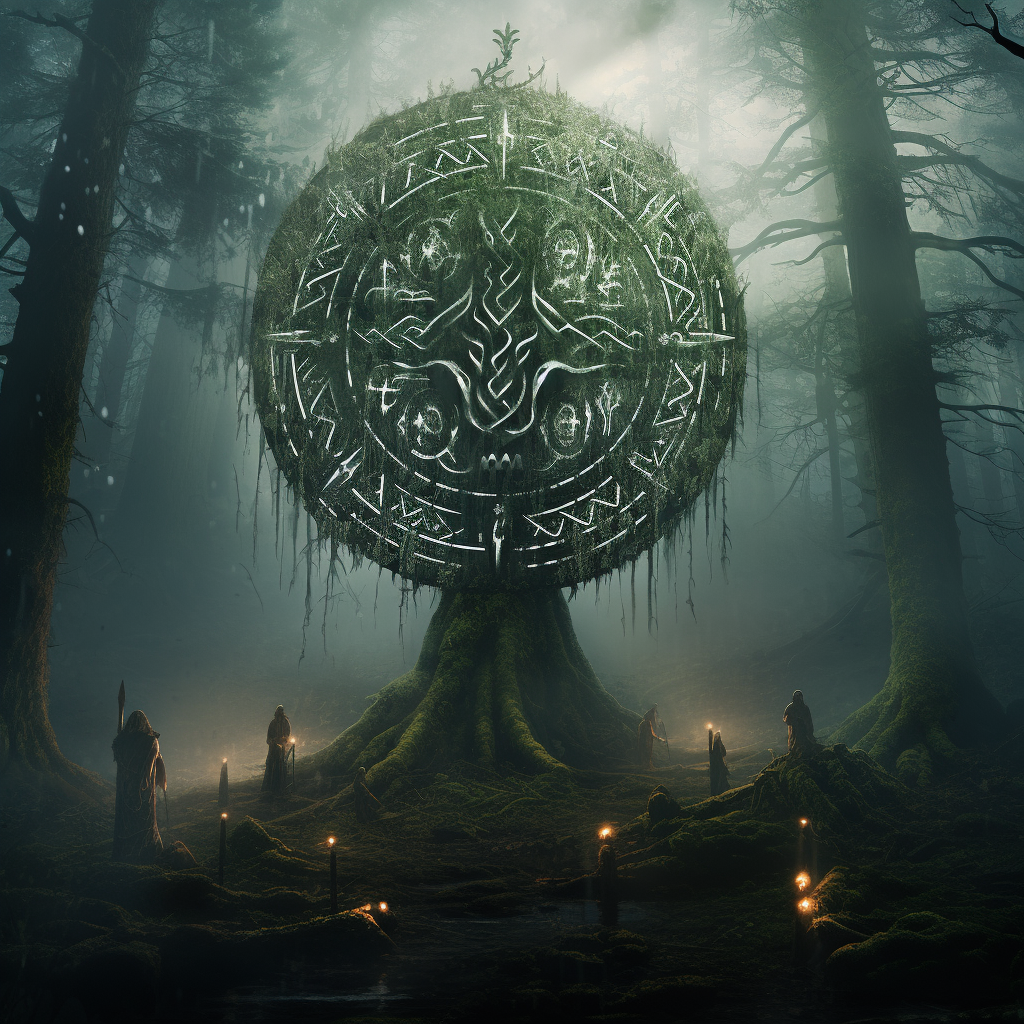
A beginner's guide explaining what Norse runes are, their origins, and their historical context.
Origins of norse runes.
Explore the captivating origins of Norse runes, ancient symbols deeply rooted in the Viking Age's enigmatic history. Originating in Scandinavia around the 2nd century AD, Norse runes are more than mere archaeological curiosities; they are the keystones of understanding an entire culture. This exploration delves deep into the historical and cultural context of Norse runes, unraveling their significance in the Norse world. By tracing the evolution and use of these runes, we connect with the rich heritage and enduring spirit of the Norse people, gaining insights into their unique way of life.

Historical Background: Emergence of Norse Runes
Unraveling the historical background of Norse runes is crucial to appreciate their significance fully. These enigmatic symbols, deeply interwoven with the fabric of Norse history, emerged during a period of vast exploration and conquest. The Elder Futhark, the earliest runic alphabet, is a prime example of the profound impact of Norse runes. It embodies the story of the Norse people extending their influence across Europe, leaving behind tales of raids, trade, and these mysterious inscriptions. The runes carved into various materials are not just letters; they are narratives capturing the Norse's transition, marking significant moments in their rich history.

Norse Runes and the Viking Age Connection
The story of Norse runes is intrinsically linked to the lives and beliefs of the Norse people during the Viking Age. This era, known for its significant transformation and expansion, saw Norse runes travel from the icy shores of Scandinavia to the distant lands of the British Isles. These runes were more than a mere writing system; they were an integral part of the Norse cultural fabric, deeply entwined with their identity and daily life. They offer us reflections of the Norse worldview, their values, and their legendary sagas. Each rune-carved artifact, be it monumental runestones or simple everyday objects, provides a unique window into the Viking Age, revealing trade, warfare, and spiritual practices.

The Runic Alphabet in Norse Culture
Central to understanding Norse runes is the Elder Futhark, the earliest form of the runic alphabet. Consisting of 24 unique characters, each with its sound and meaning, this alphabet was widely used across Scandinavia and other Germanic regions. Over time, the Elder Futhark evolved into various forms, adapting to the changing needs and language of the Norse people. The Younger Futhark, emerging in the Viking Age with a reduced set of 16 runes, and the Anglo-Saxon Futhorc, an extended version of the alphabet, illustrate the dynamic nature of Norse runes. These alphabets, deeply embedded in Norse culture, captured a wide spectrum of human experiences.
Physical Characteristics of Norse Runes
The distinctive angular shapes of Norse runes were a product of both cultural expression and practical necessity. Designed for ease of carving into hard surfaces like wood, stone, and metal, Norse runes typically feature straight lines, ideal for the tools available in the early medieval period. This design, reflecting the Norse environment and practical needs, is a testament to the ingenuity and resourcefulness of the Norse people. Each rune, in its simplicity and efficiency, tells a story of a culture adept at blending functionality with cultural expression, making Norse runes a unique feature of ancient Norse civilization.
Norse Runes in Mythology
In the realm of Norse mythology, runes were far more than mere alphabetic signs; they were symbols of profound mystical and magical significance. The legend of Odin's quest for wisdom, leading to the discovery of Norse runes, highlights their perceived power in divination and magic. These mythological narratives infuse Norse runes with a sense of deep mystery and power, integral to the Norse heritage. They demonstrate the Norse belief in the supernatural potency of language and the written word, passed down through generations and continuing to captivate the imagination and inspire exploration into Norse spirituality.
Uses of Norse Runes in Ancient Times
In ancient Norse society, runes had a versatile and significant role, extending beyond esoteric or religious contexts. Used for practical purposes such as labeling belongings and marking property boundaries, Norse runes were also integral in commemorating the dead on runestones. These runestones, often erected as memorials, were not mere markers of memory; they were storytellers preserving legacies for future generations. There is also evidence of runes being used in magical rituals and spells in Norse culture, offering protection or casting curses. This duality of uses highlights the integral role of Norse runes in connecting the earthly and divine, the living and ancestral spirits.
The Lasting Fascination with Norse Runes in Modern Times
The fascination with Norse runes has only grown in modern times, finding new resonance and relevance. These ancient symbols, transcending their historical roots, are now seen in art, jewelry, and tattoos, symbolizing a connection to a mystical past. Beyond their aesthetic appeal, Norse runes have experienced a resurgence in spirituality and divination. Many people, drawn to the rich Norse heritage, utilize runes for meditation and personal reflection, akin to tarot cards. This modern adaptation underscores the enduring relevance and versatility of Norse runes. Their presence in popular culture, from books to movies and video games, symbolizes ancient wisdom and magical power, reflecting a broad interest in Viking Age myths and practices.
As we've journeyed through the ancient world of Norse runes, we've seen their transformation from simple carvings in wood and stone to powerful symbols steeped in mythology and history. These runes offer us a unique lens through which we can view and understand the Norse culture — a civilization both enigmatic and influential. Their evolution from a practical alphabet to mystical symbols and now a modern cultural icon underscores their enduring appeal and significance. Whether it's through their historical roots, mythological stories, or their contemporary resurgence, Norse runes continue to fascinate and inspire.
We've only scratched the surface of this rich and mystical topic. In upcoming posts, we'll dive deeper into the individual runes, their meanings, and how they continue to influence art, culture, and spirituality today. Stay tuned to unravel more secrets and stories hidden within these ancient symbols. Join us as we continue to explore the captivating world of Norse runes!

What are you looking for?
Popular Searches: ring necklace bracelet arm ring
GET $5 OFF YOUR FIRST ORDER
Receive updates, access to exclusive deals, and more..
Don’t show this popup again
You don't have any items in your cart.
- {property.name}: {property.value}
Shipping & taxes calculated at checkout

- Tales of the Gods
- Vili and Ve
- Fjorgynn and Fjorgyn
- Aegir and Ran
- Skoll and Hati
- Land Spirits
- Ask and Embla
- Huginn and Muninn
- Geri and Freki
- Berserkers and Other Shamanic Warriors
- The Einherjar
- Jörmungandr (Midgard Serpent or World Serpent)
- Tanngrisnir and Tanngnjóstr
- Gullinbursti
- Mjölnir (Thor’s Hammer)
- Aegishjalmur (Helm of Awe)
- Gjallarhorn
- Gungnir (Odin’s Spear)
- Skidbladnir
- Brísingamen Necklace
- Horn Triskelion (The Horns of Odin)
- Nidavellir (Svartalfheim)
- Hel (The Underworld)
- Yggdrasil (World Tree)
- Ginnungagap
- Járngreipr (Járnglófar)
- Viking Runes Meanings
- Viking Sites
- Viking Symbols And Their Meaning
- Viking Tattoos
- Viking Food and Drinks
- Viking Clothing and Jewelry
- Viking Raids and Warfare
- Viking Weapons and Armor
- Viking Trade and Commerce
- Viking Ships
- Viking Politics
- Viking Heritage
- Write for Us
- Search for:
No products in the cart.
Return to shop
Join us as on Patreon and be part of our Viking community. Plus, you can gain premium exposure opportunities, including featuring your company logo and link on our homepage footer or sidebar placement on every page.
- BECOME A PATRON
Blog , Norse Runes , Norse Symbols , Tales of the Gods
The rune wheel: deciphering viking symbols and meanings.
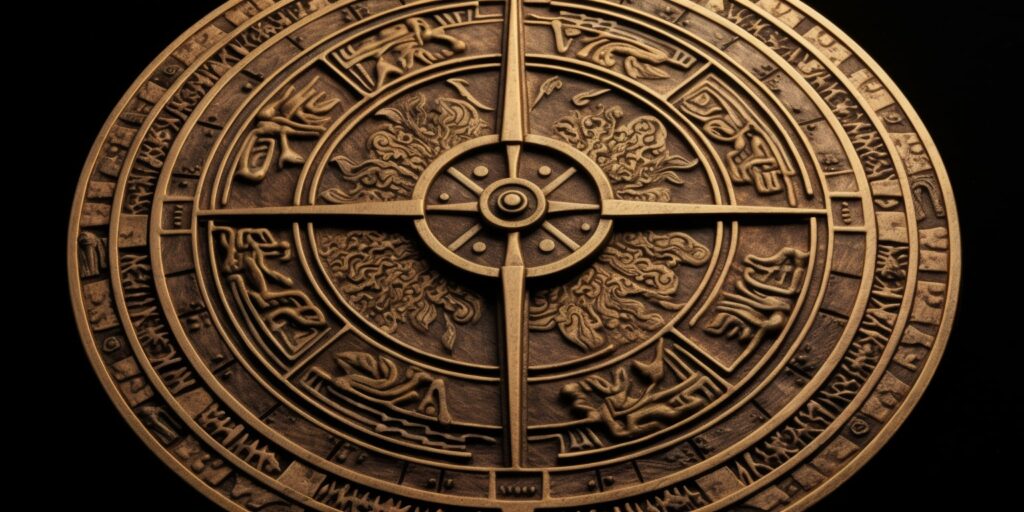
Welcome to the fascinating world of the Rune Wheel, an ancient Viking symbol that continues to captivate and intrigue people today. In this article, we will explore the Rune Wheel’s origins, design, meanings, and cultural significance in Viking culture and Norse mythology. Through our exploration of this powerful symbol, you’ll gain a deeper understanding of the rich tapestry of Viking culture and beliefs.
Key Takeaways
- The Rune Wheel is an ancient Viking symbol with rich cultural significance.
- The design and structure of the Rune Wheel is intricate and full of hidden meanings.
- The Rune Wheel plays a significant role in Norse mythology and the gods and goddesses associated with it.
- The symbol’s cultural significance extends beyond mythology and is still relevant today in modern interpretations and uses.
- Misconceptions about the Rune Wheel abound, but by exploring its symbolism, we can gain a deeper appreciation for its true meanings.
The Origin of the Rune Wheel
To understand the Rune Wheel, you must first explore its origins in Viking culture. The Rune Wheel is a powerful symbol that dates back to ancient times, reflecting the beliefs and values of the Viking people. The Vikings were a seafaring people who lived in Scandinavia from the late eighth to the early eleventh century. They were skilled in trading, raiding, and colonizing, and their culture was rich and complex.
The Rune Wheel is an essential part of Viking culture, representing the connection between the spiritual and physical worlds. The symbol is a circular wheel, with various Viking symbols arranged in different sections. Each section is linked to a different aspect of Viking mythology and culture, with the overall design representing the cyclical nature of life.
The Rune Wheel’s origins can be traced back to the ancient symbols used by the Vikings in their daily lives. These symbols were carved into stones and wood, used on amulets, and featured in their artwork and textiles. The symbols represented various aspects of Viking life, from the natural world to the gods and goddesses they worshipped.
The Rune Wheel is thought to have evolved from these ancient symbols, with the circular shape representing the cyclical nature of life and the connection between the physical and spiritual worlds. The wheel was divided into different sections, with each section featuring a different Viking symbol, such as the hammer of Thor or the Valknut.
The Importance of Viking Culture
Viking culture was complex and multifaceted, reflecting the beliefs and values of the people who lived in Scandinavia during this time. The Vikings had a deep connection to nature, believing that natural forces and elements held immense power. They also believed in the gods and goddesses of Norse mythology, who were thought to be intimately connected to the natural world.
The Vikings were skilled traders and raiders, travelling far and wide to explore new lands and establish new settlements. They were also skilled craftsmen, producing beautiful pieces of artwork and textiles that reflected their culture and beliefs.
The Rune Wheel is a powerful symbol that reflects the complexity and depth of Viking culture. From its origins in ancient symbols to its significance in everyday Viking life, the Rune Wheel represents the cyclical nature of life and the connection between the spiritual and physical worlds.
The Design and Structure of the Rune Wheel
The Rune Wheel consists of eight Viking symbols, each with its unique meaning and interpretation. The symbols are arranged in a circular pattern, with each symbol positioned equidistant from the others. The circular design is significant in Norse mythology, representing the cyclical nature of life and the universe.
The eight symbols on the Rune Wheel are:
Each symbol holds a significant place in Norse mythology and Viking culture. In ancient times, the Rune Wheel was used for divination, with each symbol providing insight into different aspects of life and the future.
The arrangement of the symbols on the Rune Wheel also holds deeper meaning. The symbols opposite each other on the wheel are believed to be complementary, balancing each other out. For example, Fehu and Wunjo represent material wealth and emotional happiness, respectively, and are positioned opposite each other on the Rune Wheel.
The Connection to Norse Mythology
The symbols on the Rune Wheel have strong connections to Norse mythology. Fehu, for example, is associated with the god Frey, who represents fertility and prosperity. Uruz is linked to the god Thor, who embodies strength and power. Ansuz is tied to Odin, the wise and powerful king of the gods.
The Rune Wheel also plays a role in the creation myth in Norse mythology, as it symbolizes the cosmic tree Yggdrasil. The outer ring of the wheel represents the world tree, while the eight symbols represent different worlds connected to Yggdrasil.
The intricate design and symbolism of the Rune Wheel make it a powerful and fascinating symbol in Viking culture and Norse mythology.
Decoding the Viking Symbols on the Rune Wheel
Now that you understand the origin and design of the Rune Wheel, it’s time to decode the Viking symbols within it. Each symbol has its own unique meaning and reflects the complex beliefs and values of Viking culture.
Let’s start with the first symbol, Fehu. This symbol represents wealth, power, and abundance. It was seen as a symbol of good fortune and prosperity, especially in terms of material possessions.
The second symbol, Uruz, represents strength, determination, and resilience. It was associated with the great strength and power of animals such as the wild ox, symbolizing the strength and fortitude needed to overcome challenges.
The third symbol, Thurisaz, represents defense and protection. It was associated with the god Thor and his hammer, Mjolnir, which provided protection against evil forces.
The fourth symbol, Ansuz, represents communication and wisdom. It was associated with the god Odin and his ability to communicate with the spirit world and gain knowledge and insight. It was also seen as a symbol of inspiration and creative energy.
The fifth symbol, Raidho, represents travel and journey. It was associated with the concept of fate and the idea that every journey has a predetermined path or destination.
The sixth symbol, Kenaz, represents knowledge and enlightenment. It was associated with the concept of illumination and enlightenment, representing the pursuit of knowledge and wisdom.
The seventh symbol, Gebo, represents partnership and exchange. It was associated with the concept of reciprocal exchange and shared benefits, symbolizing the importance of relationships and mutual support.
The eighth symbol, Wunjo, represents joy and happiness. It was associated with the concept of inner peace and contentment, reflecting the importance of finding joy and happiness in one’s life.
The ninth symbol, Hagalaz, represents chaos and destruction. It was associated with the idea of natural disasters and unforeseen obstacles, symbolizing the need for resilience and perseverance in the face of adversity.
The tenth symbol, Nauthiz, represents need and deprivation. It was associated with the idea of struggle and hardship, symbolizing the need for perseverance and determination in the face of challenges.
The eleventh symbol, Isa, represents stillness and stagnation. It was associated with the idea of frozen water, symbolizing the need for patience and persistence in the face of obstacles.
The twelfth symbol, Jera, represents harvest and growth. It was associated with the cyclical nature of life, symbolizing the importance of hard work and perseverance in achieving success and prosperity.
By understanding the meanings and symbolism behind each Viking symbol in the Rune Wheel, we gain a deeper appreciation for the rich mythological and cultural traditions of the Viking people.
The Role of the Rune Wheel in Norse Mythology
The Rune Wheel holds a significant place in Norse mythology, intertwining with the beliefs and stories of the Viking people. It was believed that the Rune Wheel represented the cycle of life and death, with each symbol within the wheel holding its own unique meaning and significance.
The gods and goddesses of Norse mythology also played a role in the interpretation of the Rune Wheel. For example, Odin, the chief god, was associated with the symbol of the spear or spearhead, which is often found in the uppermost part of the Rune Wheel. Thor, the god of thunder, was associated with the hammer symbol, which also appears prominently in the wheel.
The Rune Wheel was also used in divination practices, with individuals seeking guidance and insight from the symbols within the wheel. It was believed that the placement and relationship of the symbols to one another could reveal important information about one’s fate and destiny.
The Three Layers of the World
In Norse mythology, the world was believed to be divided into three layers: Asgard, the land of the gods; Midgard, the land of humans; and Niflheim, the land of the dead. Each layer had its own unique set of symbols within the Rune Wheel.
These symbols were associated with the different layers of the world and the gods and goddesses that resided within them. They were often used in rituals and offerings, as well as in storytelling and poetry.
Overall, the Rune Wheel played a significant role in Norse mythology, serving as a powerful symbol of the beliefs and practices of the Viking people. Its intricate design and connection to the gods and goddesses of Norse mythology make it a fascinating and complex subject of study for scholars and enthusiasts alike.
The Cultural Significance of the Rune Wheel
The Rune Wheel held immense cultural significance in Viking society. Its symbolism permeated various aspects of everyday life, from divination practices to spiritual beliefs. Understanding the cultural context of the Rune Wheel illuminates its importance in Viking culture.
Vikings used the Rune Wheel for divination, a practice known as “casting the runes.” This involved tossing small rune stones onto the wheel and interpreting the symbols that landed face up. The Rune Wheel served as a tool for communicating with the gods and gaining insight into the future.
Furthermore, the Rune Wheel was used in spiritual beliefs, particularly in the creation of protective talismans. The wheel’s symbolism was believed to hold powerful magic, and it was often incorporated into amulets and other protective objects.
Beyond divination and spiritual beliefs, the Rune Wheel also held cultural significance in everyday life. Its symbols adorned Viking jewelry, such as pendants and brooches, and were even engraved onto weapons and everyday objects.
The symbolism of the Rune Wheel represented different aspects of Viking culture. The sun, for example, was an important symbol of power and vitality, and the moon represented femininity and intuition. The wheel itself represented the cyclical nature of life and the interconnectedness of all things.
By understanding the cultural significance of the Rune Wheel, we gain insight into the values and beliefs of Viking society. Its symbolism continues to have an impact today, inspiring people to connect with their own spirituality and tap into the power of ancient symbols.
Modern-Day Interpretations and Applications of the Rune Wheel:
The Rune Wheel is a symbol that continues to inspire and captivate people today. Its timeless design and deep symbolism make it a popular choice for tattoos, artwork, and other contemporary uses.
Many people choose to incorporate the Rune Wheel into their spiritual practices, using it for divination or meditation. It is believed that each symbol within the wheel holds a unique power and meaning, providing insight and guidance to those who seek it.
Others are drawn to the Rune Wheel for its aesthetic appeal and connection to Viking culture. It can be found in various forms of artwork, from jewelry to clothing, serving as a reminder of the rich history and legacy of the Norse people.
Overall, the Rune Wheel remains a symbol of power and intrigue in modern times, holding a significant place in both popular culture and spiritual practices. Its enduring relevance is a testament to the lasting impact and influence of Viking symbols on our culture today.
The Mystique of the Rune Wheel: Unraveling Misconceptions
As with any ancient symbol, myths and legends have arisen around the Rune Wheel. However, some of these misconceptions are simply untrue.
Myth: The Rune Wheel is a symbol of Satanism.
This is completely false. The Rune Wheel predates Christianity and has no connection to Satanism.
Myth: The Rune Wheel was used exclusively for divination and magic.
While the Rune Wheel was used for divination, it also served a variety of other purposes in Viking culture, such as marking important events and identifying specific tribes or families.
Myth: The Rune Wheel is a set of instructions for human sacrifice.
There is no evidence to support this claim. The Rune Wheel is primarily a collection of ancient symbols with complex meanings deeply rooted in Norse mythology and culture.
By separating fact from fiction, we can appreciate the true depth and power of the Rune Wheel as a symbol of Viking culture and beliefs.
The Rune Wheel in Pop Culture
From movies to TV shows, books to video games, the Rune Wheel has left its mark on popular culture. This ancient Viking symbol has been featured in various forms of entertainment, captivating audiences with its enigmatic allure.
One of the most popular examples of the Rune Wheel in pop culture is the video game, Assassin’s Creed: Valhalla. The game incorporates the Rune Wheel as a central part of its gameplay, allowing players to explore the Viking world while also learning about the mythology and culture in which the Rune Wheel originated.
Additionally, the Rune Wheel has been featured in movies such as Thor and The 13th Warrior, as well as in popular TV shows like Vikings and Game of Thrones. The symbol has become synonymous with Viking culture and has helped to further its representation in mainstream media.
Artists and designers have also drawn inspiration from the Rune Wheel. Its intricate design and rich symbolism have translated into various forms of artwork, from tattoos to clothing designs. The Rune Wheel has become a popular choice for those looking to incorporate Viking symbolism into their personal style.
The Rune Wheel’s influence in pop culture showcases its timeless relevance and enduring impact. Its symbolism and meanings continue to captivate and inspire, connecting us to the ancient world of the Vikings and their culture.
Exploring the Symbolic Meanings of the Rune Wheel
Are you curious about the deeper meanings behind the Rune Wheel? This ancient Viking symbol is rich with symbolism and can be interpreted in many ways. Let’s explore some of the symbolic interpretations associated with the Rune Wheel.
One interpretation is that the Rune Wheel represents the cyclical nature of life, death, and rebirth. The wheel’s design, with its interconnected symbols, symbolizes the interconnectedness of all things and the ever-repeating cycles of life.
Another interpretation is that each symbol on the Rune Wheel has a specific meaning and can be used for divination purposes. By casting the runes and interpreting the symbols that appear, one can gain insight into their past, present, and future, as well as receive guidance on important decisions.
The Rune Wheel can also be seen as a representation of balance and harmony. The symbols within the wheel can be interpreted as embodying opposing forces that must be balanced to achieve a harmonious existence. For example, the symbol for fire may represent passion and energy, while the symbol for water represents emotions and intuition. Balancing these opposing energies can lead to a harmonious and fulfilling life.
Finally, the Rune Wheel can also be seen as a representation of personal growth and transformation. As one moves through the various cycles of life, they encounter challenges and obstacles that force them to grow and evolve. The Rune Wheel’s symbols can be seen as tools for personal growth and transformation, helping individuals overcome obstacles and reach their full potential.
The interpretations of the Rune Wheel are endless, and each individual may find their own personal meaning within this ancient symbol. Whether you use it for divination, seek balance and harmony, or strive for personal growth, the Rune Wheel can serve as a powerful tool on your journey of self-discovery.
You have now delved into the fascinating world of the Rune Wheel, an ancient Viking symbol that holds immense cultural and mythological significance. Through exploring its origins and design, decoding its symbols, and understanding its role in Norse mythology, you have gained a deeper appreciation for the rich tapestry of Viking culture and beliefs.
The Rune Wheel’s influence extends beyond ancient times; it continues to captivate and inspire modern-day interpretations and applications, from tattoos to artwork. While myths and misconceptions may surround the Rune Wheel, the truth behind this powerful symbol remains undeniably captivating.
By exploring different interpretations and symbolic meanings of the Rune Wheel, you can unlock its versatility and uncover its depth. Whether used for spiritual purposes or personal inspiration, the Rune Wheel remains a symbol of power and enigma.
Thank you for joining us on this journey through the Rune Wheel and the mystical world of Viking culture. We hope you have gained a deeper understanding and appreciation for this ancient symbol and its impact on our world today.
What is the Rune Wheel?
The Rune Wheel is an ancient Viking symbol that holds significant meaning in Norse mythology and culture. It is a circular arrangement of Viking symbols that represent various concepts and ideas.
What is the origin of the Rune Wheel?
The exact origin of the Rune Wheel is unknown, but it is believed to have roots in Viking culture. Historians trace its existence back to ancient Norse societies, where it played a crucial role in their spiritual and cultural practices.
How is the Rune Wheel designed?
The Rune Wheel is designed as a circular arrangement of Viking symbols. Each symbol within the wheel has a specific placement and connection to other symbols, creating a complex structure that reflects the interconnectedness of Norse mythology and culture.
What do the Viking symbols on the Rune Wheel mean?
Each Viking symbol on the Rune Wheel holds its own unique meaning. By deciphering these symbols, we can gain insights into different concepts such as strength, protection, wisdom, and more. The meanings of the symbols are deeply rooted in Viking beliefs and cultural significance.
How does the Rune Wheel relate to Norse mythology?
The Rune Wheel is closely intertwined with Norse mythology and plays a significant role in understanding the gods, goddesses, and epic tales of the Viking world. By studying the connections between the Rune Wheel and Norse mythology, we can gain a deeper understanding of the cultural and spiritual beliefs of the Vikings.
How is the Rune Wheel used in contemporary times?
The Rune Wheel continues to inspire and captivate people in modern times. It is often used in various forms of art, such as tattoos, jewelry, and artwork, as a way to honor Viking culture and symbols. The Rune Wheel’s enduring relevance is a testament to its timeless appeal.
Are there any misconceptions about the Rune Wheel?
Over time, some misconceptions and myths have surrounded the Rune Wheel. It is important to separate fact from fiction and debunk any misunderstandings. The Rune Wheel holds its own inherent meanings and should be understood within the context of Viking culture and mythology.
How does the Rune Wheel influence popular culture?
The allure of the Rune Wheel has found its way into popular culture , appearing in movies, books, and other forms of entertainment. Its presence in popular culture showcases its impact and influence on modern media, further cementing its status as an iconic Viking symbol.
What are the symbolic meanings of the Rune Wheel?
The Rune Wheel holds a wide range of symbolic meanings, which can vary based on personal interpretations. Some common interpretations include balance, interconnectedness, spiritual growth, and protection. Exploring the symbolic meanings of the Rune Wheel allows for a deeper appreciation of its significance in Viking culture.
Username or email address *
Password *
Remember me Log in
Lost your password?
- Search Please fill out this field.
- Manage Your Subscription
- Give a Gift Subscription
- Newsletters
- Sweepstakes
- Flight Deals
Fly to Europe for as Little as $72 One-way With This Airfare Sale
Destinations include London, Paris, Rome, and others.
:max_bytes(150000):strip_icc():format(webp)/cappetta-c8d1fbe1db354ff8a42e3c1e8b140942.png)
Getty Images
For Olympics viewers that have recently caught Paris wanderlust, a low-cost carrier has affordable flights to make your trip to France a reality. Norse Atlantic Airways recently updated several one-way flight deals which include New York (JFK) to Paris (CDG) for as little as $112 one-way throughout the fall and even into 2025. From the west coast, travelers can score one-way flight deals from Los Angeles (LAX) to Paris (CDG) for as little as $188 throughout the fall. All of the deals are located on Norse’s main homepage . Travelers can filter the flight results by inputting their home city or destination, and even set a maximum budget. Beyond Paris, travelers can also get deals to London's Gatwick airport for as low as $72 one-way. For example, Norse is selling a one-way from JFK to London's Gatwick on January 24, 2025 for $72. For travelers not familiar with Gatwick, the airport is approximately a 44 minute train ride or 1 hour 45 minute car ride from London's city center. The smaller airport can sometimes offer lower fares for passengers when compared to London’s Heathrow airport. The airline is also offering discounts on flights to Rome from JFK for $149 one-way, and to Berlin from JFK for $139 one-way. Other deals listed include New York (JFK) to Athens, Greece (ATH) for $155 one-way, and New York (JFK) to Oslo, Norway (OSL) for $173 one-way. The discounted fares are in Norse's Economy Light cabin, which only includes one personal item and has a change fee. Travelers have the opportunity to upgrade to additional cabins such as Economy Classic which bundles in a personal item and carry-on, as well as standard checked bag. The airline also offers a Premium cabin that includes two meal services, and premium boarding. Norse was founded in 2021 and operates a fleet of Boeing 787 Dreamliners. The airline has been on the move with new routes including a Las Vegas to London route, as well as Boston to London .
Related Articles

IMAGES
COMMENTS
In Norse society, movement and travel played a crucial role in shaping their culture and way of life. The Vikings were renowned for their exploration and conquest, traveling vast distances by sea to trade, raid, and settle new lands. The Raidho rune symbolizes the importance of movement and progress in Norse culture and encourages the pursuit ...
One of the most popular Viking symbols associated with protection is the Helm of Awe. The symbol is made up of eight rune staves, arranged in a circular pattern, and is believed to offer courage and protection to the wearer. Another symbol is the Valknut, which is made up of three interlocking triangles.
Viking Travel Rune Skinny Silver Band Ring. The meaning of Viking runic symbols. Runes were primarily created to function as letters to make up a language. But they were much more than just letters. Each rune symbol is a symbol of some cosmological power. To manually write or engrave a runic symbol was to invoke and direct the force it stood for.
The Runes (Viking symbols) and their meaning. Let's quickly recap what runes are. These were the Viking's version of an alphabet, called the Futhark, and they're chock-full of mystery and magic. ... Raidho: The rune of travel, rhythm and spontaneity; Sowilo: The rune of the sun, ...
1. Algiz The most well-known Viking rune out there, Algiz resembles a trident, or a lowercase l with a v intersecting along the top. Algiz stands for protection as well as other important qualities, like defense and one's ability to survive. [2] This symbol was also known as the "Elhaz" rune, which means elk.
The Runic Alphabet and Its Meanings. The Modern Relevance of Ancient Symbols. 20 Norse Bind Runes for Daily Life. #1: Protection in the Warrior's Shield. #2: Prosperity in the Merchant's Ledger. #3: Harmony in the Homestead Hearth. #4: Victory on the Battlefield. #5: Guidance on the Voyager's Compass. #6: Wisdom in the Seer's Stones.
Step 6: Use your Bind Rune. This is the last step, I promise! After you create your bind rune, put it somewhere where you can see it. For example, in your altar, your work desk, at your front door, carry it in your handbag…. This will serve as a reminder of your goal. Keep the bind rune until you achieve it.
The power of runes extends beyond success and personal growth, as they can also provide potent protection against negativity, harm, and danger. In this blog post, we'll explore the best runes for protection and how to harness their energies to create a safer, more secure environment for yourself and your loved ones. I. The Protective … The 3 Best Runes For Protection Read More »
The Triceps is included in Rudolph Kuch's "The Book of Signs", and is described as "an old Nordic sign" and "a symbol of heavenly power". Famously used by the Japanese car manufacturer Mitsubishi Motors. It has not been found to have any connection to Vikings or the Norse world. Sunwheel / The Cross of Wotan.
Paint each rune symbol onto the wood, all the while infusing them with your protective intent. Let your intentions flow through the brush strokes, infusing each symbol with the energy you seek to manifest. 3. Allow the paint to dry thoroughly, ensuring that every stroke protects its objective and energy. 4.
Safe Travel Rune Viking Pendant in 925 Sterling Silver. The safe travel rune - The talisman for travellers is Raidho which is ascribed to the god Thor. When combined with Algiz, for protection, the result is a powerful bind rune for safe travel. The use of runes is ancient, probably arising almost simultaneously with the use of runes as an ...
The Elder Futhark runic alphabet has 24 symbols, each with its own meaning. The 24 runes are divided into 3 groups of 8 known as aetts. Aett is Old Norse for "family.". Each family of runes is attributed to gods. The first aett is ruled by twins Freyr and Freya. The 2nd aett is ruled by Mordgud and Hagalaz (Heimdall).
Summon your inner viking with the Norse Viking Runes Subscribe to Our Newsletter 125.000 Join the List of Subscribers Proudly featured on: A Comprehensive Guide to Viking Runes: Meanings, Origins, and More The earliest forms of the Germanic language were written using Viking Runes (Norse Runes) during the Roman era. They were eventually used by … Home Read More »
The Vegvisir, also known as the runic compass or the Viking compass/Nordic compass made of eight Viking rune staves, is a symbol of protection and guidance believed to be used as a compass by Vikings. The word vegvisir means 'wayfinder' and 'sign post' in Icelandic language.. Although it is commonly known as the Viking compass and associated by some people with the voyages Vikings made ...
Thurisaz is a rune that is often associated with protection. Its meaning can be traced back to the Old Norse word for "thorn," which was used as a symbol of defense. In rune readings, Thurisaz is often seen as a sign that caution is needed. It can represent obstacles or challenges that must be overcome.
Viking Runes (Norse Runes) were created in the Roman era to write the earliest forms of the Germanic language. They were eventually used by the Norse, Anglo-Saxons, and Germans. For over a thousand years, the runes evolved into writing styles that fit the needs of contemporary Germanic culture. This guide describes each Rune - its symbol ...
The Elder Futhark has 24 runic letters, each with its own symbolic meaning. The Elder Futhark predates the Viking Age but its symbols are still used today for their believed mystical power.Each Elder Futhark rune has a unique symbol, name, English meaning, symbolism, and sound. The name of each rune is pronounced according to Old Norse language, which is what people use in spiritual practices ...
A beginner's guide explaining what Norse runes are, their origins, and their historical context.Origins of Norse RunesExplore the captivating origins of Norse runes, ancient symbols deeply rooted in the Viking Age's enigmatic history. Originating in Scandinavia around the 2nd century AD, Norse runes are more than mere archaeological curiosities; they are the keystones of understanding an ...
Zeteon. • 1 yr. ago. There is a sigil for safe travels in magical texts from medieval Iceland. As others have said though, the way in which this society used galdr and bindrunes is rather distinct from how they would've been used centuries prior during the age of the vikings. However, far less evidence exists regarding magical practices from ...
Viking runes were not for everyday use. The Northmen's history was told orally, and runes used only to record moments of great importance. ... There's also evidence that the travel was not a one-way thing. The 4 th century Gothic alphabet, derived by the Greeks to translate the bible, contains two characters than can only have come from runes.
Joy, happiness, harmony. Each symbol holds a significant place in Norse mythology and Viking culture. In ancient times, the Rune Wheel was used for divination, with each symbol providing insight into different aspects of life and the future. The arrangement of the symbols on the Rune Wheel also holds deeper meaning.
Safe Travel Rune Sticker, Viking Rune, Good Vibes, Vinyl Sticker, Decals, Elder Futhark, Witchcraft, Norse Symbol (3.7k) Sale Price $2.49 $ 2.49 $ 3.33 Original Price $3.33 (25% off) Add to Favorites Silver Traveller's Bind Rune Necklace, Norse Viking Safe Journey Sigil Pendant with Silver Chain ...
Norse Atlantic Airways recently updated several one-way flight deals which include New York (JFK) to Paris (CDG) for as little as $112 one-way throughout the fall and even into 2025.